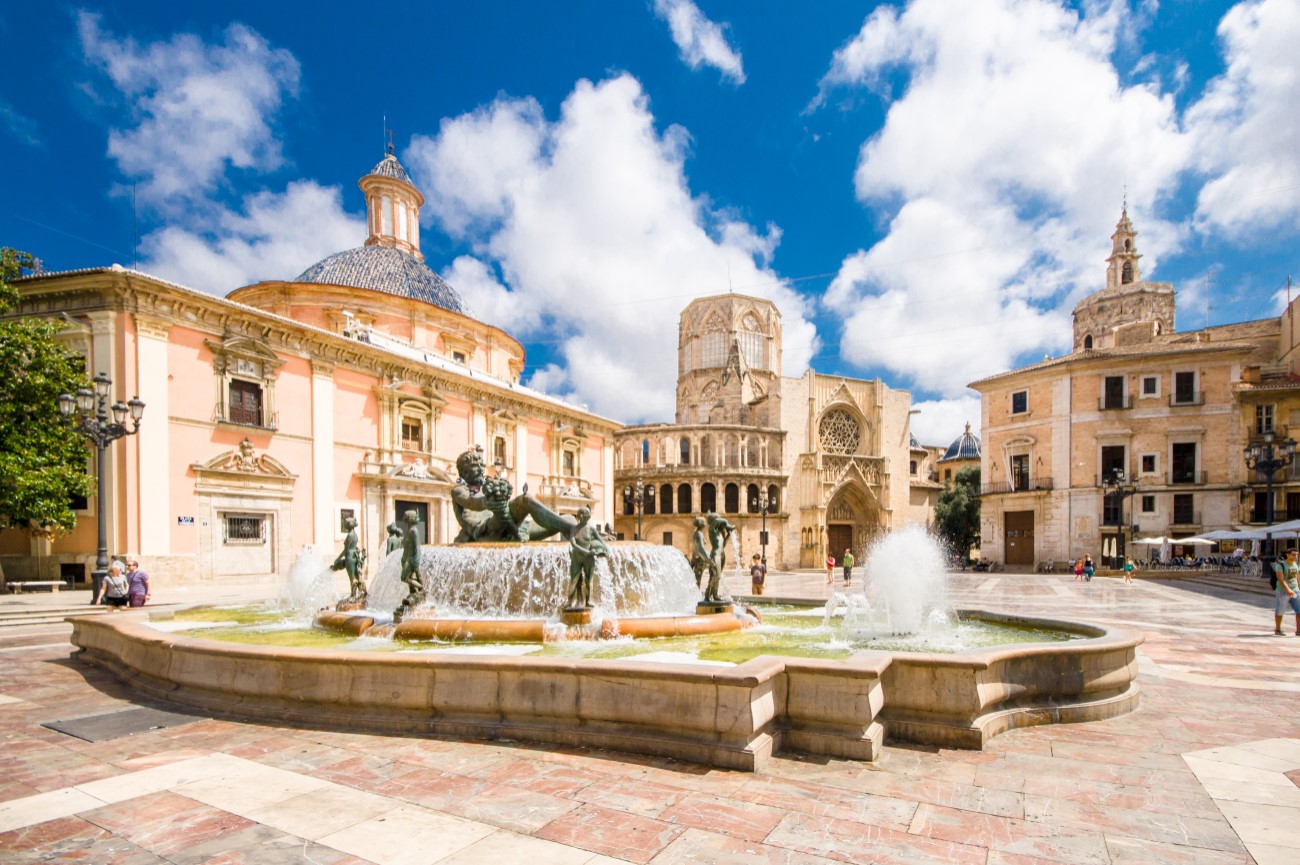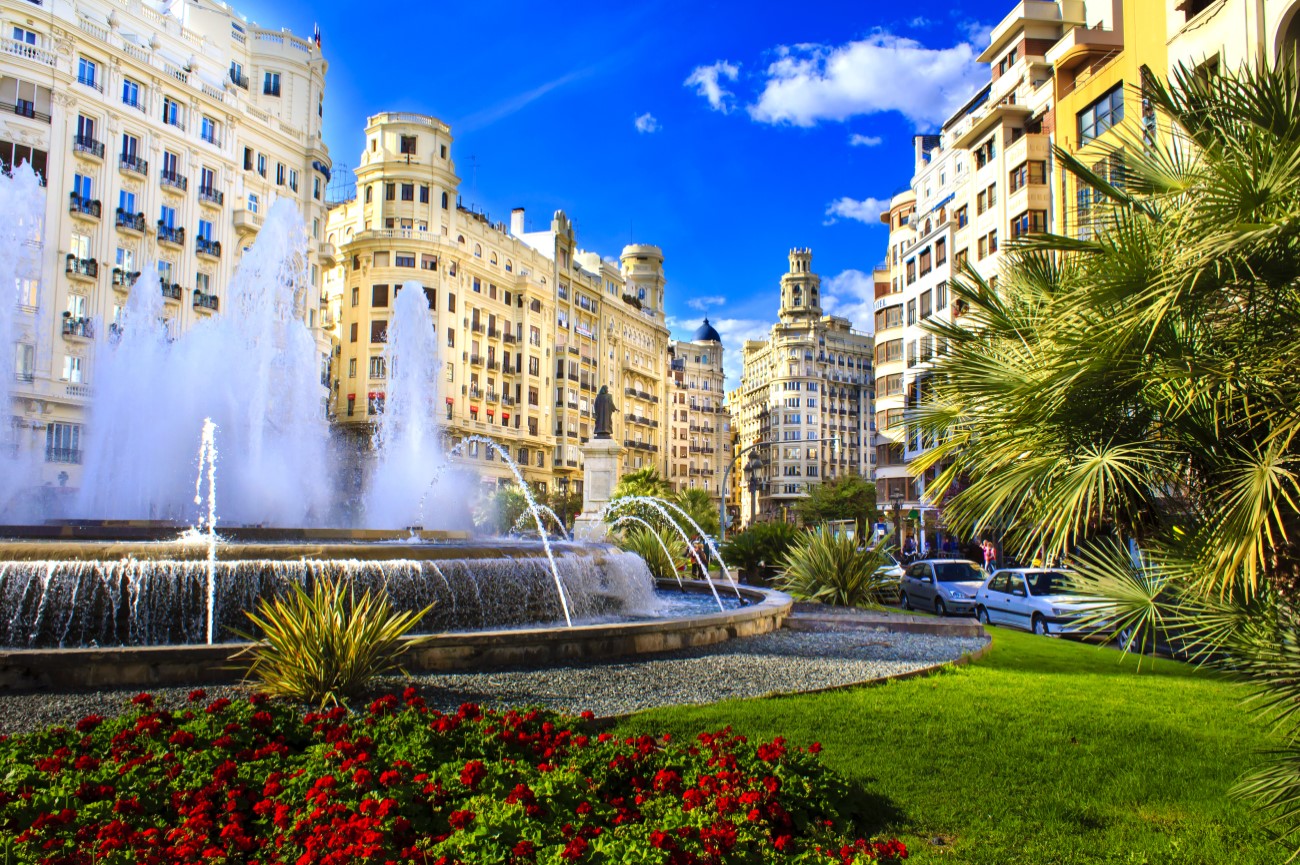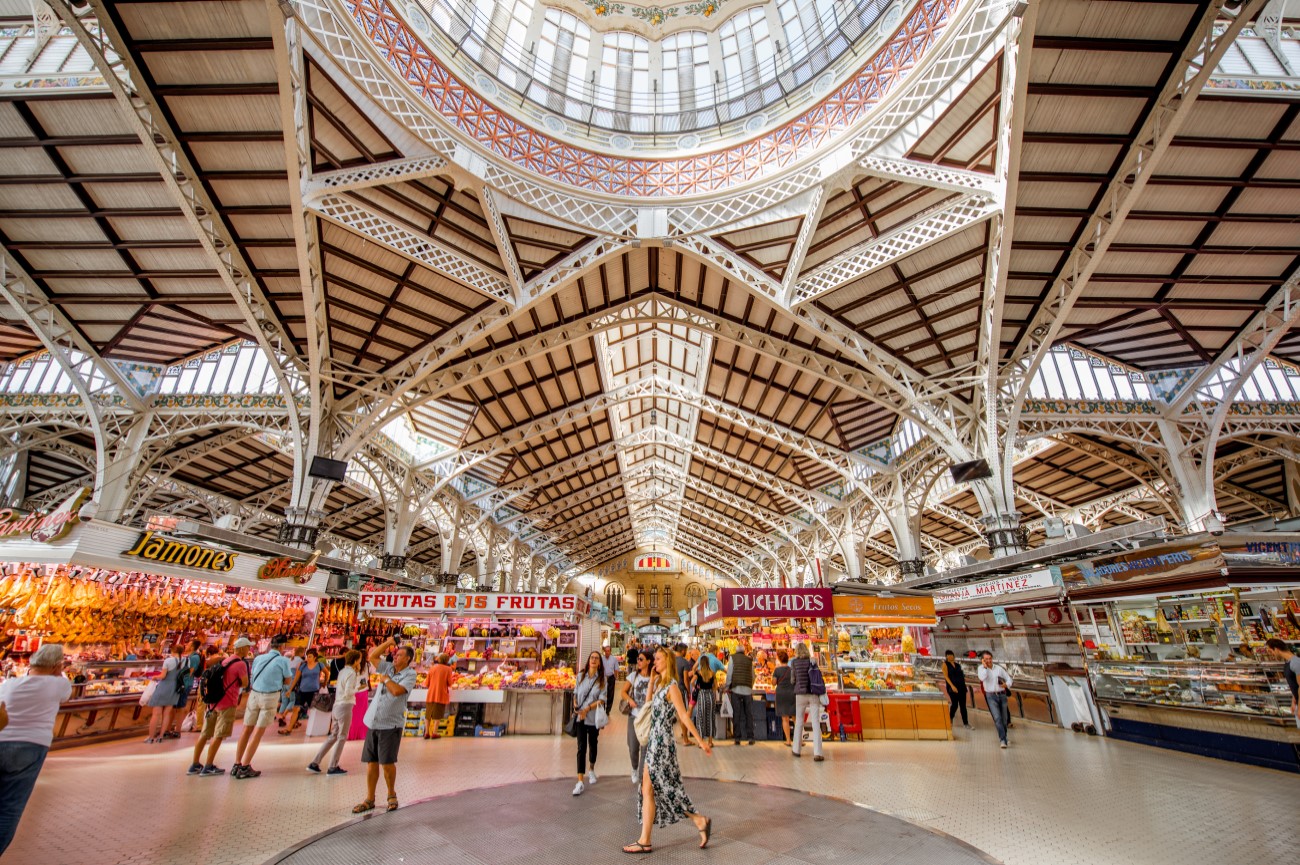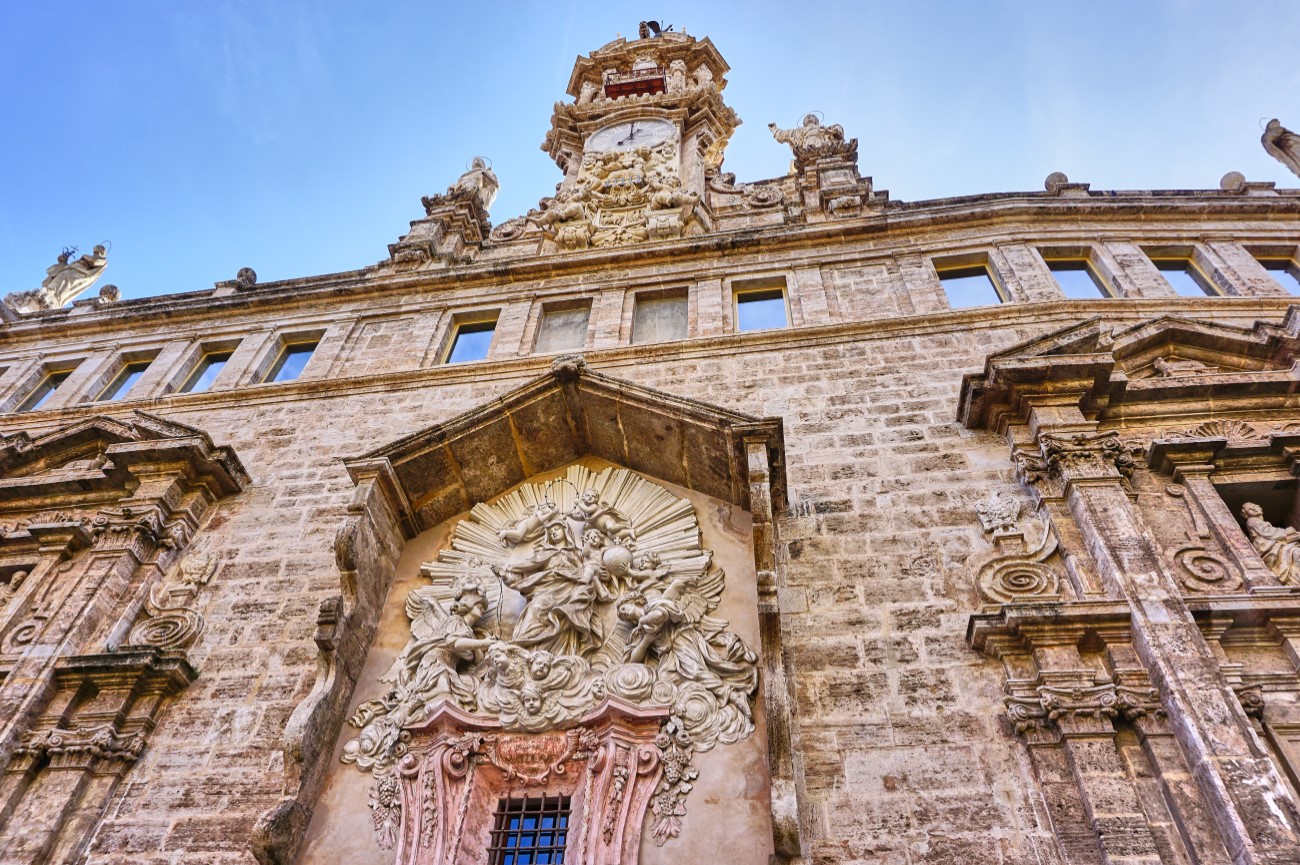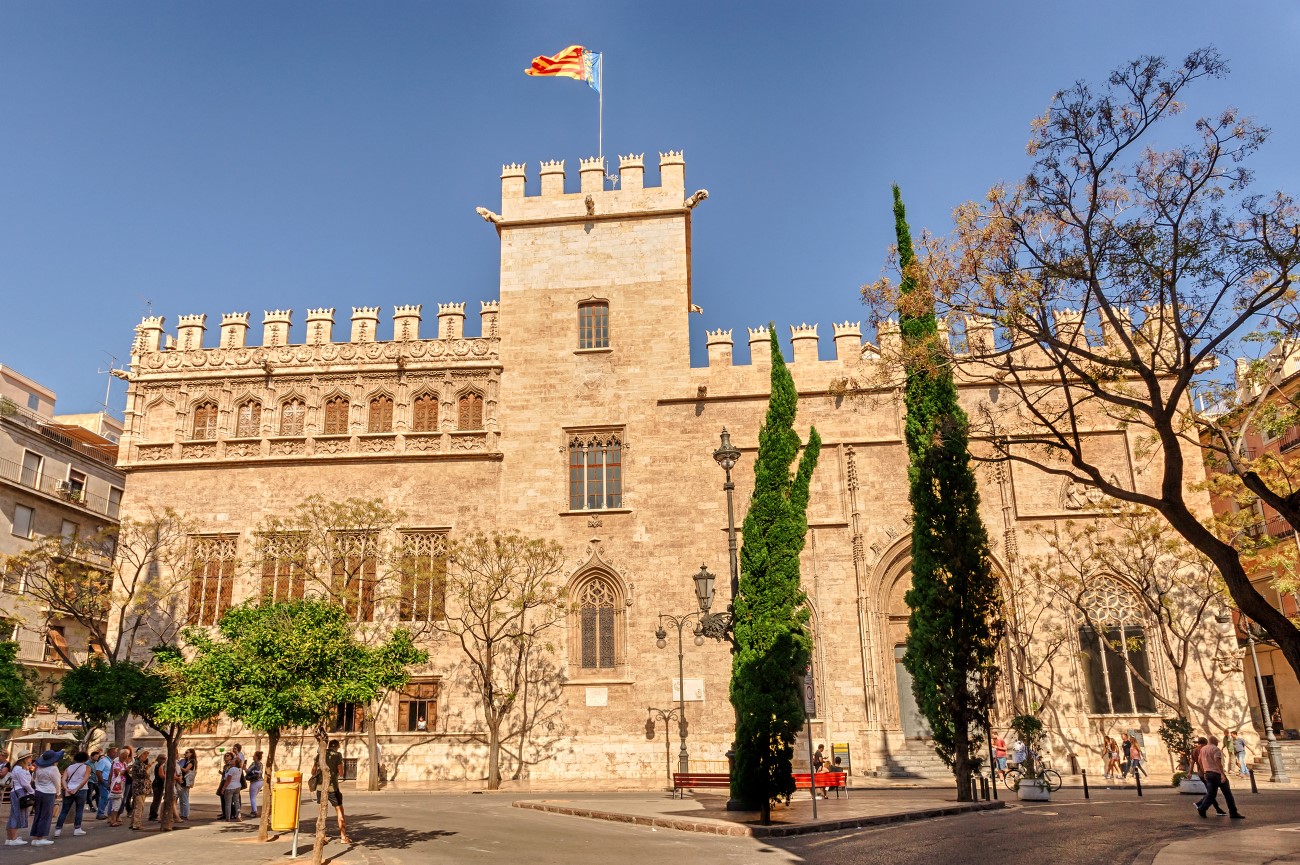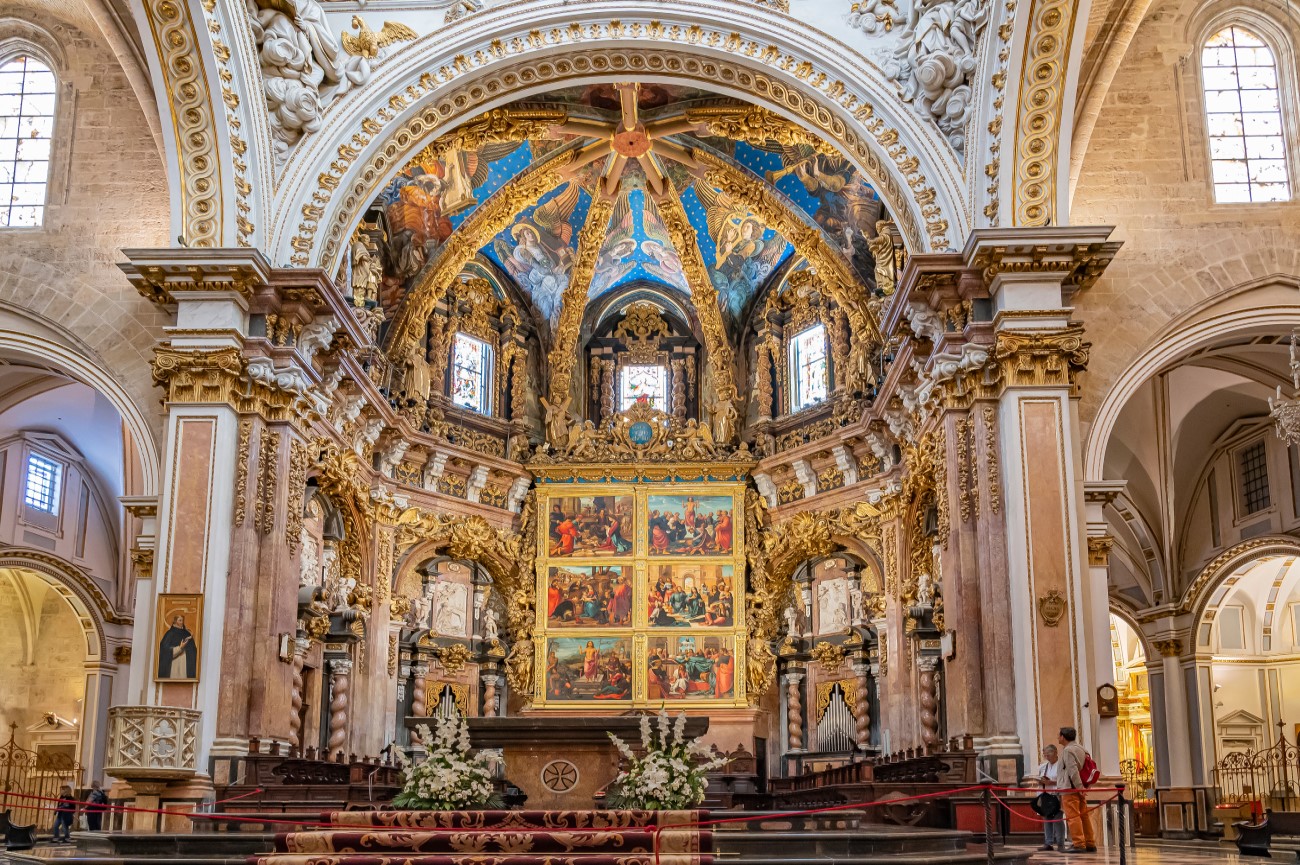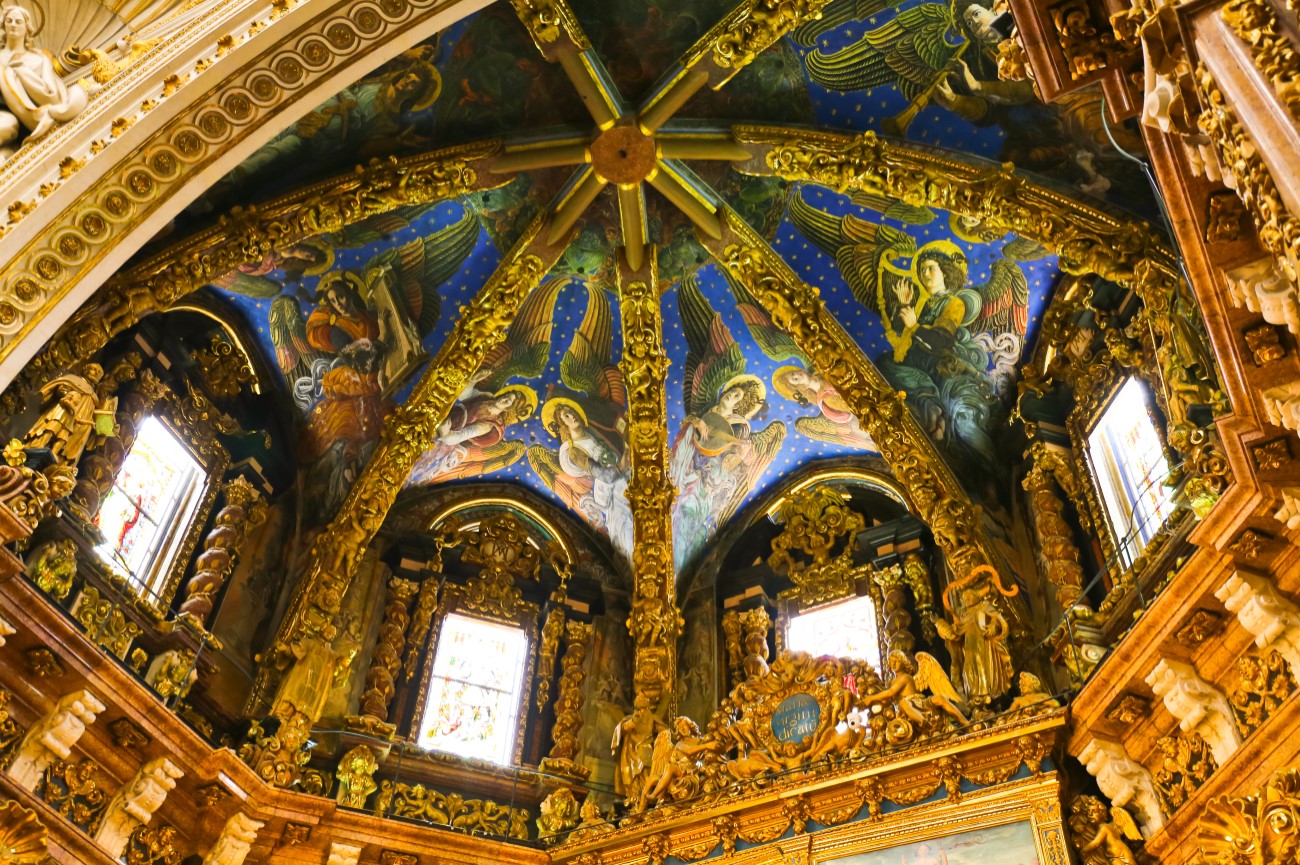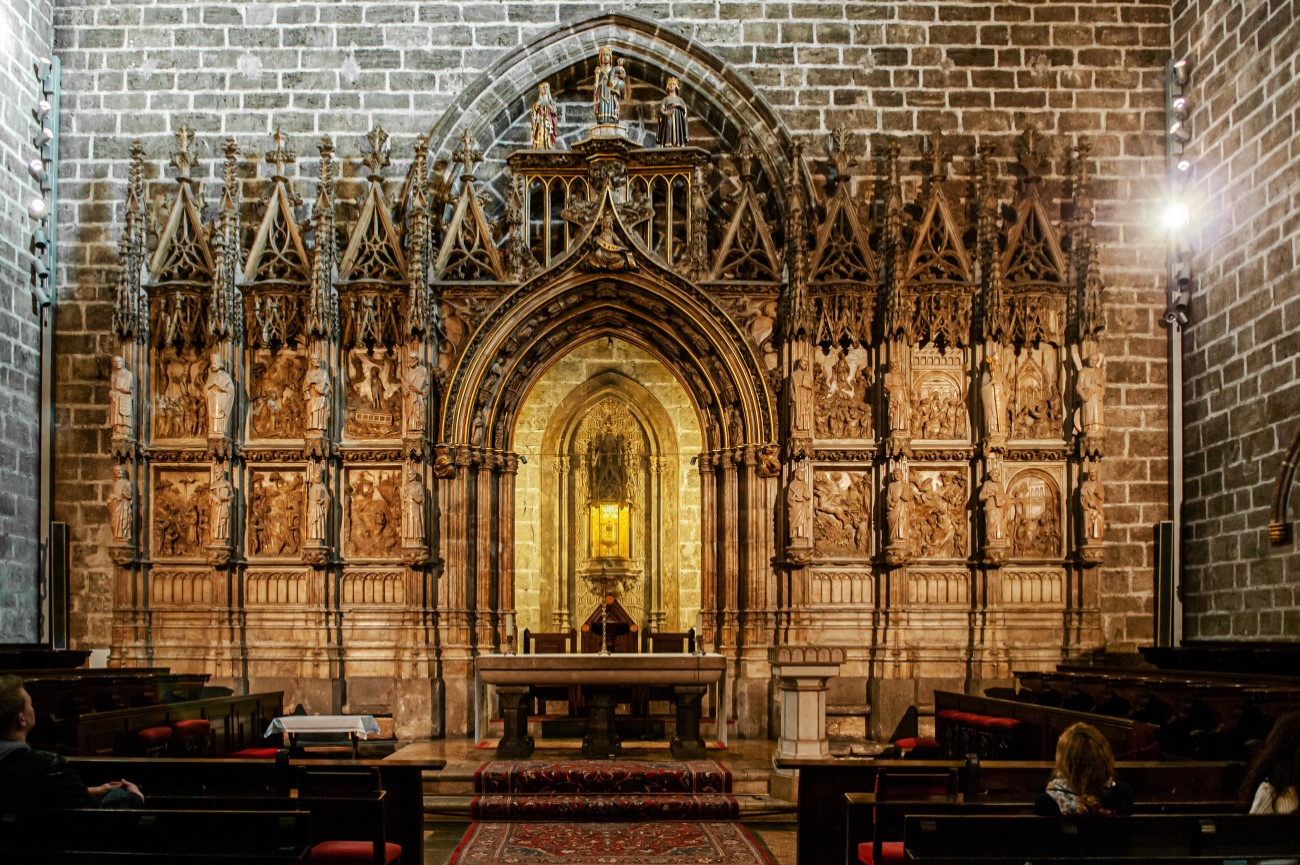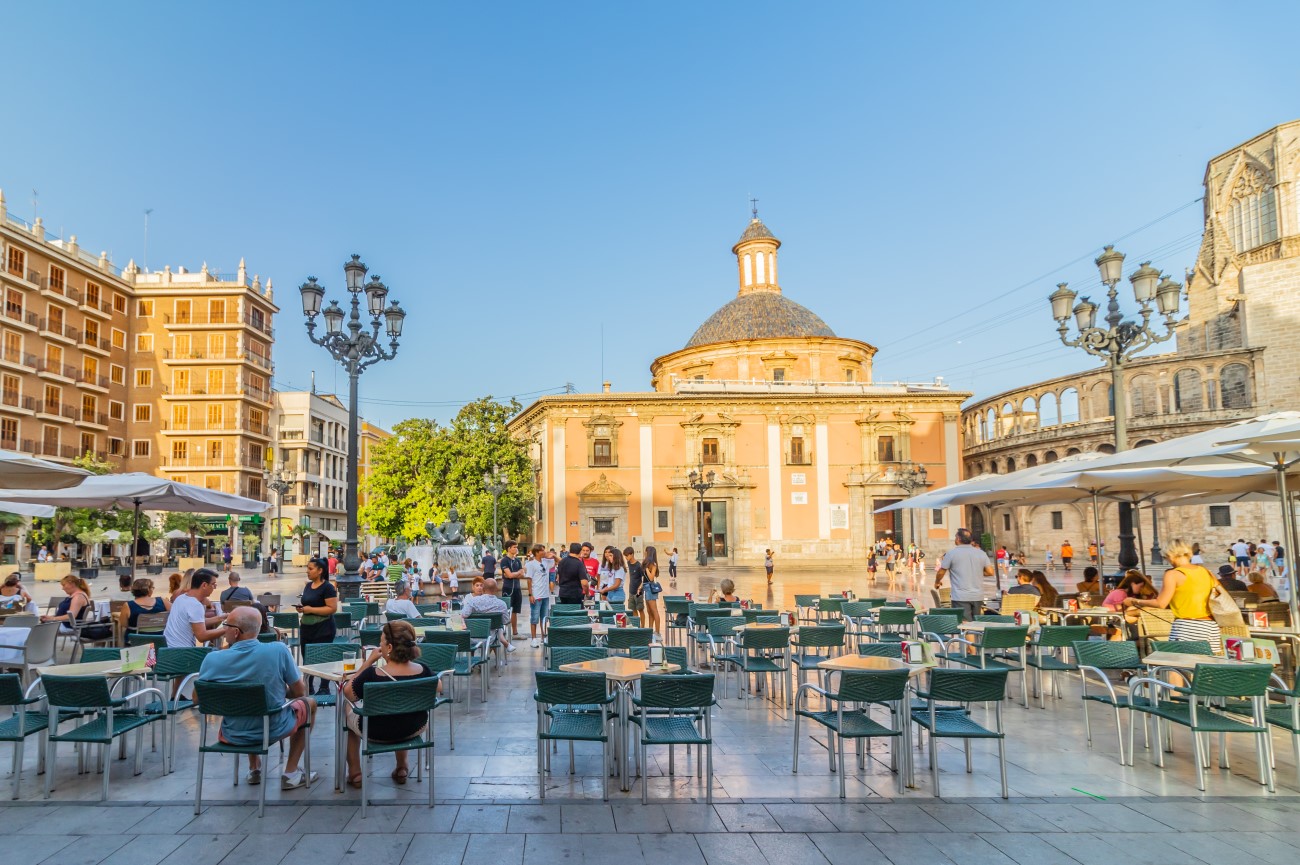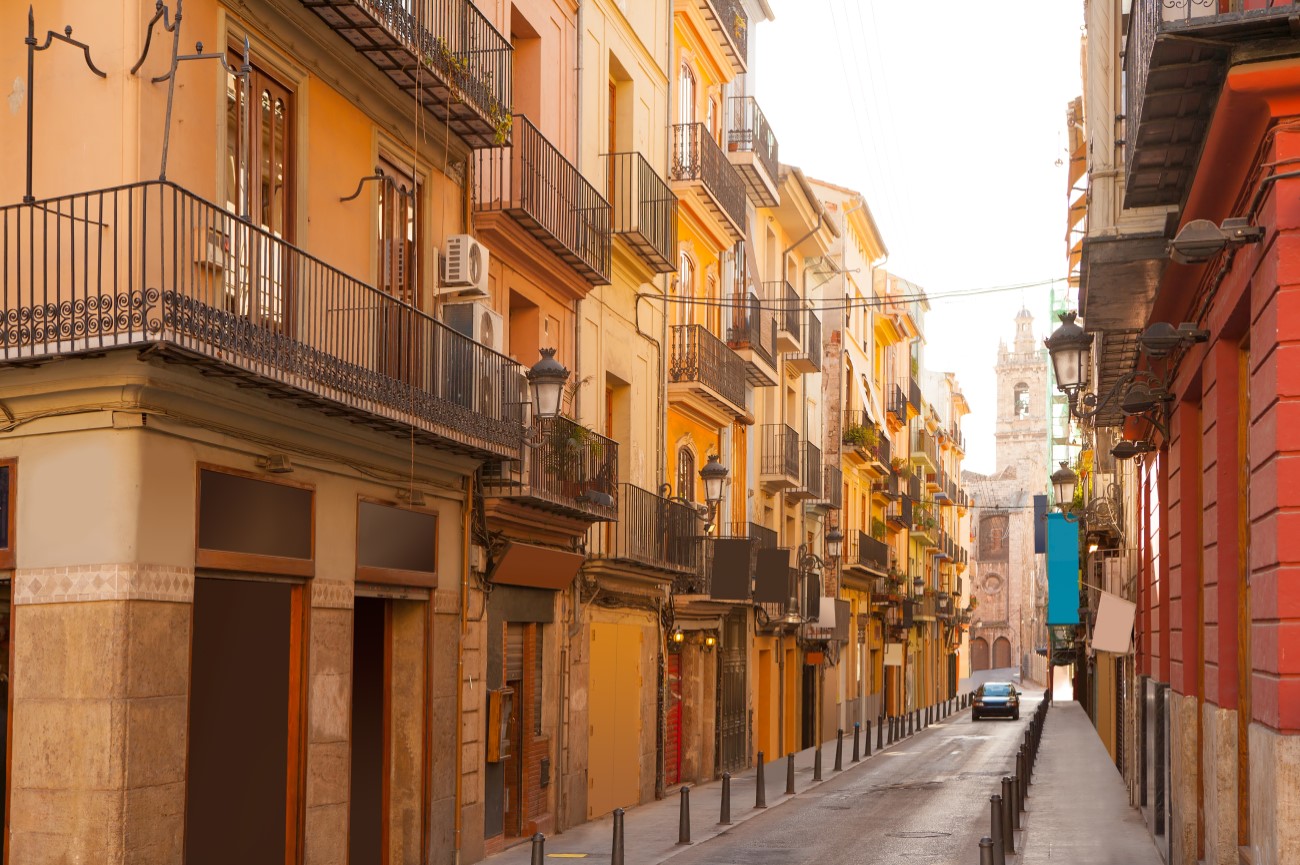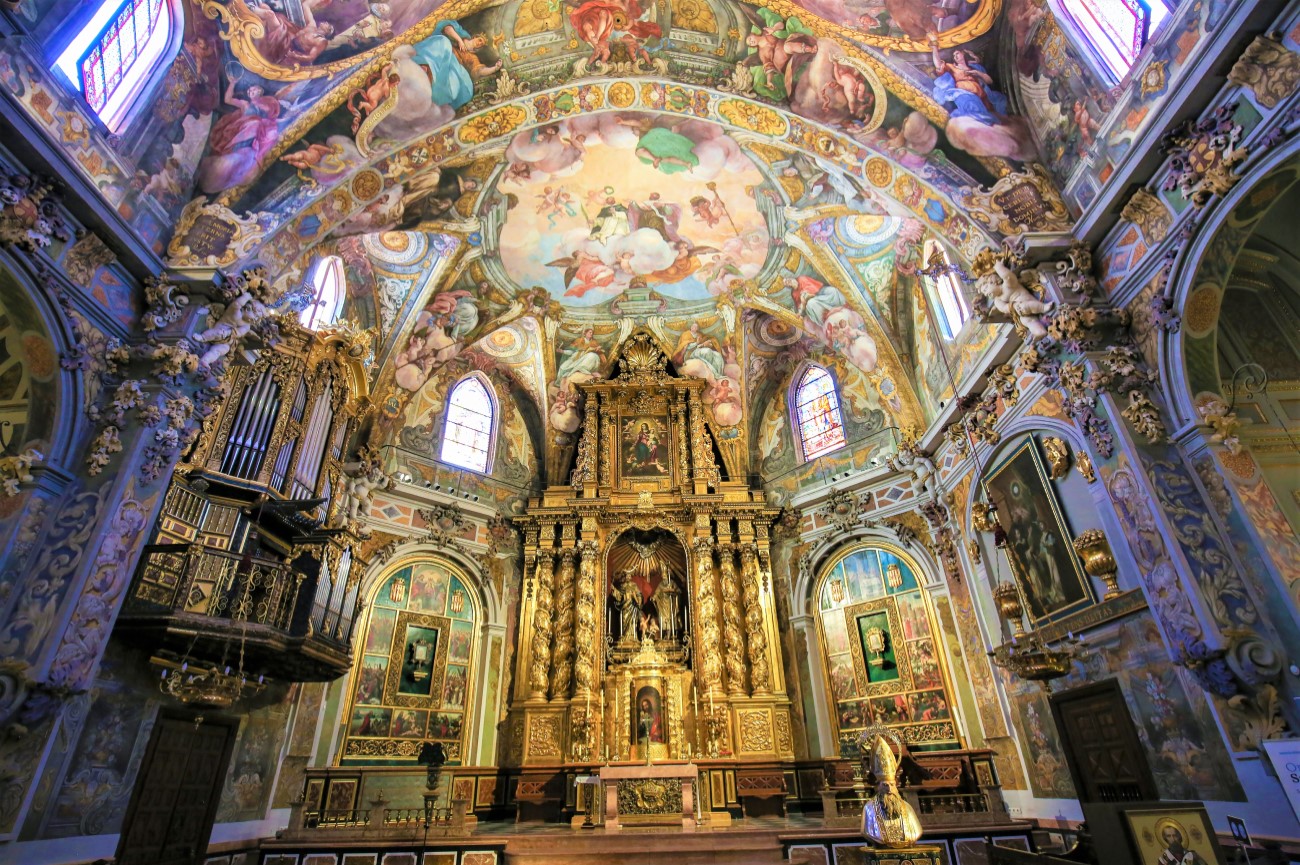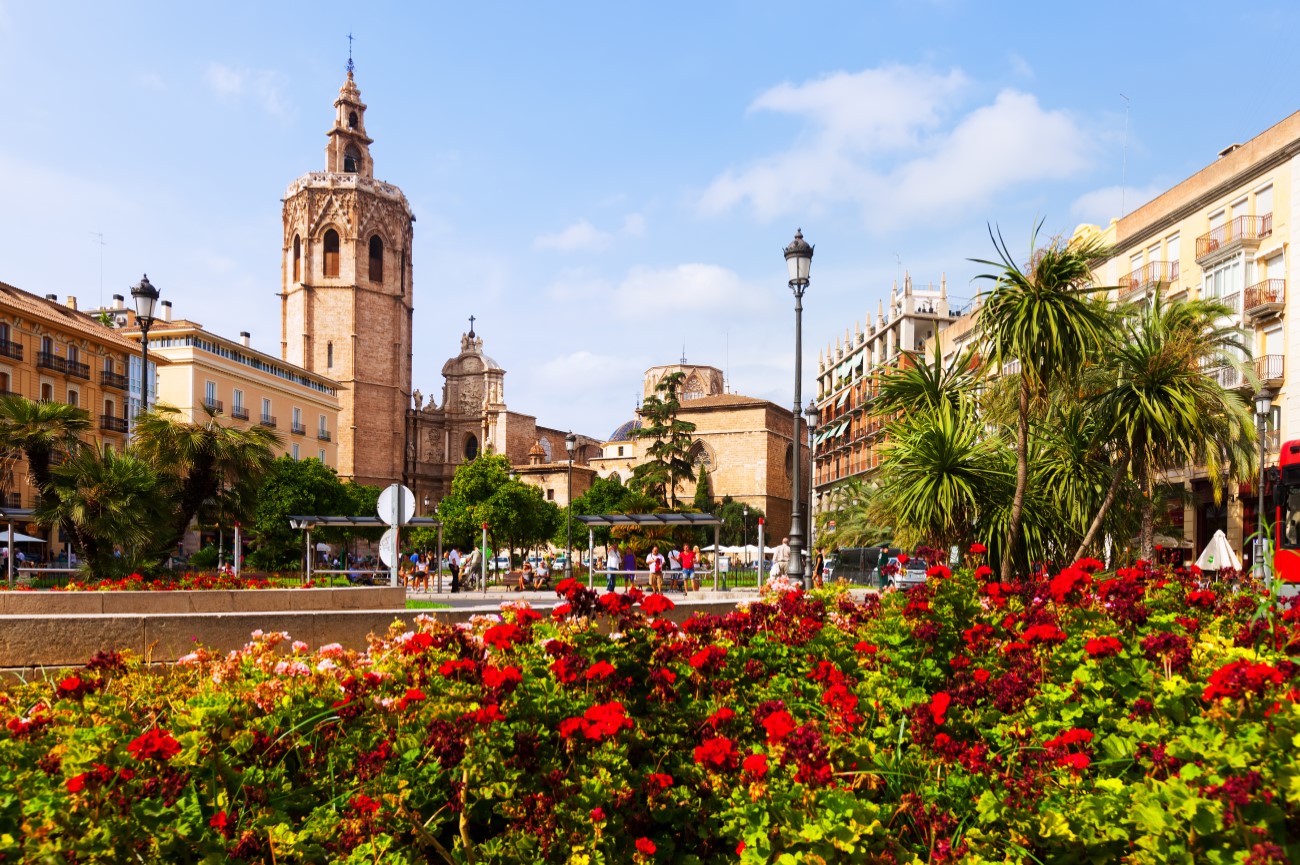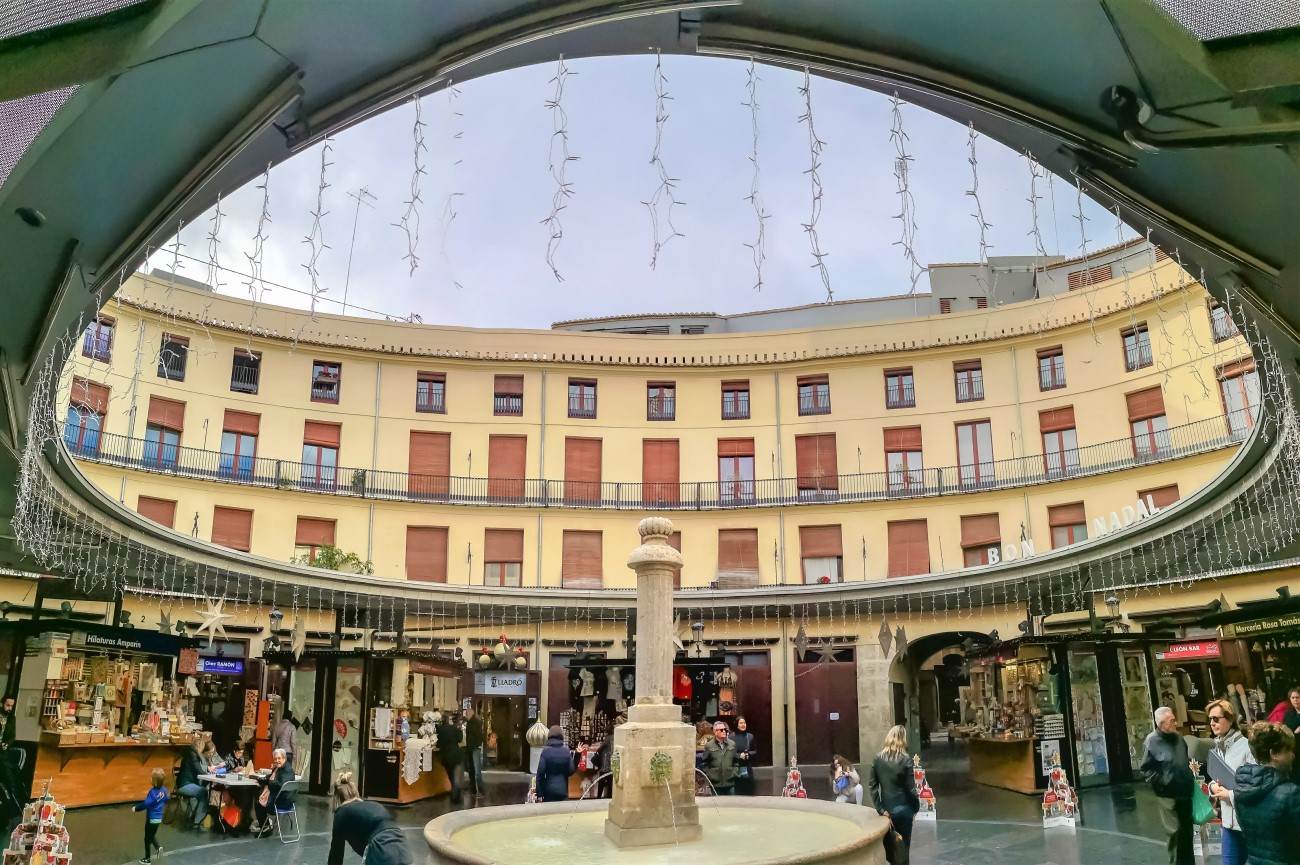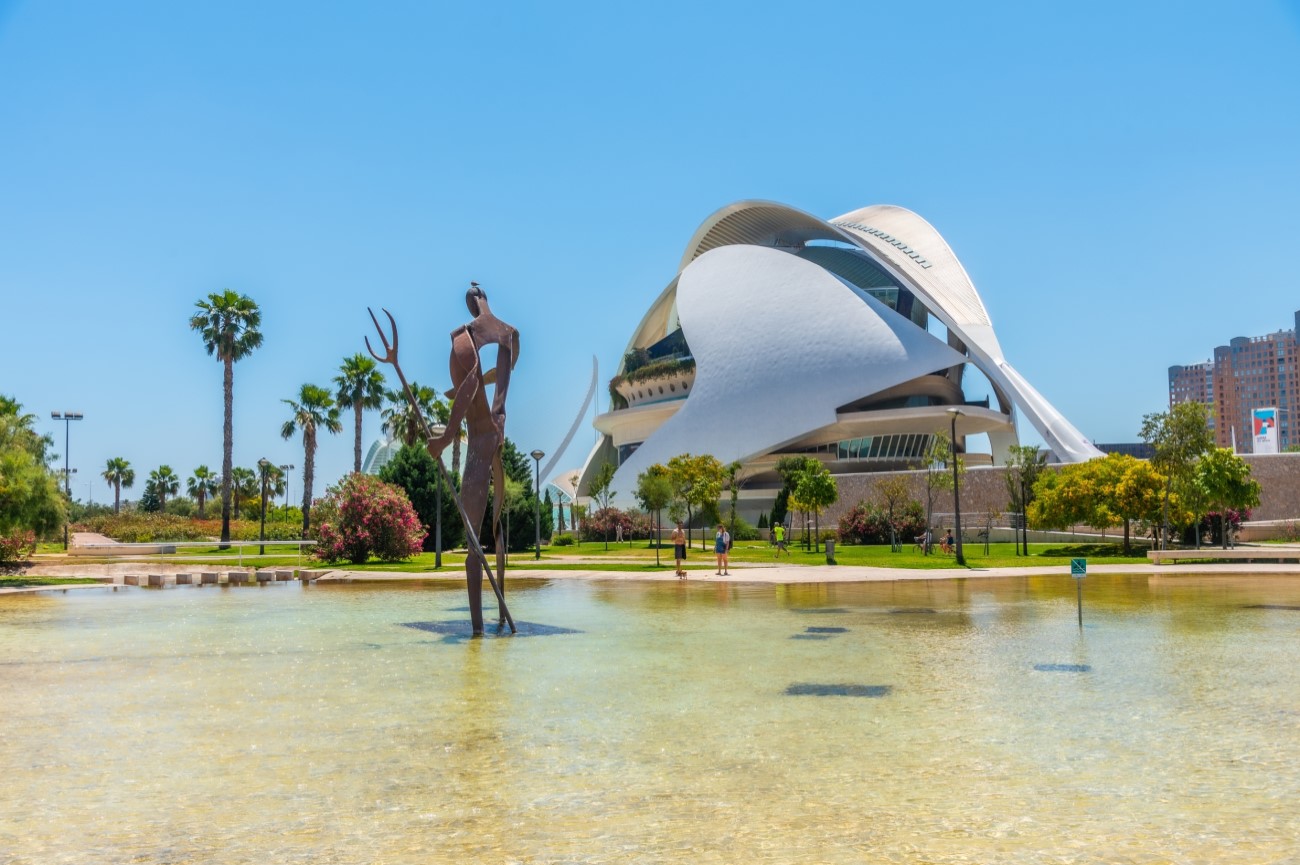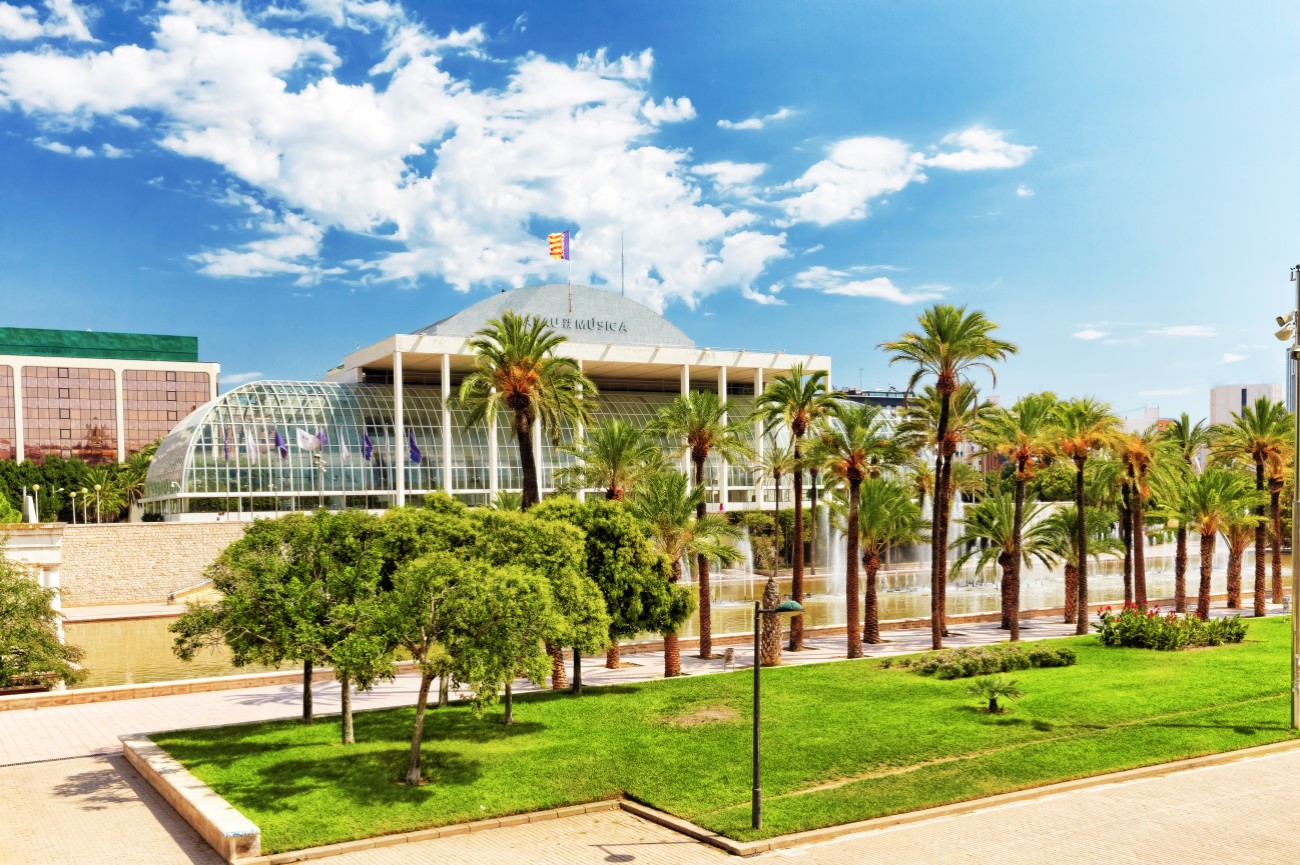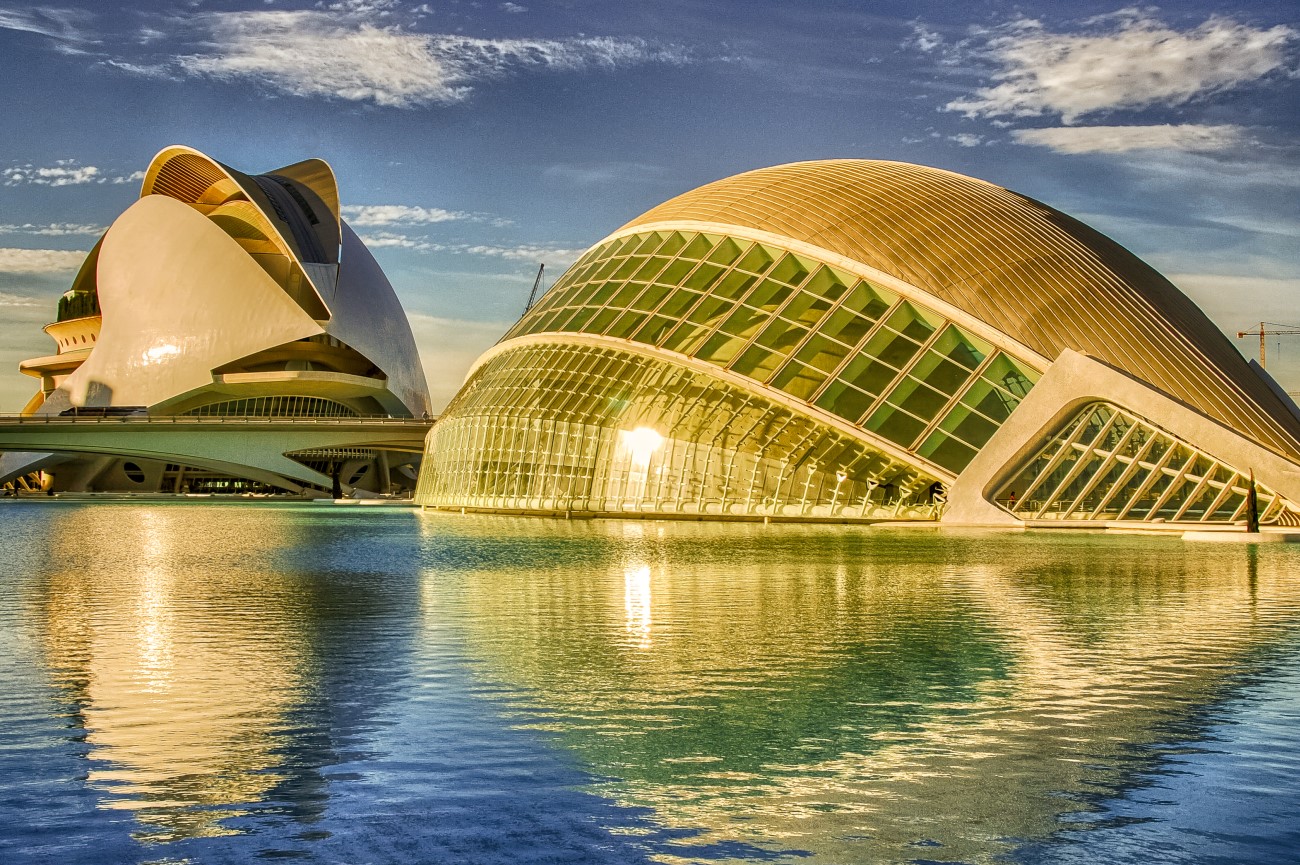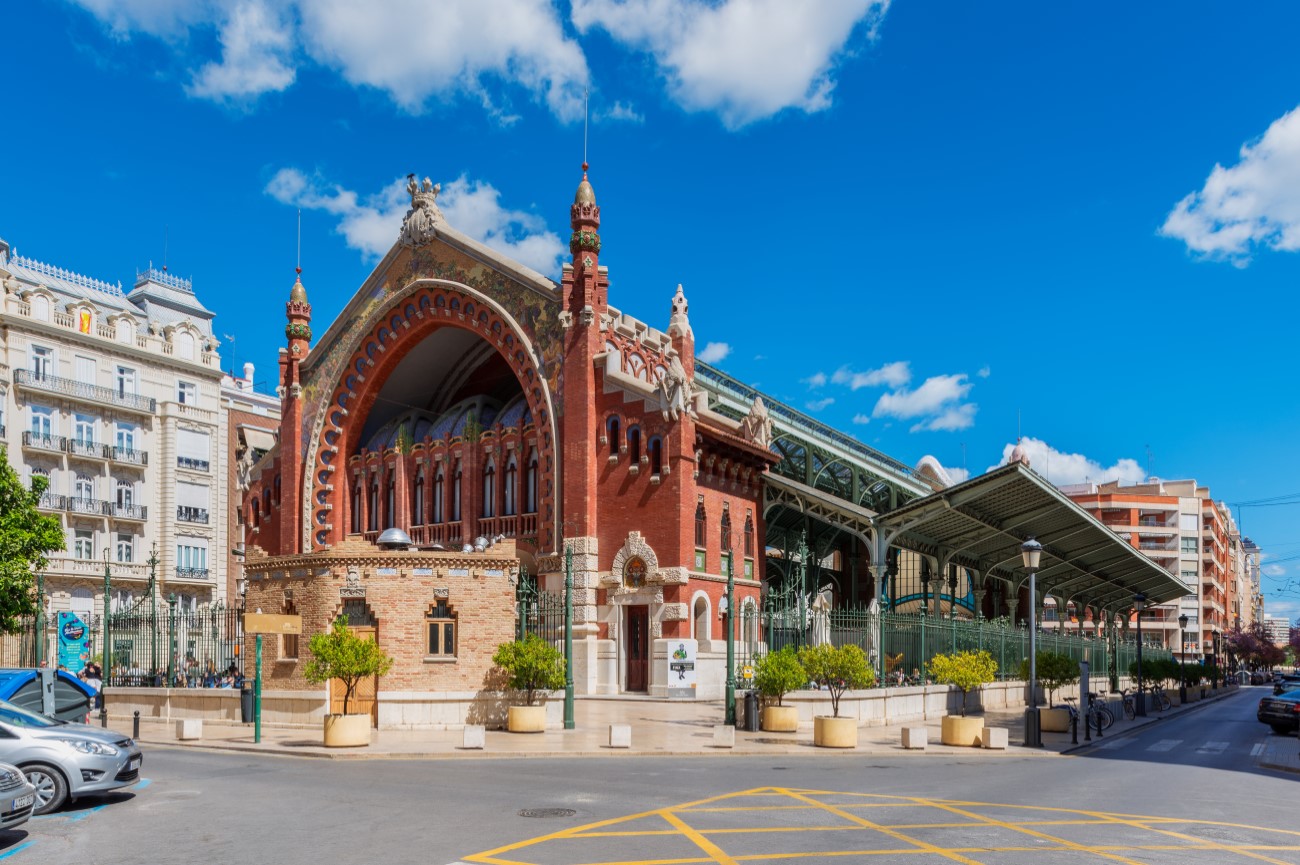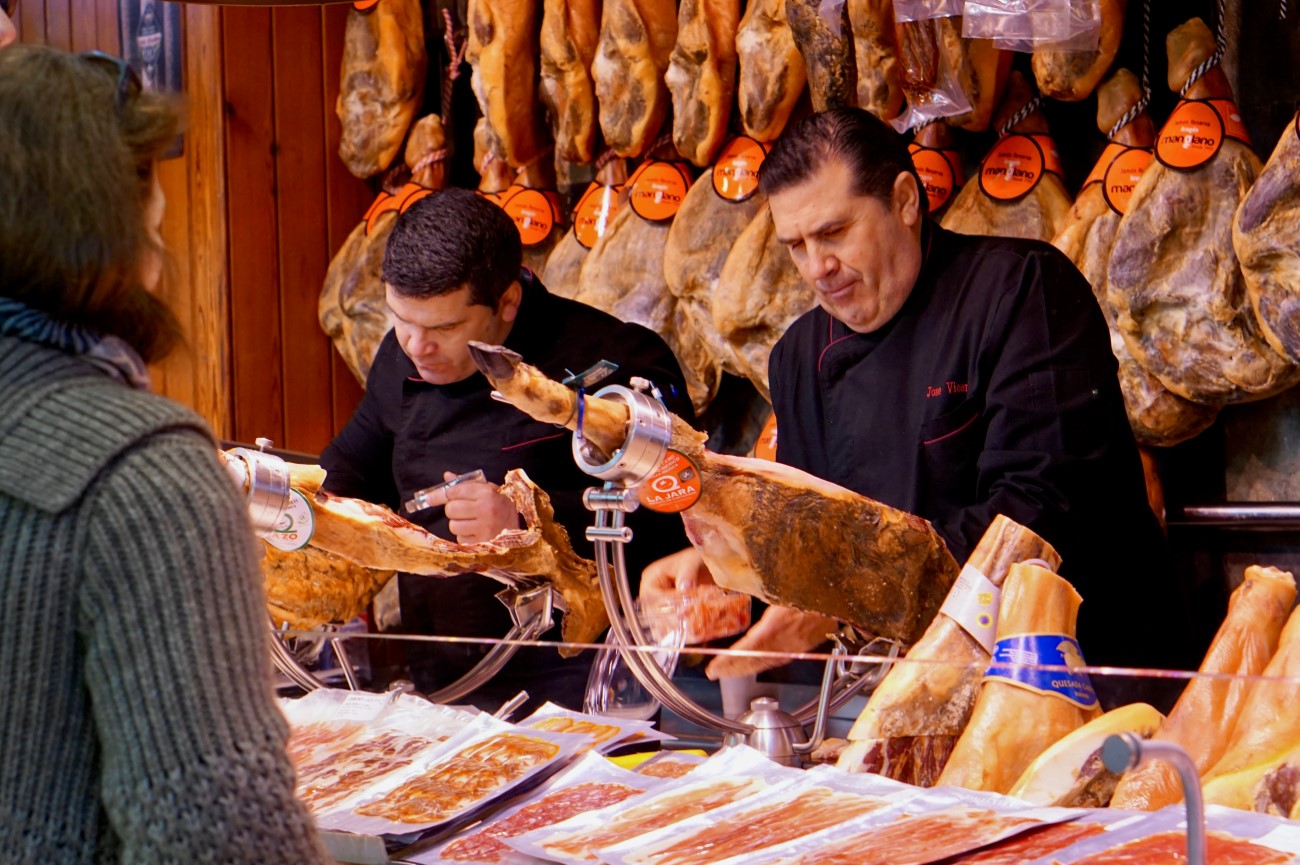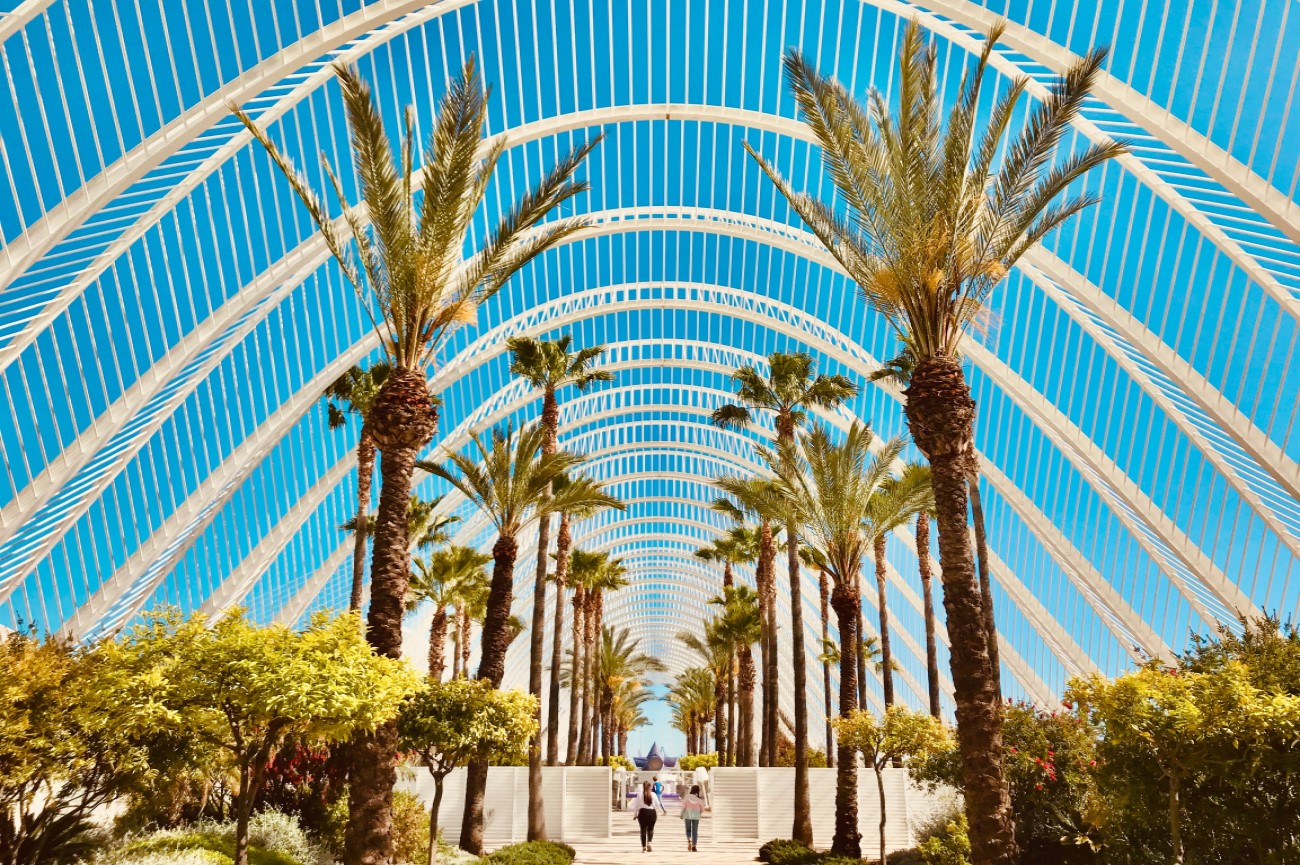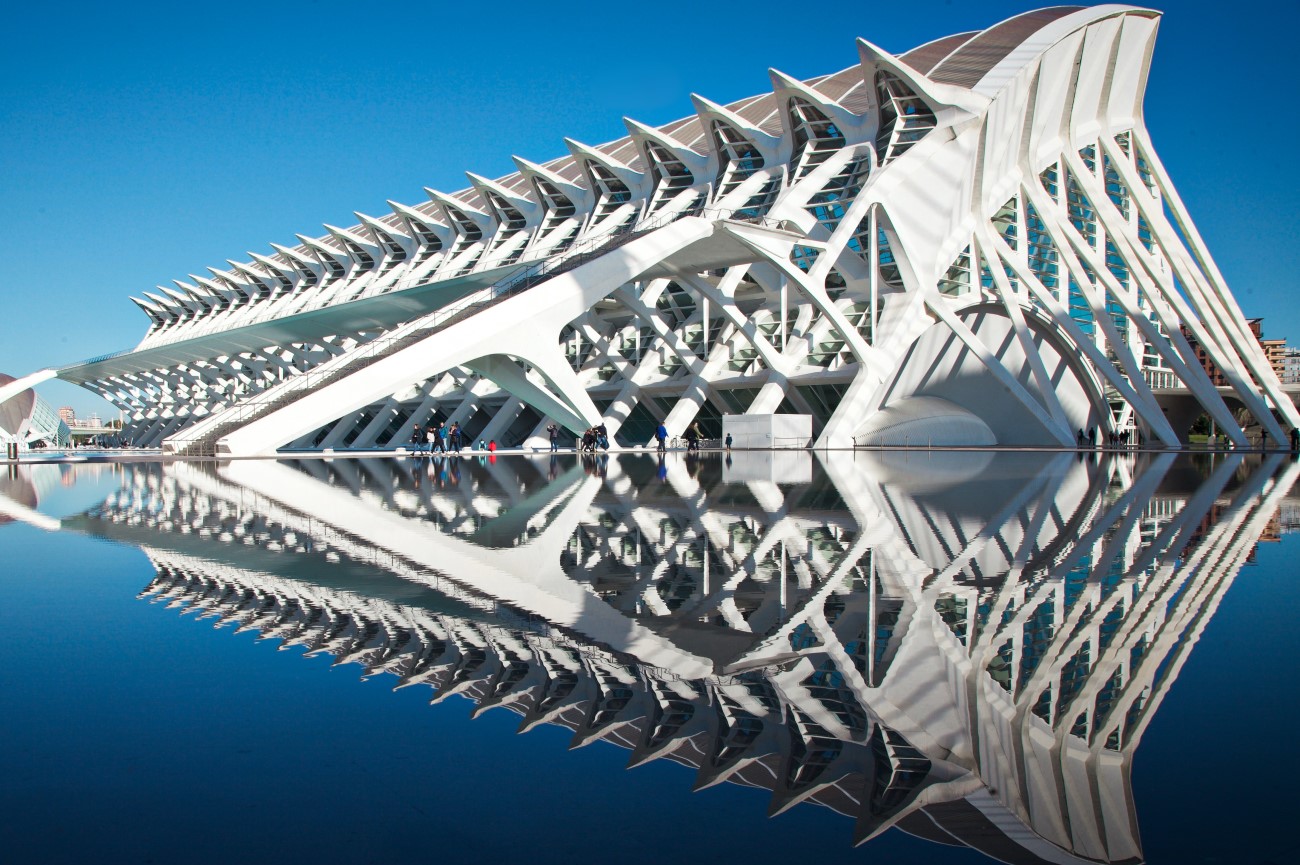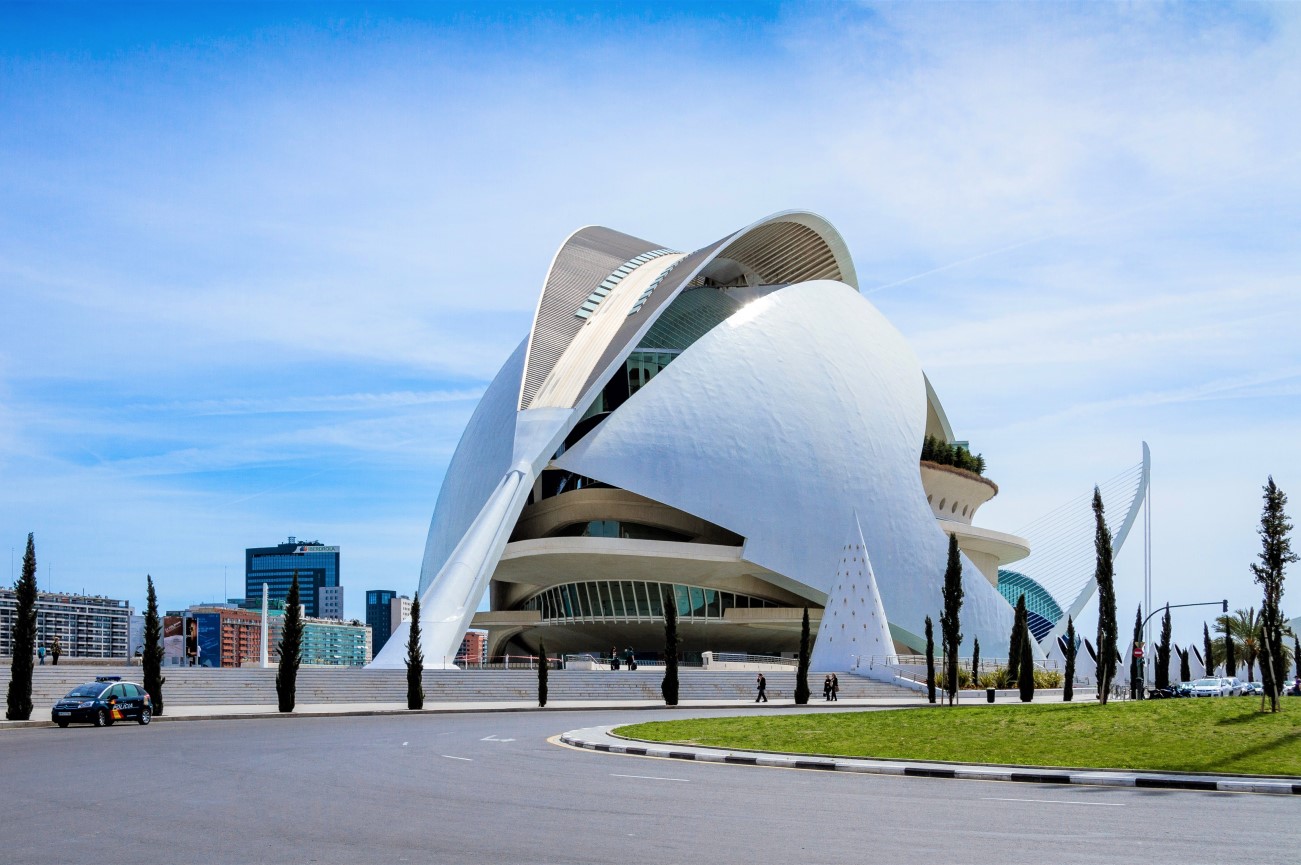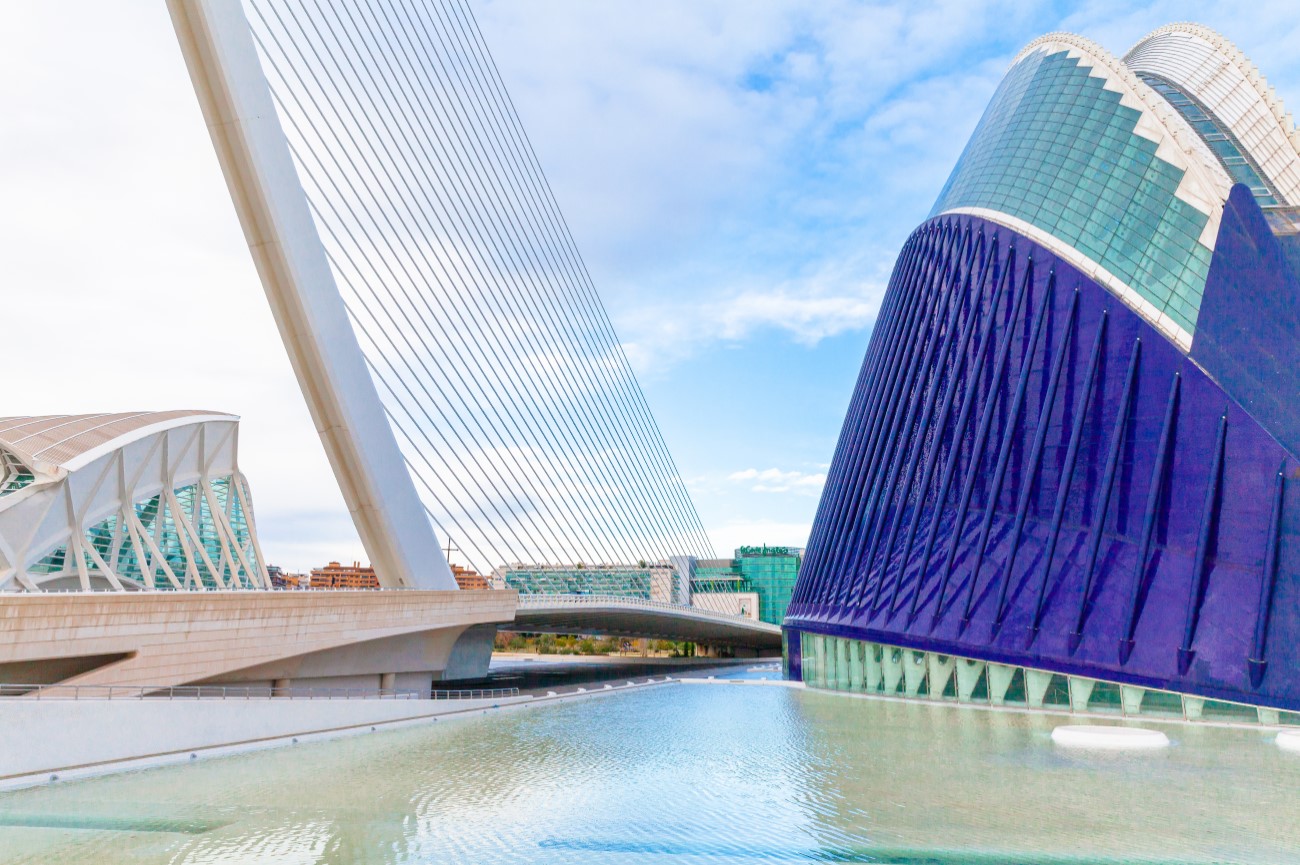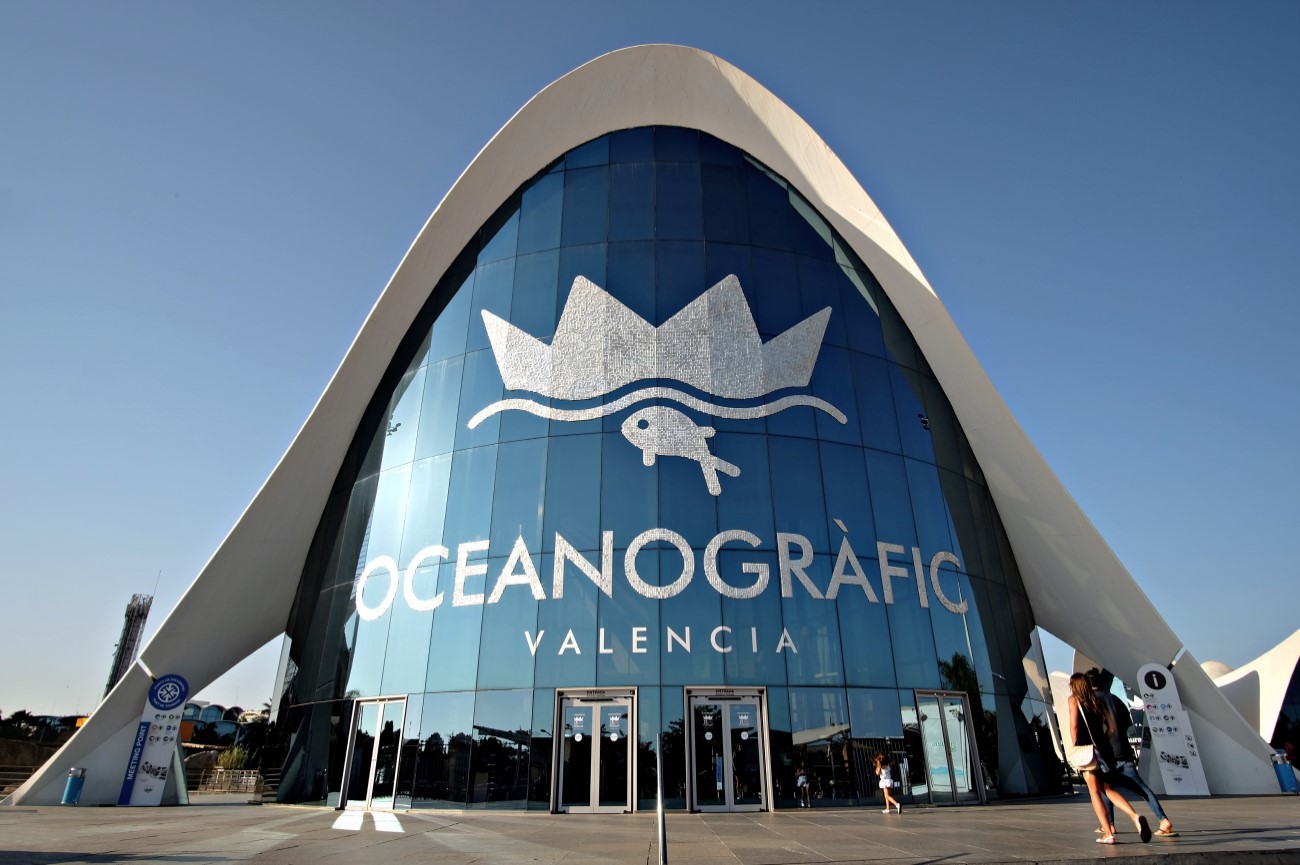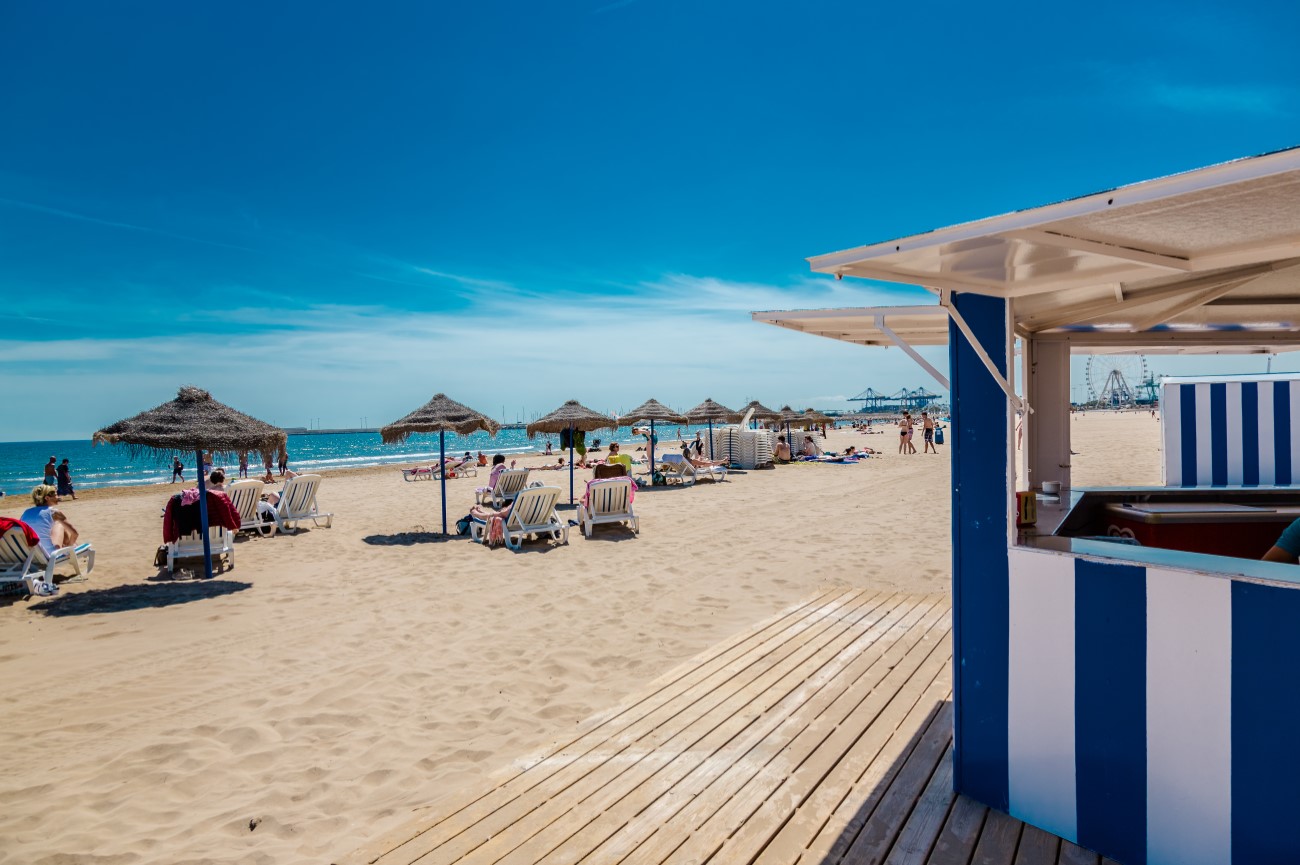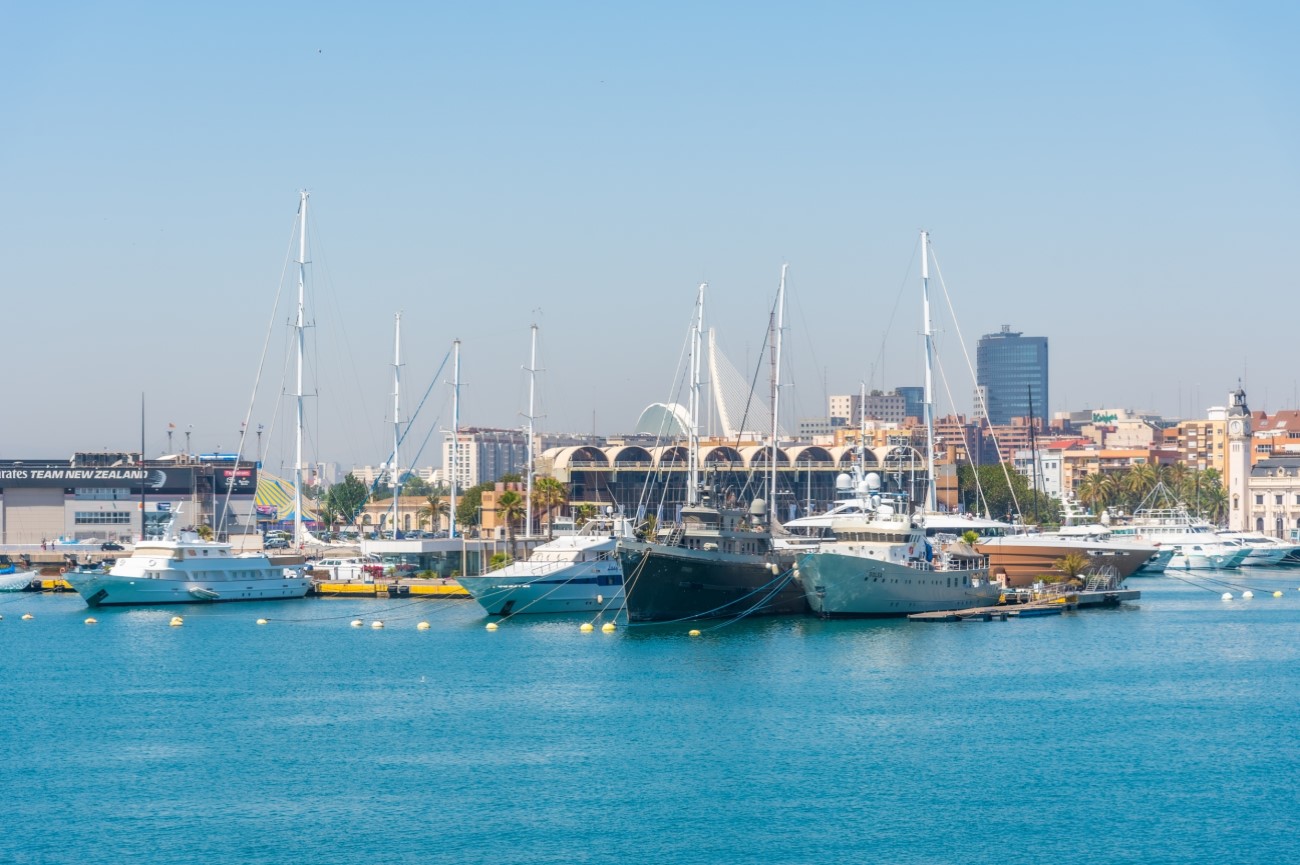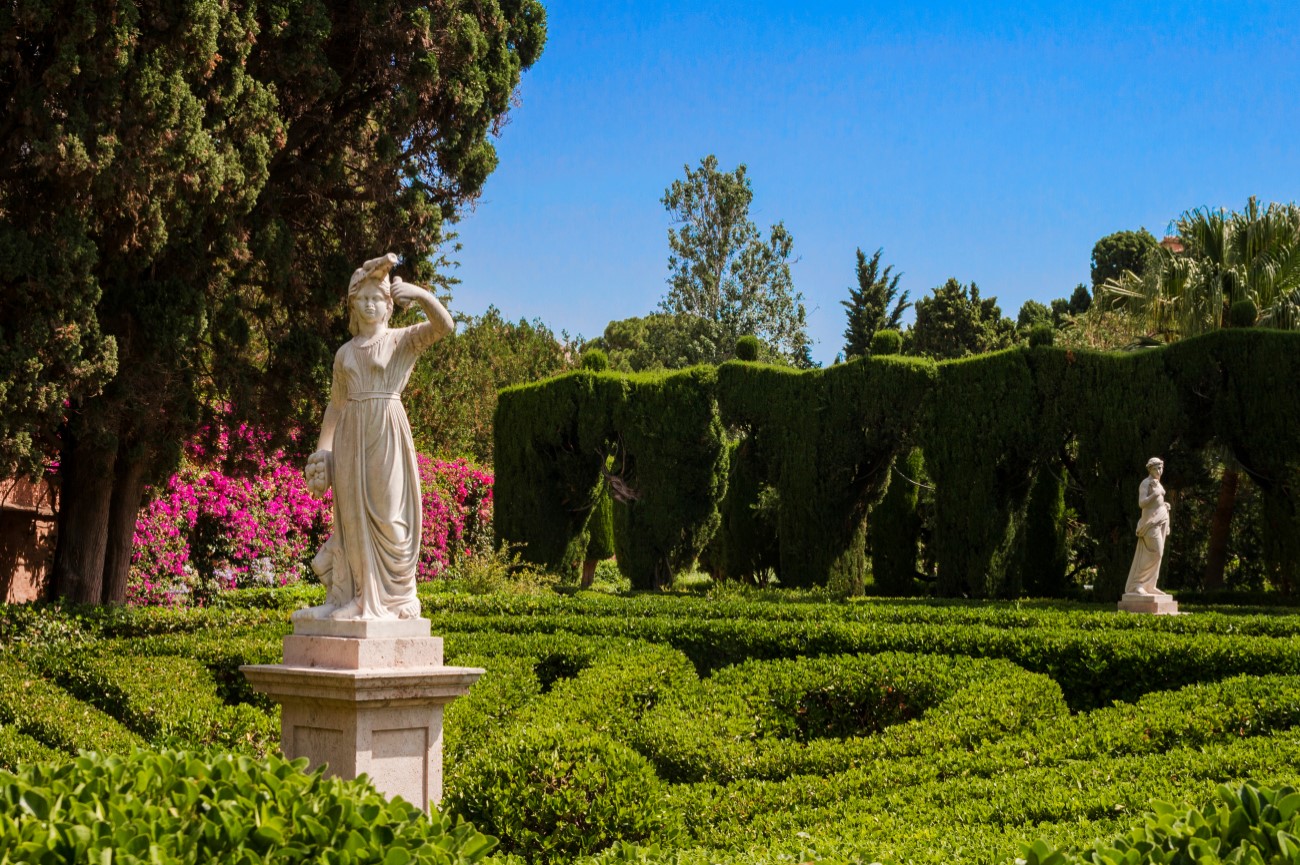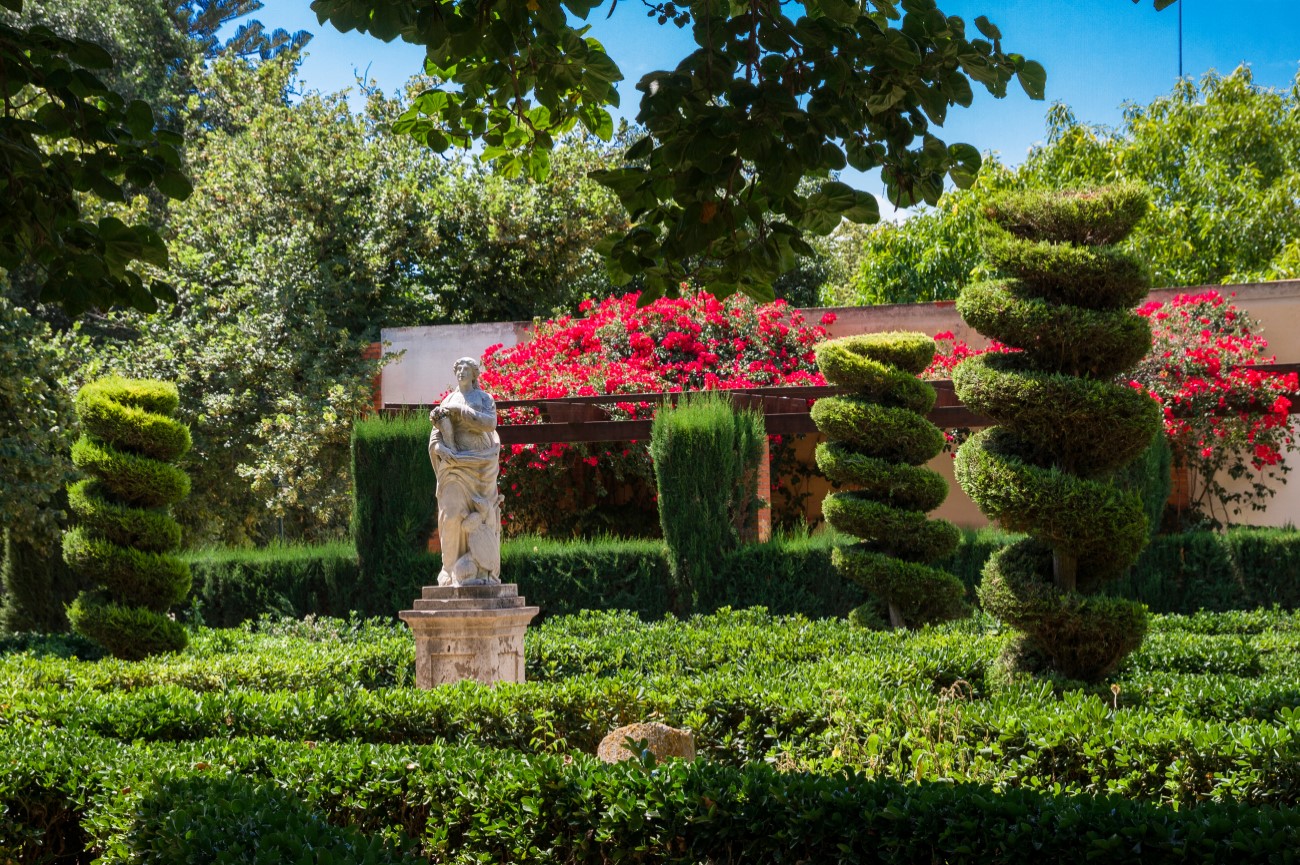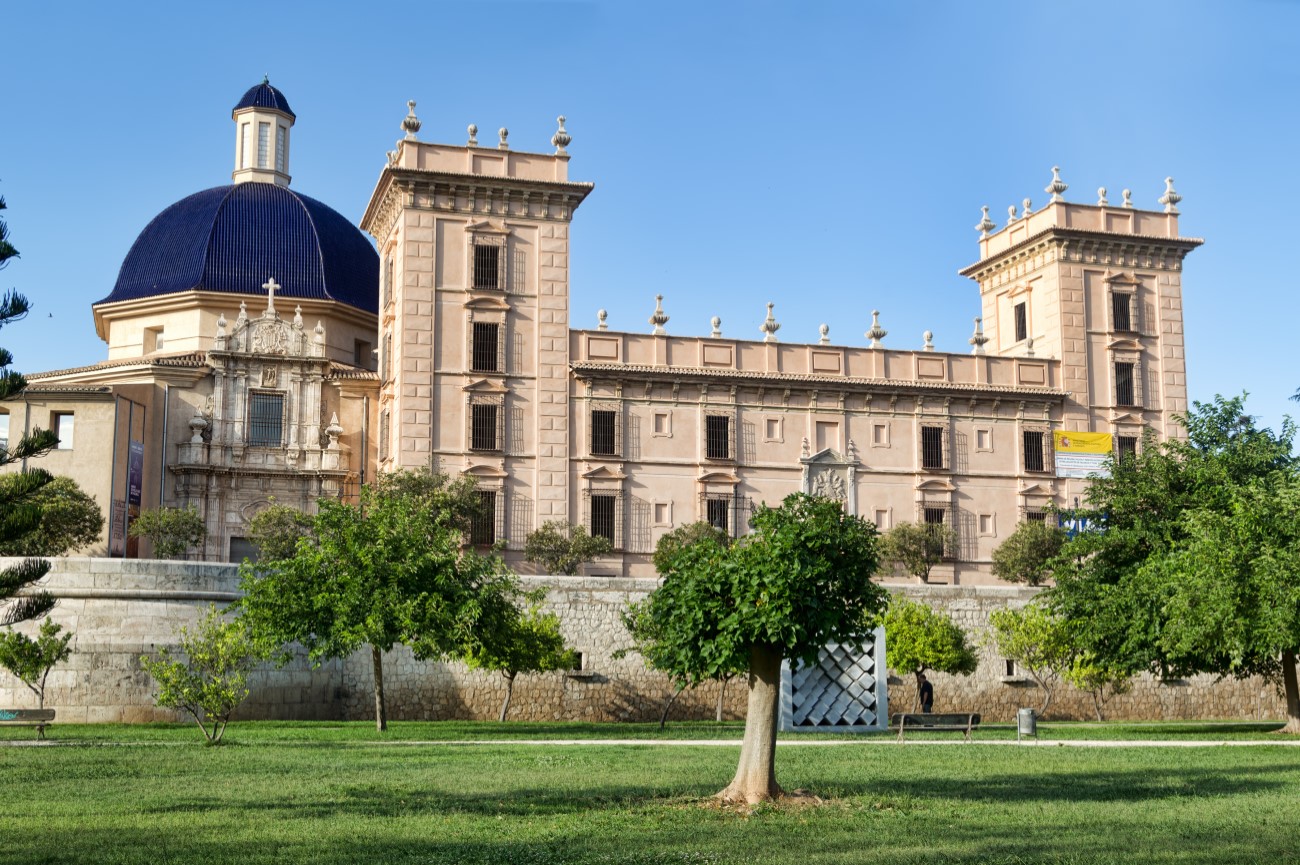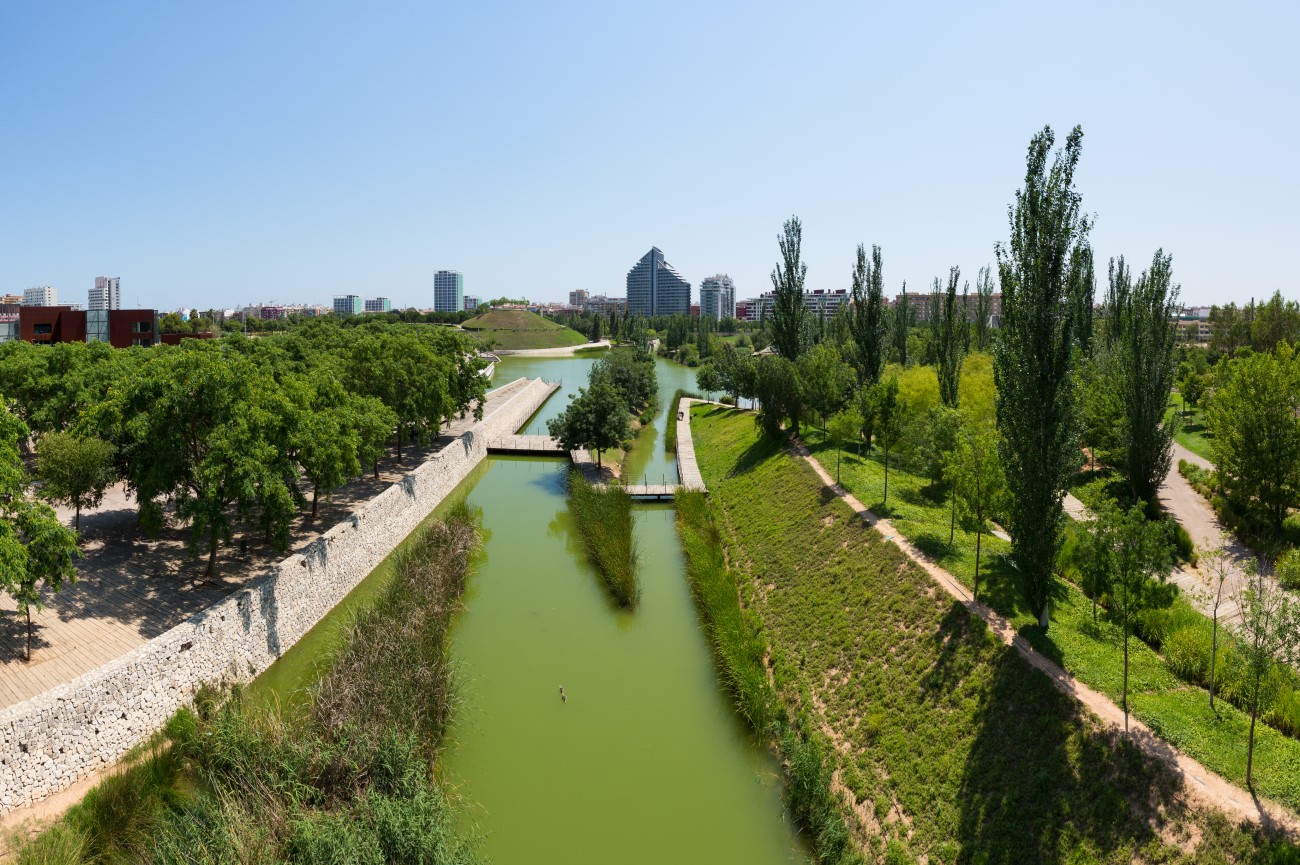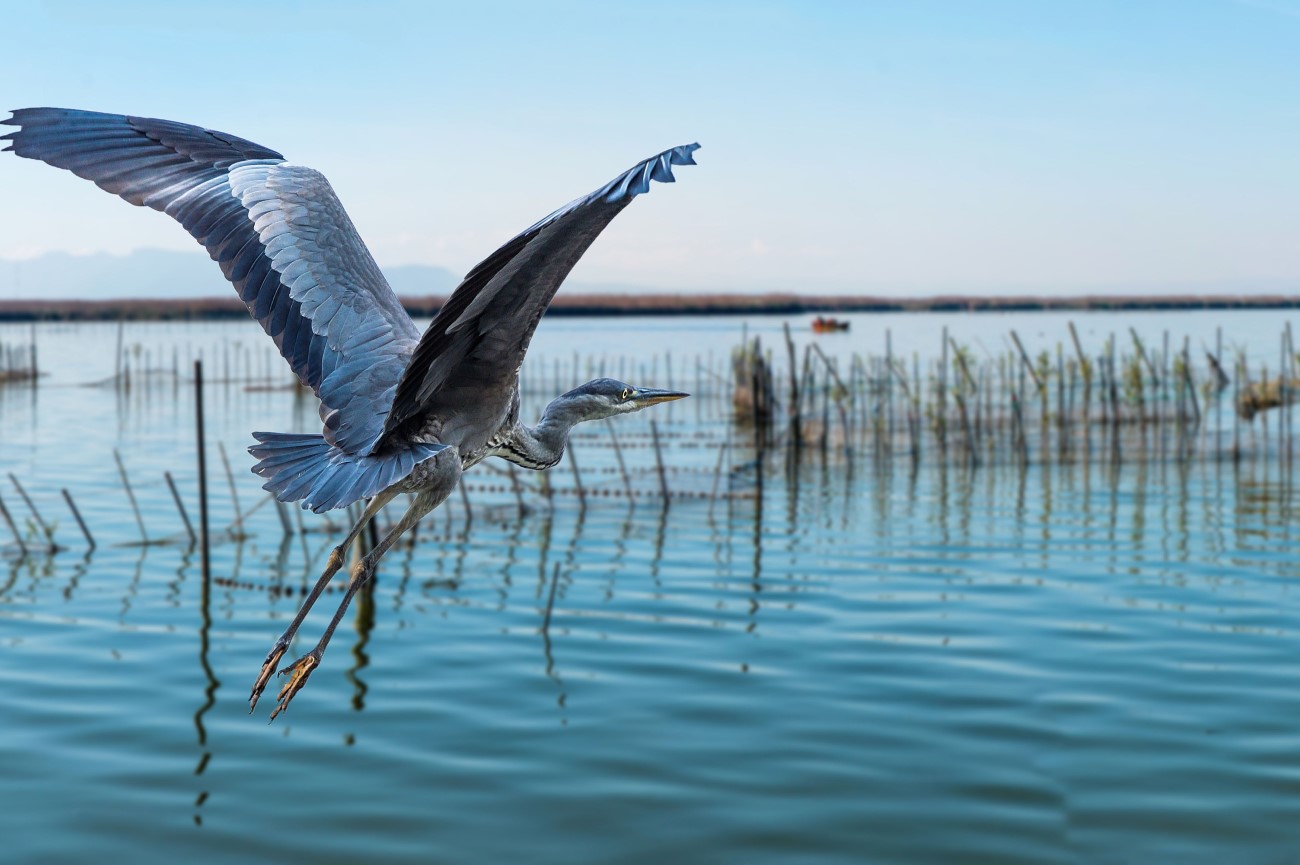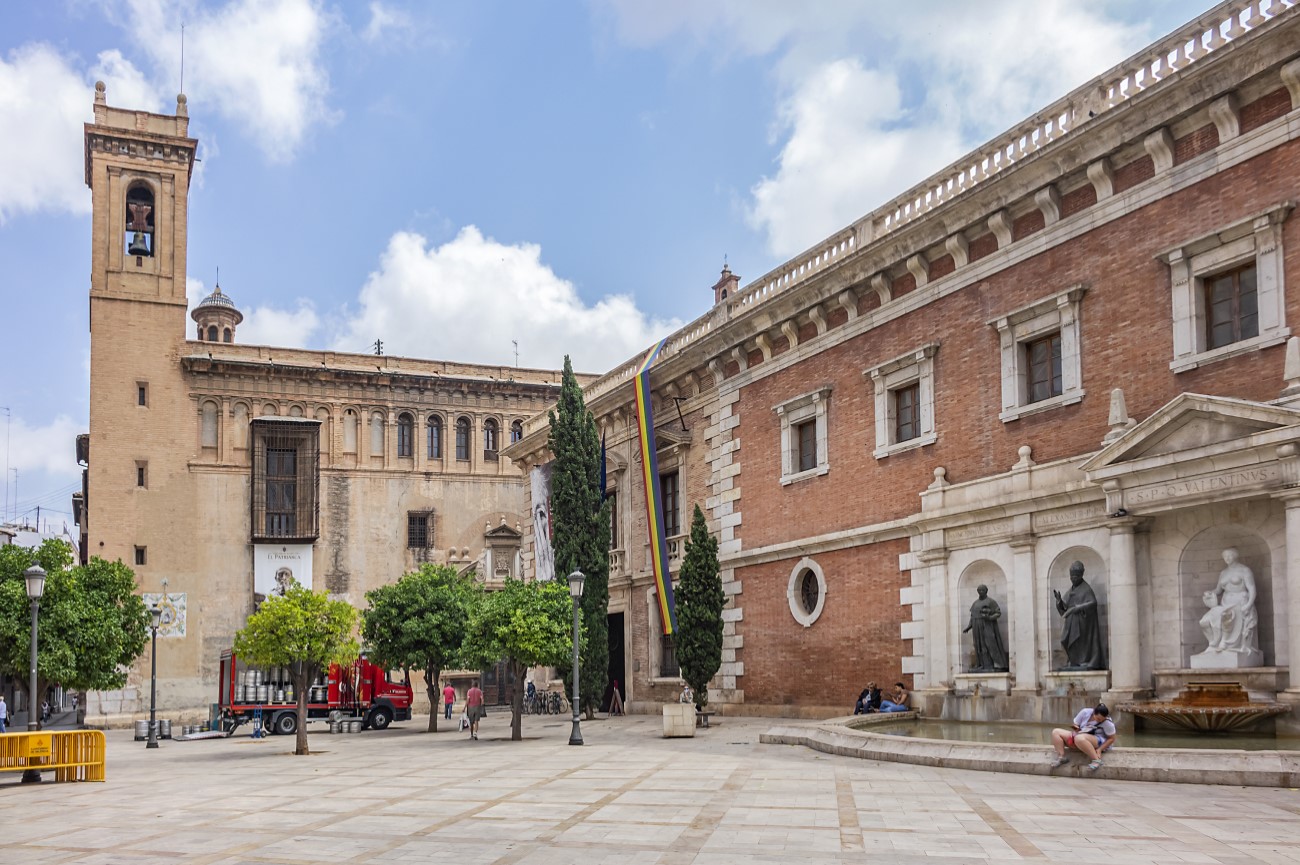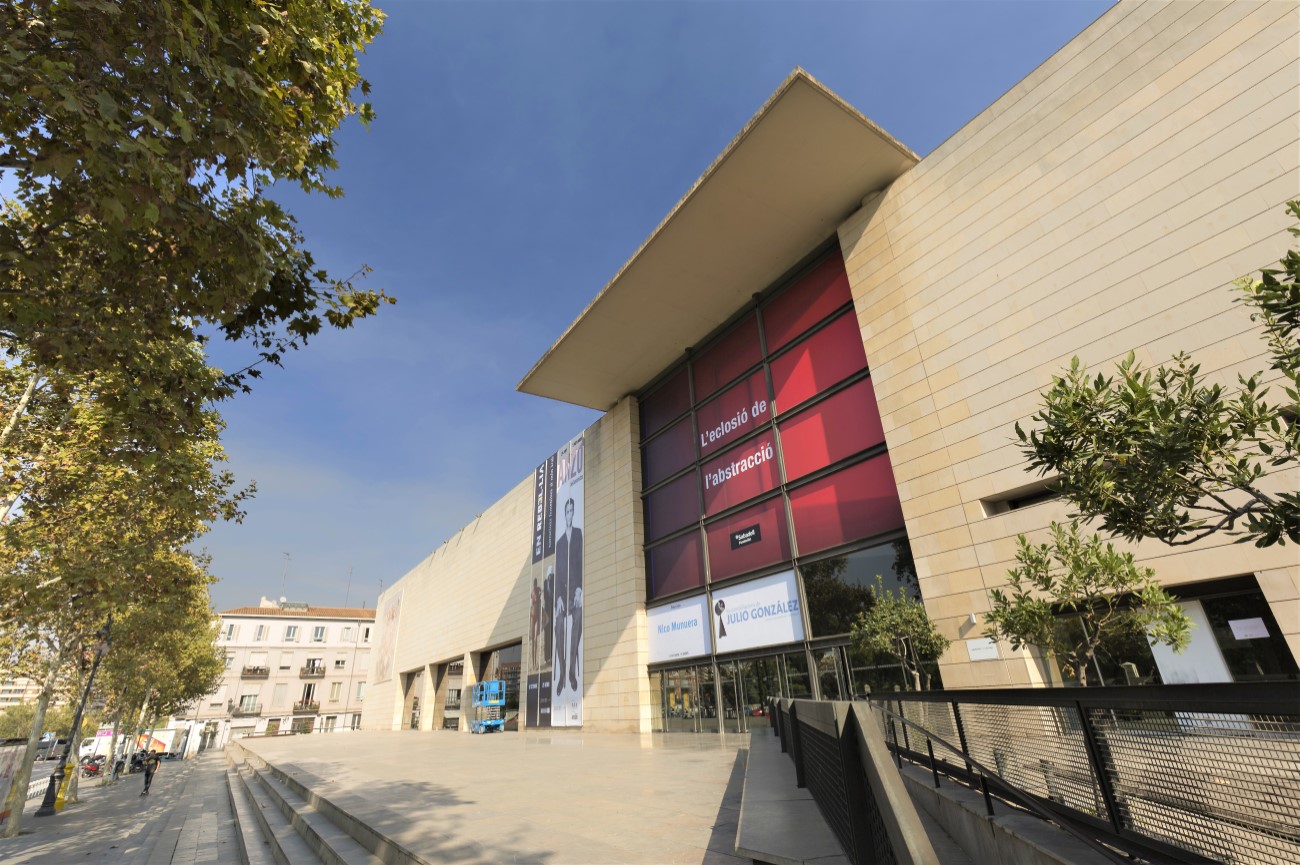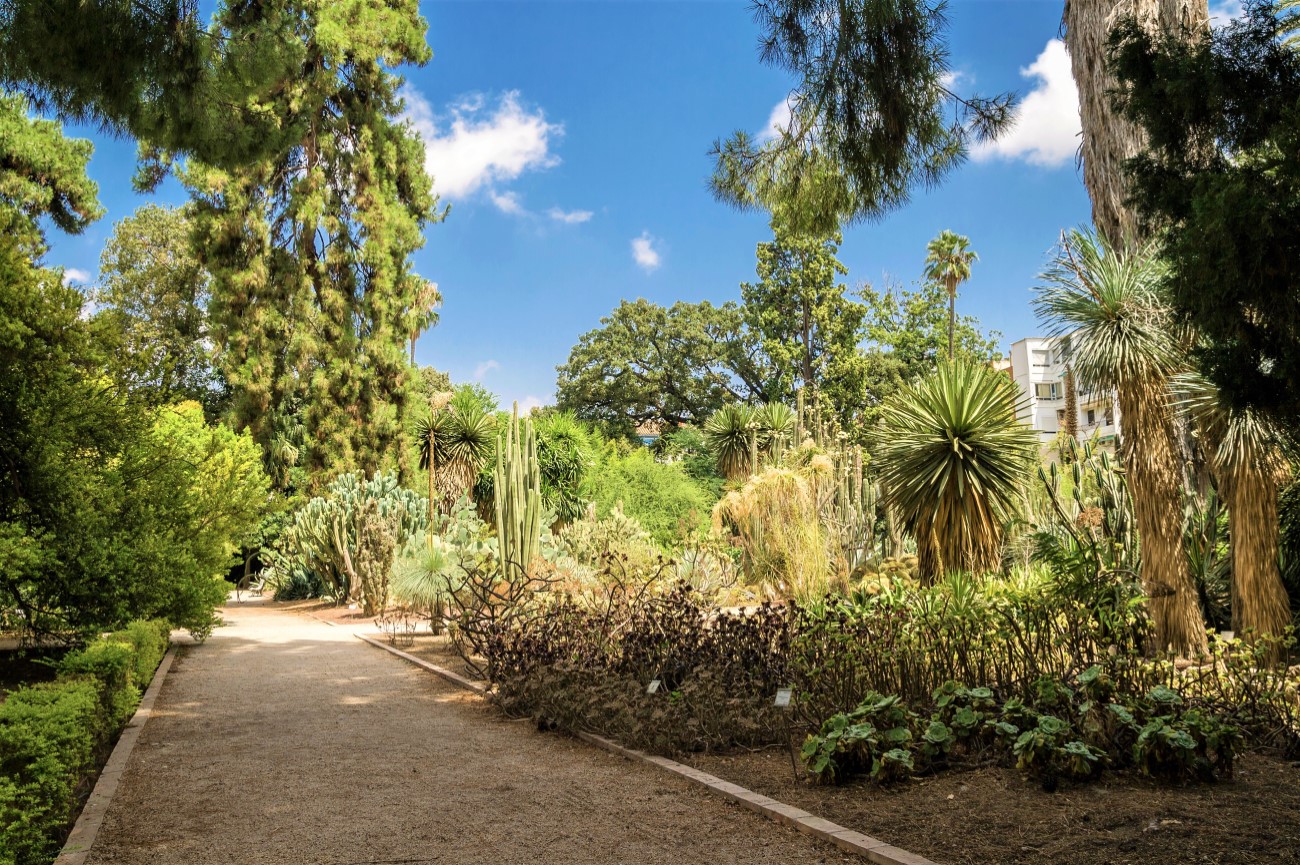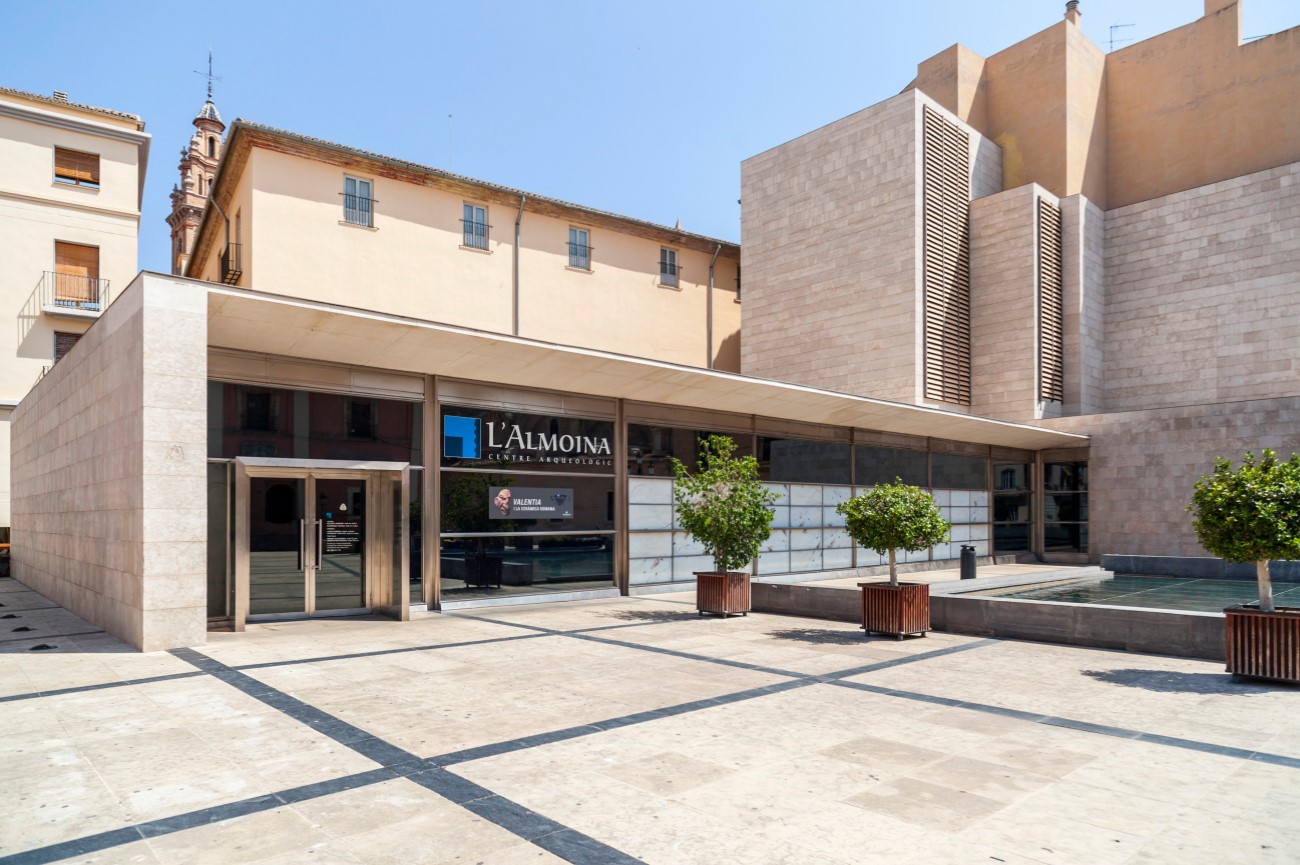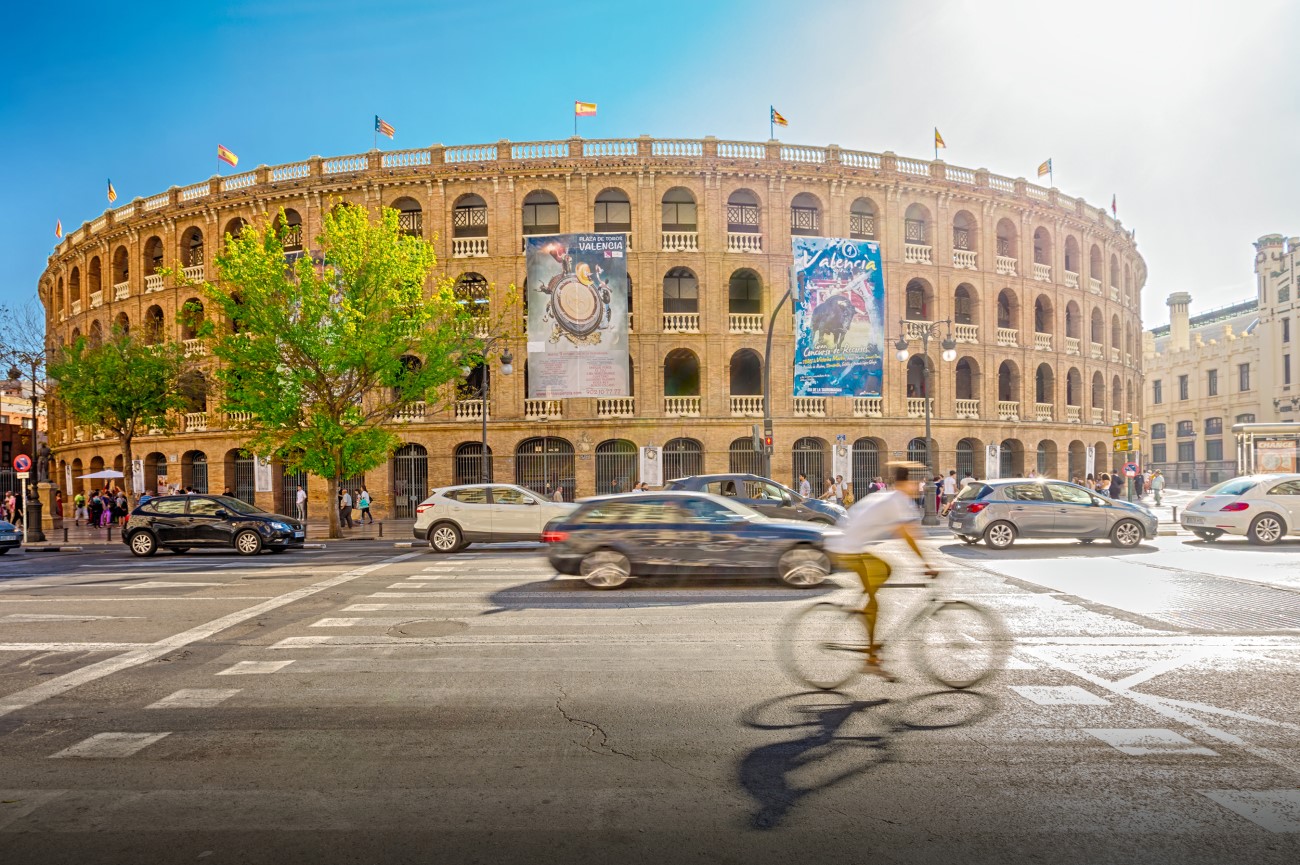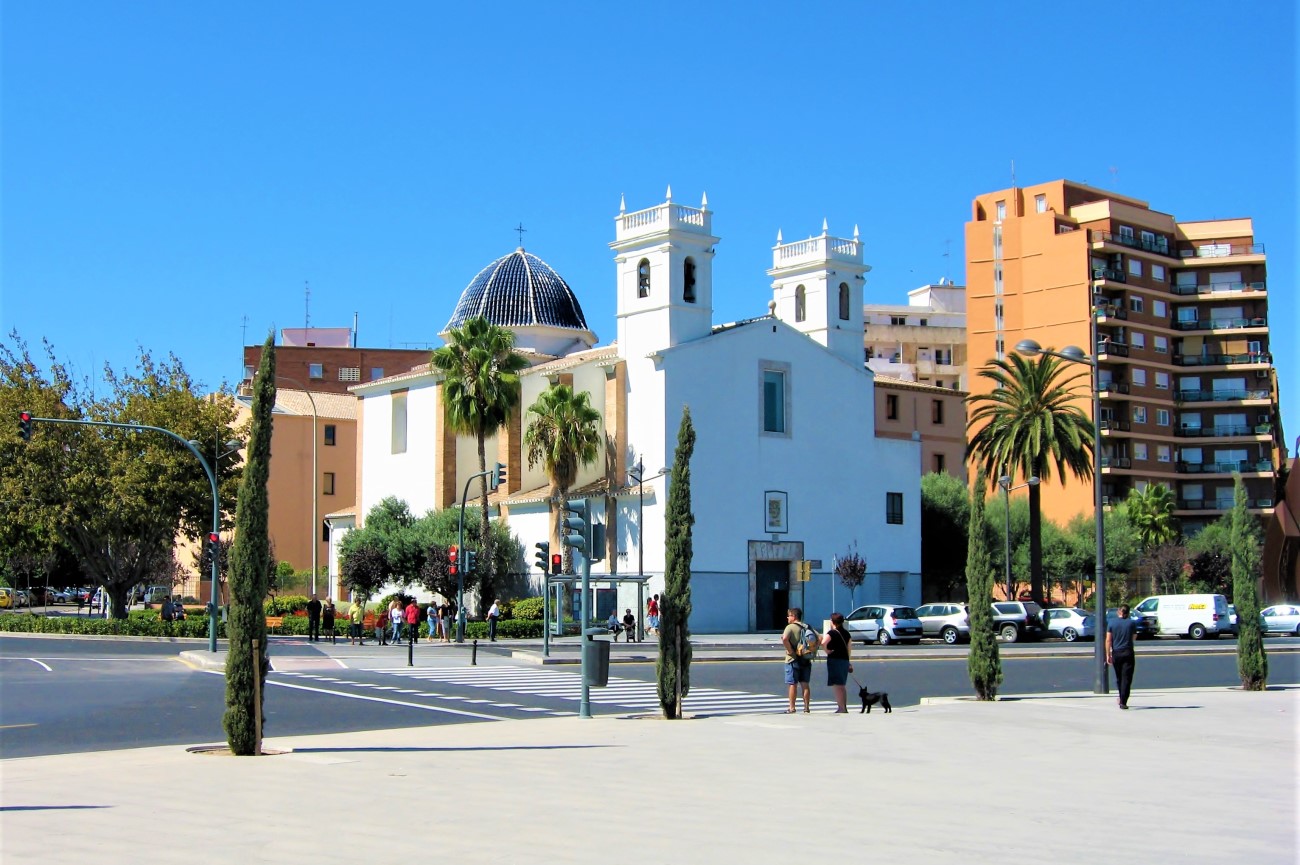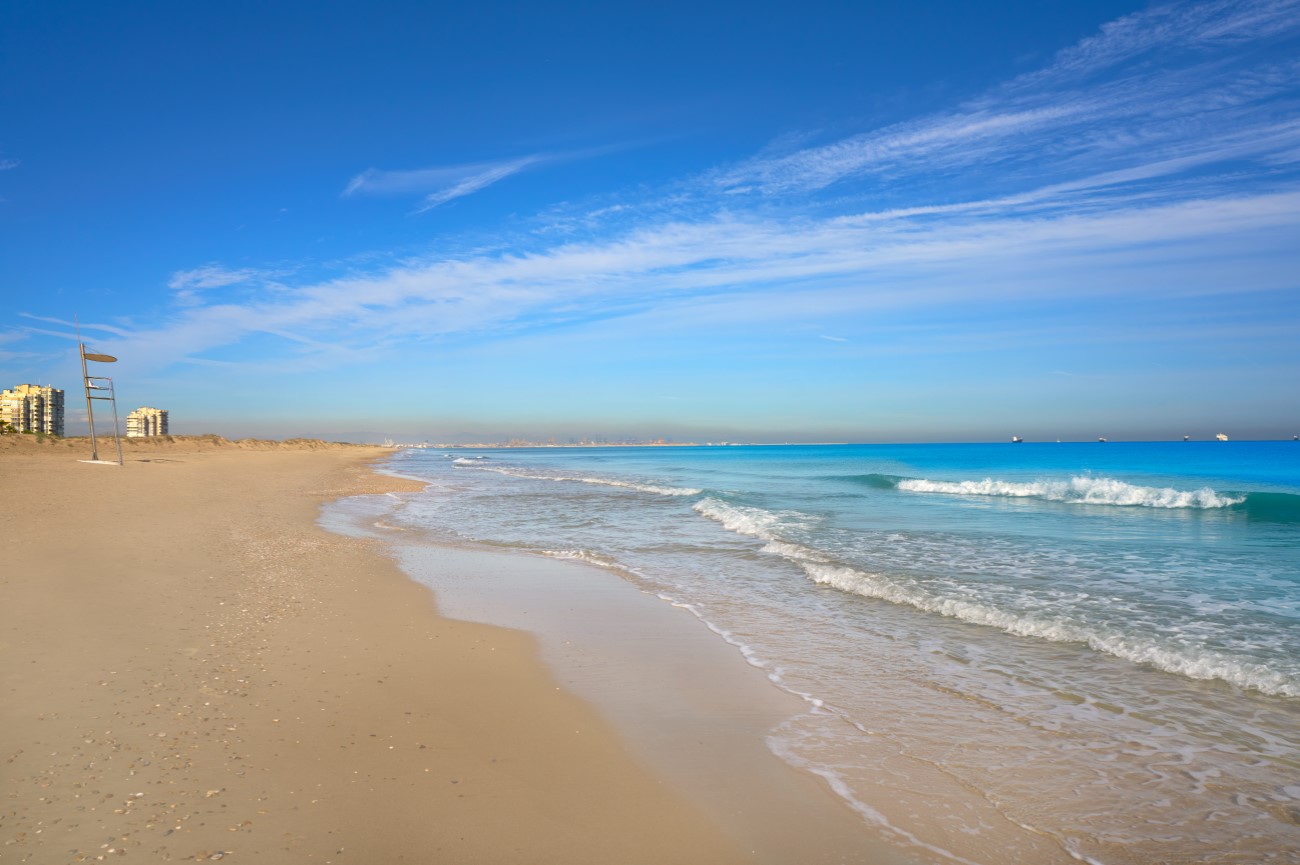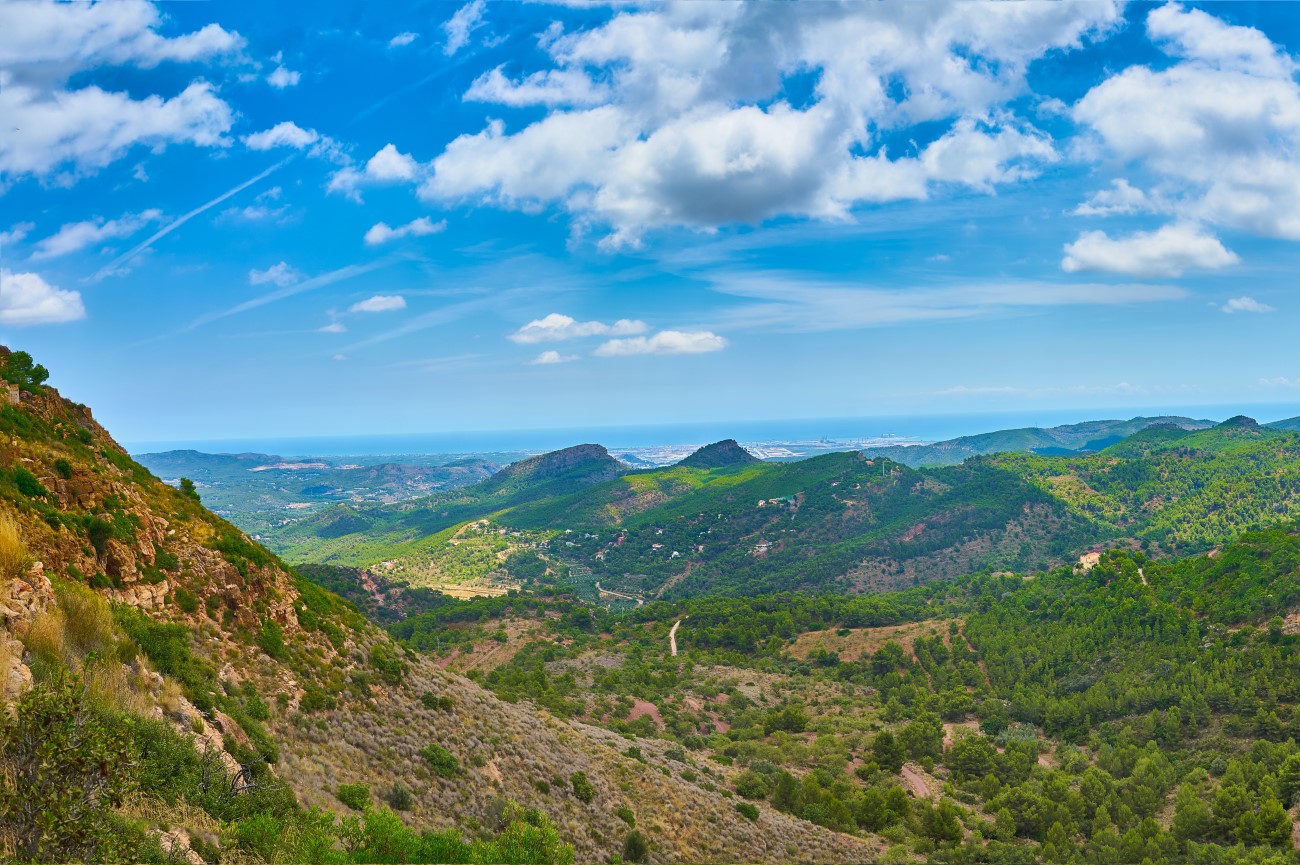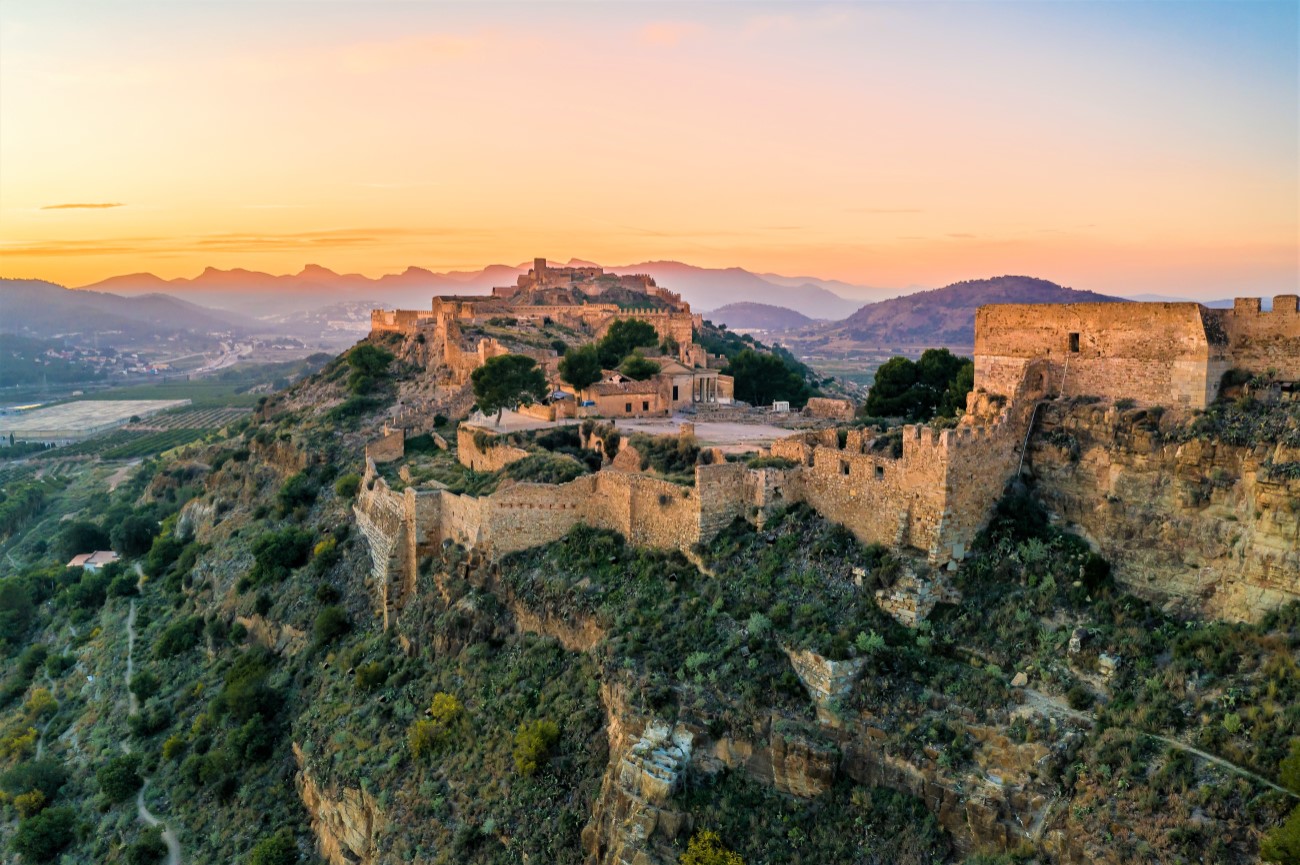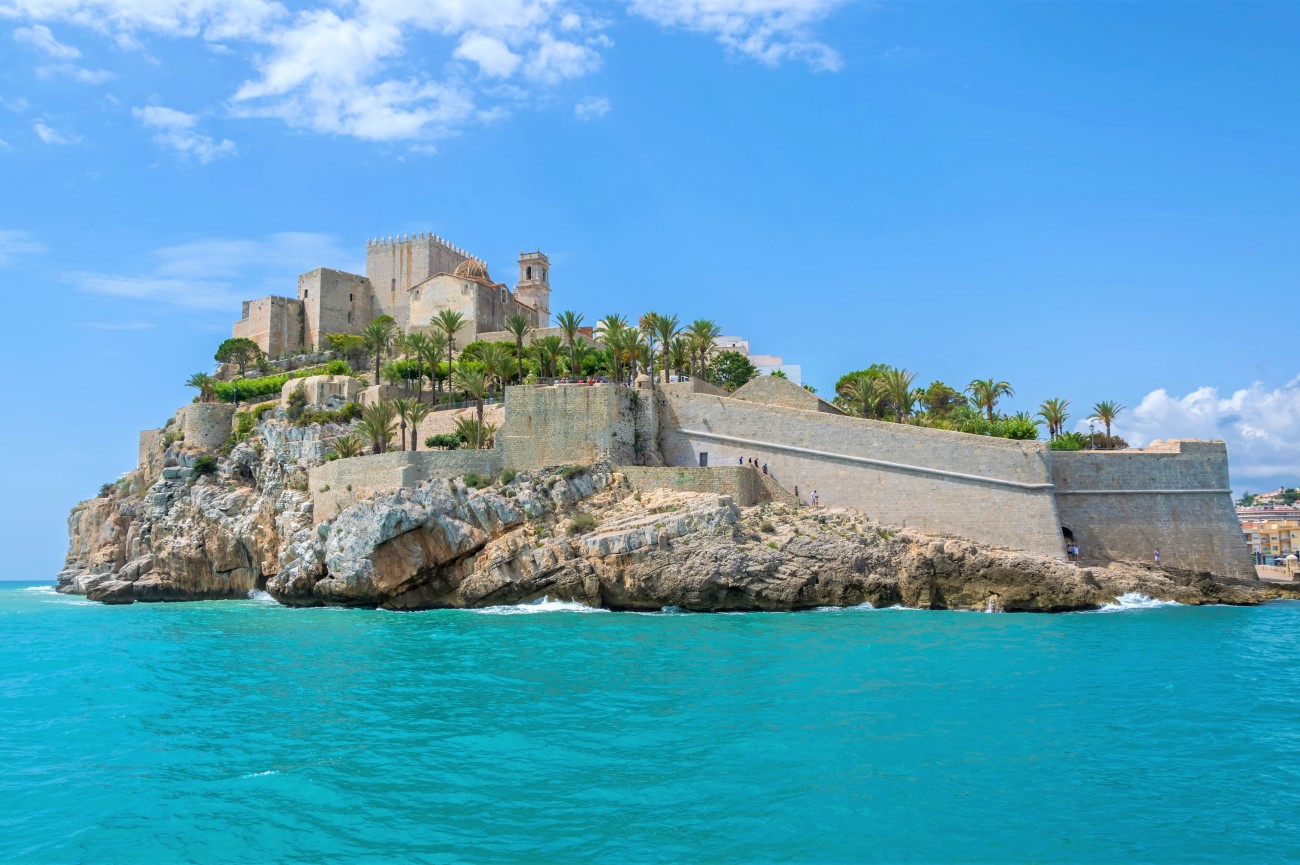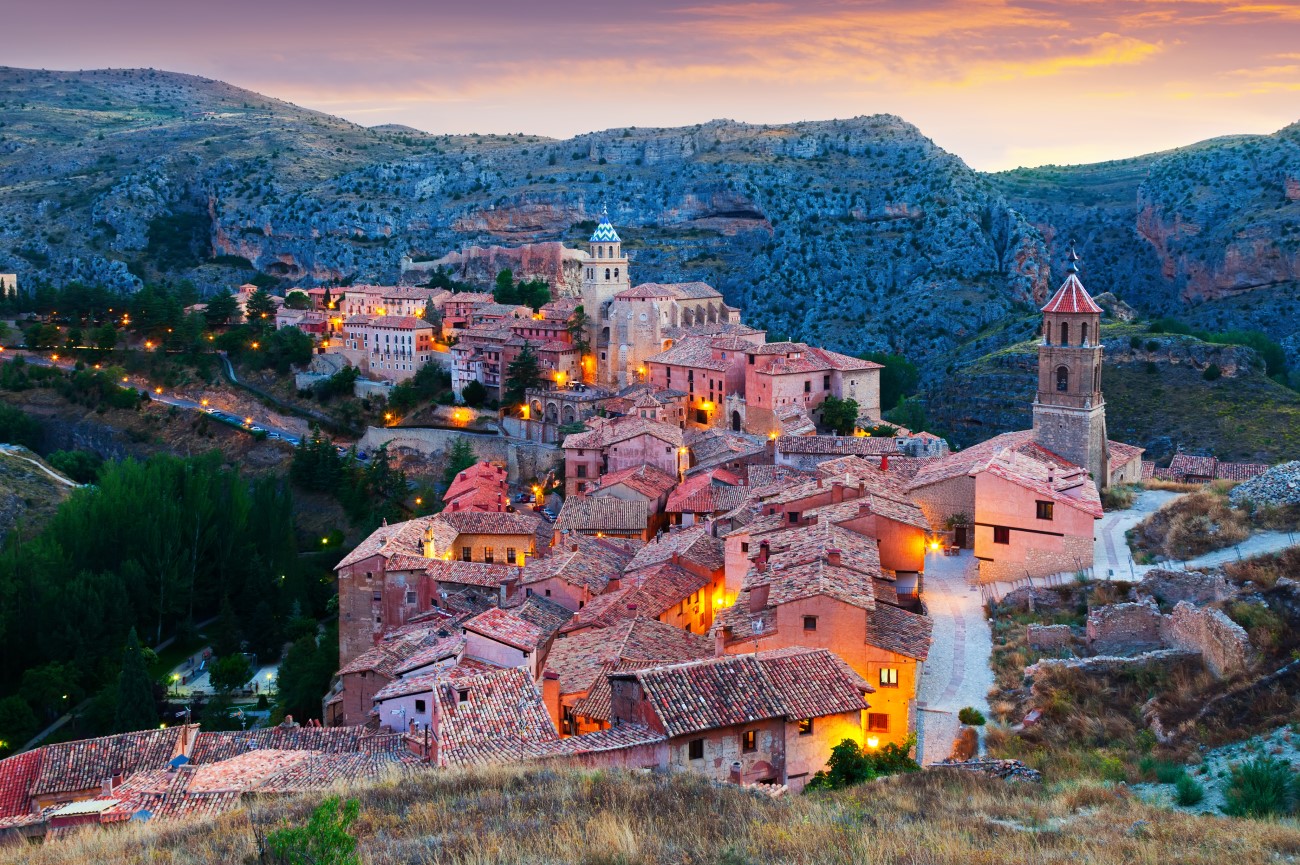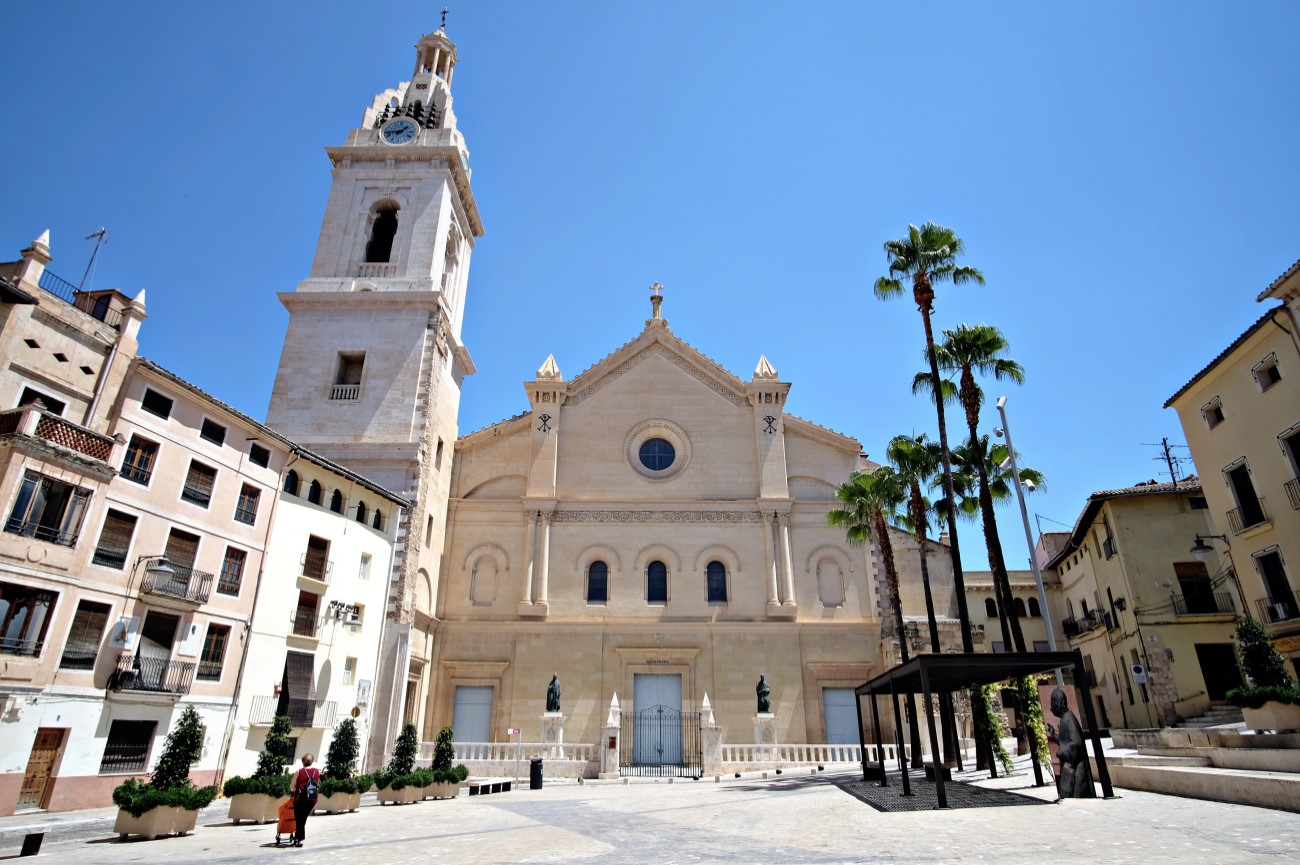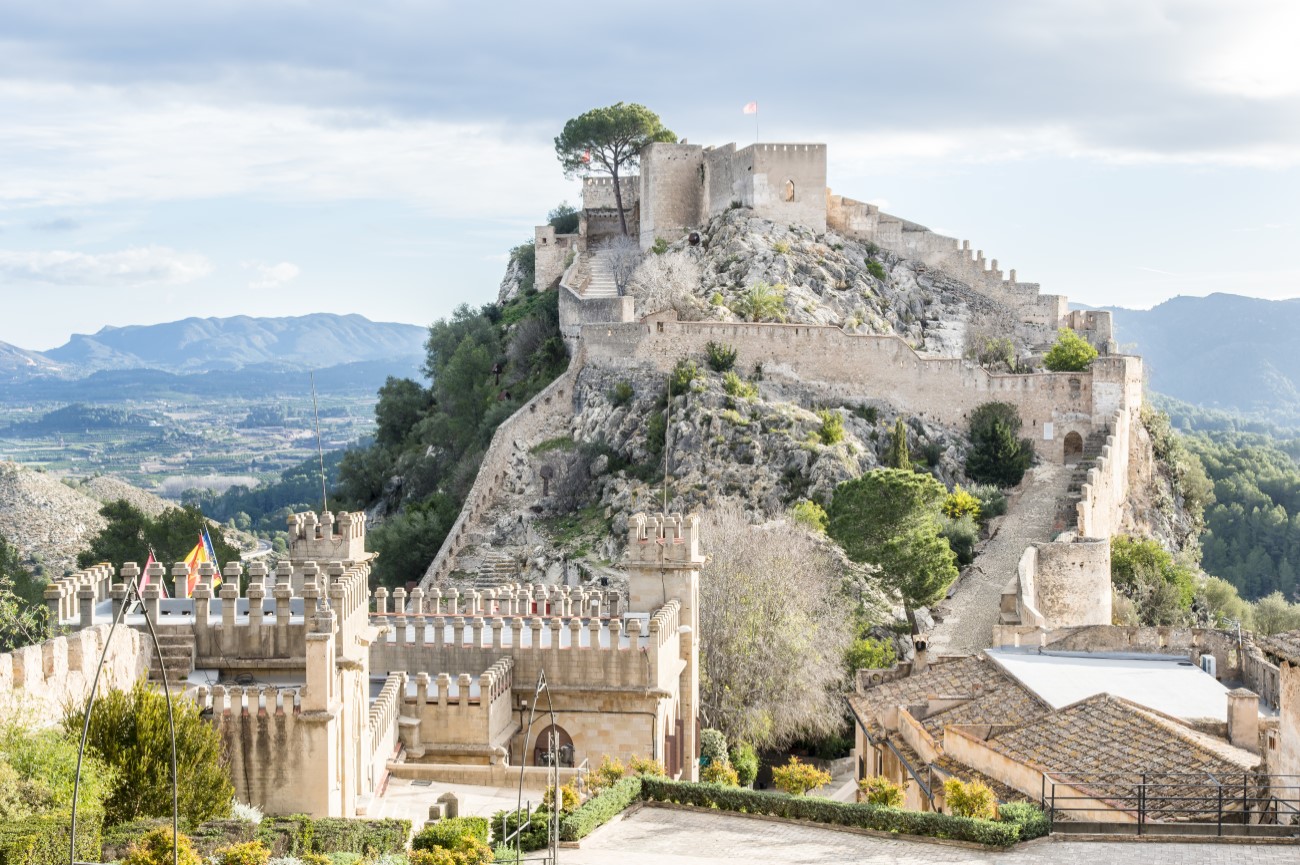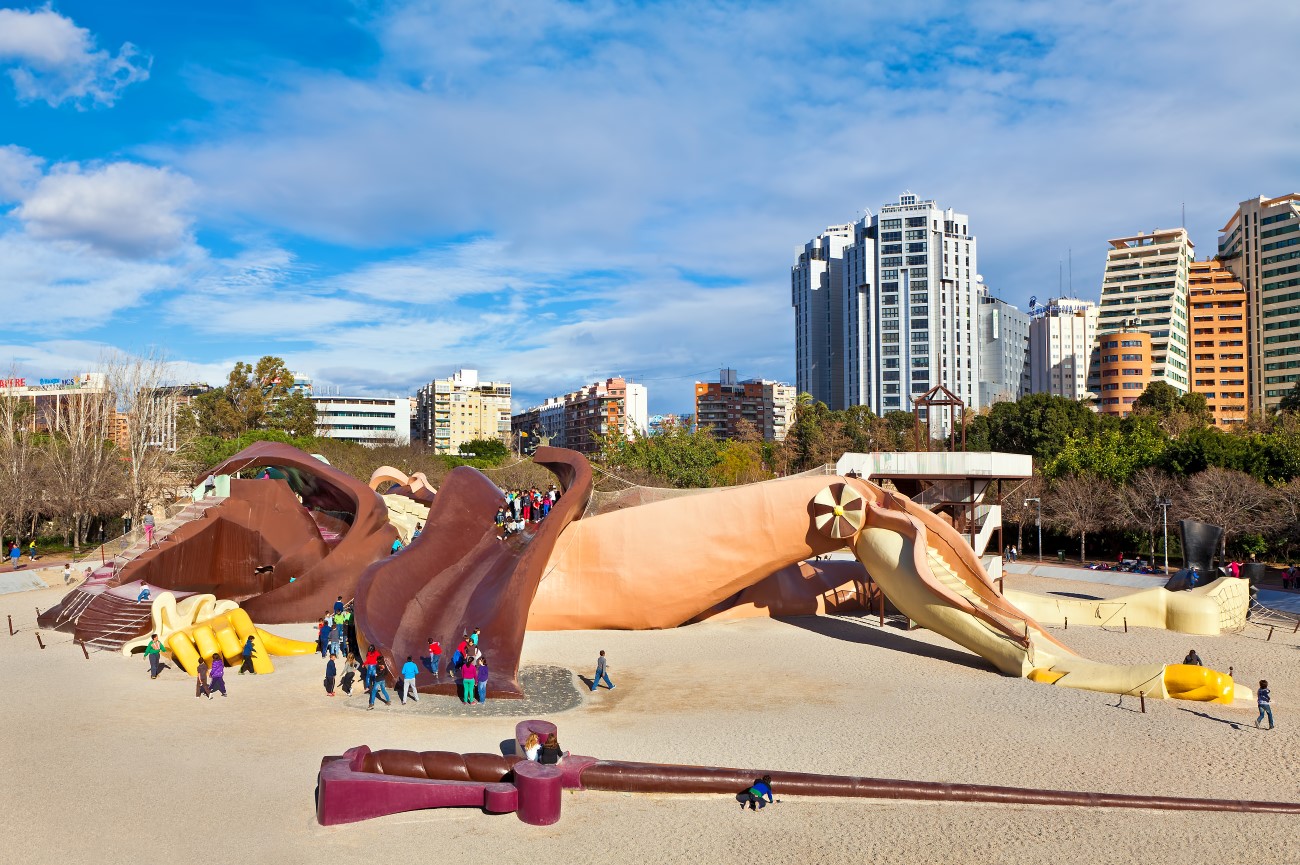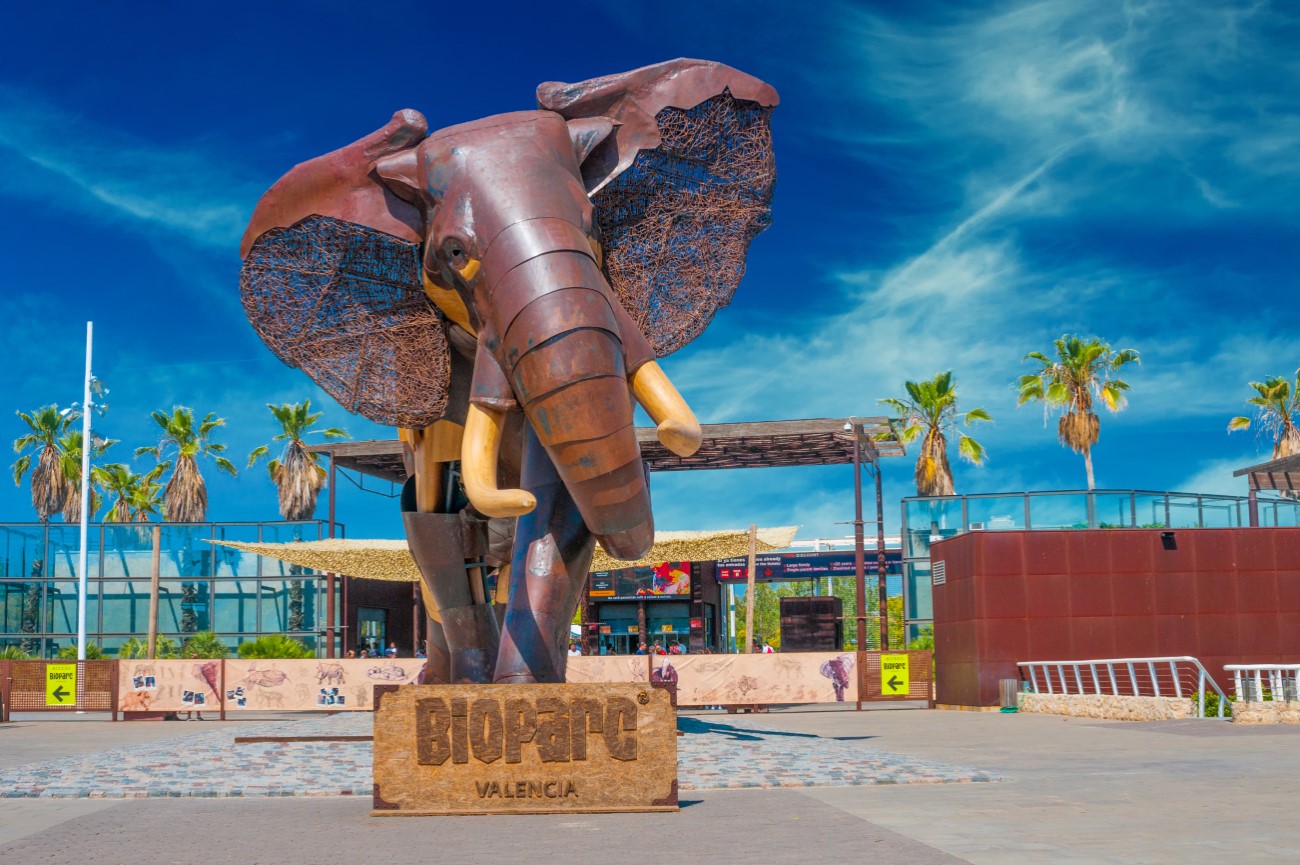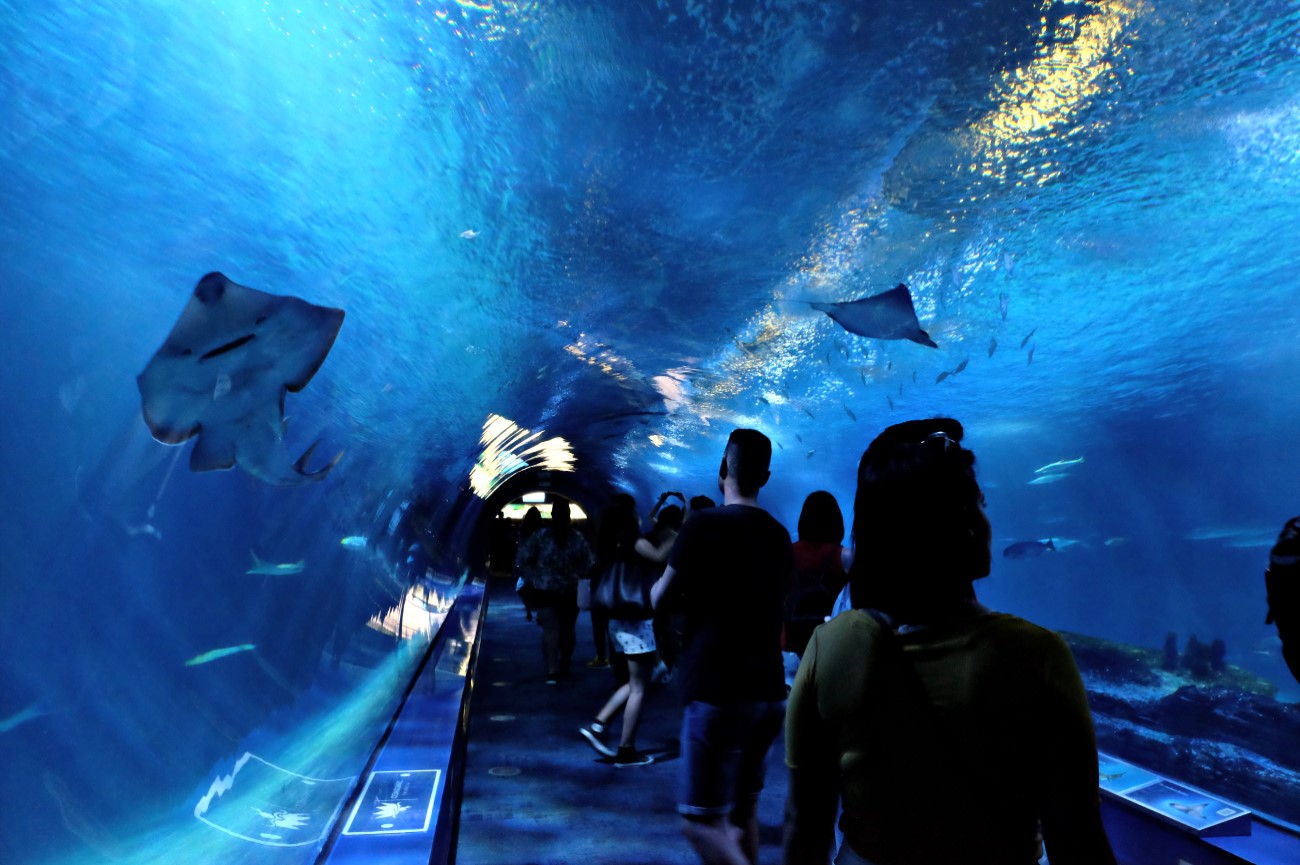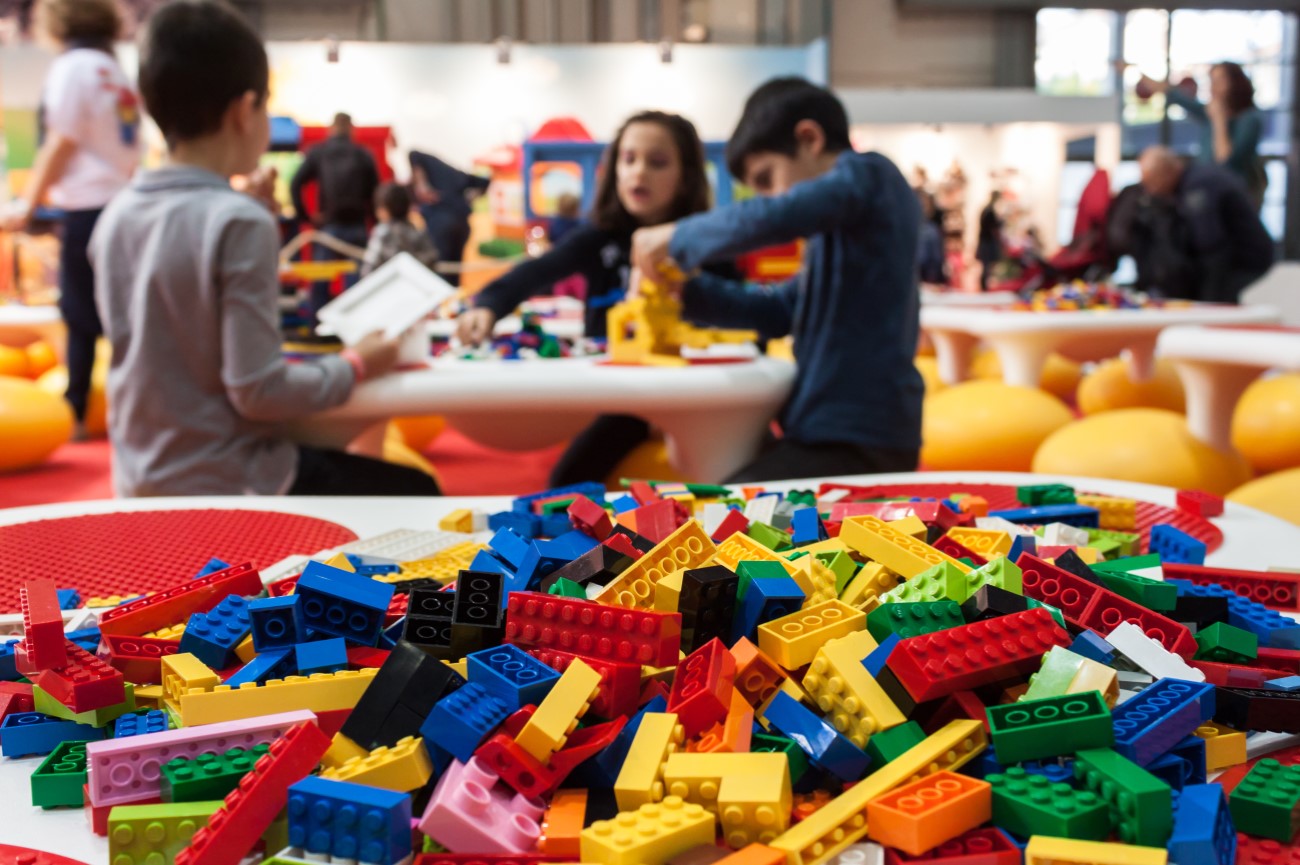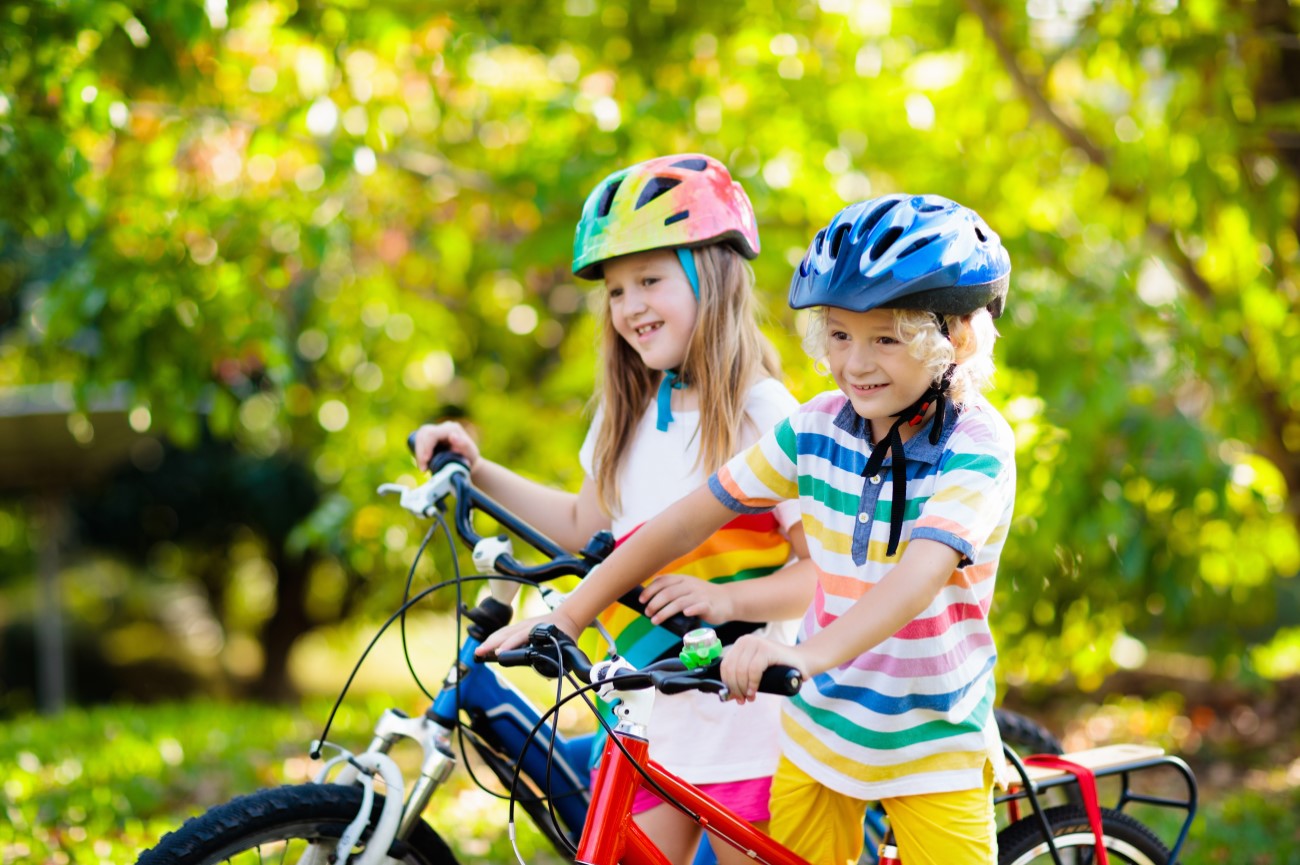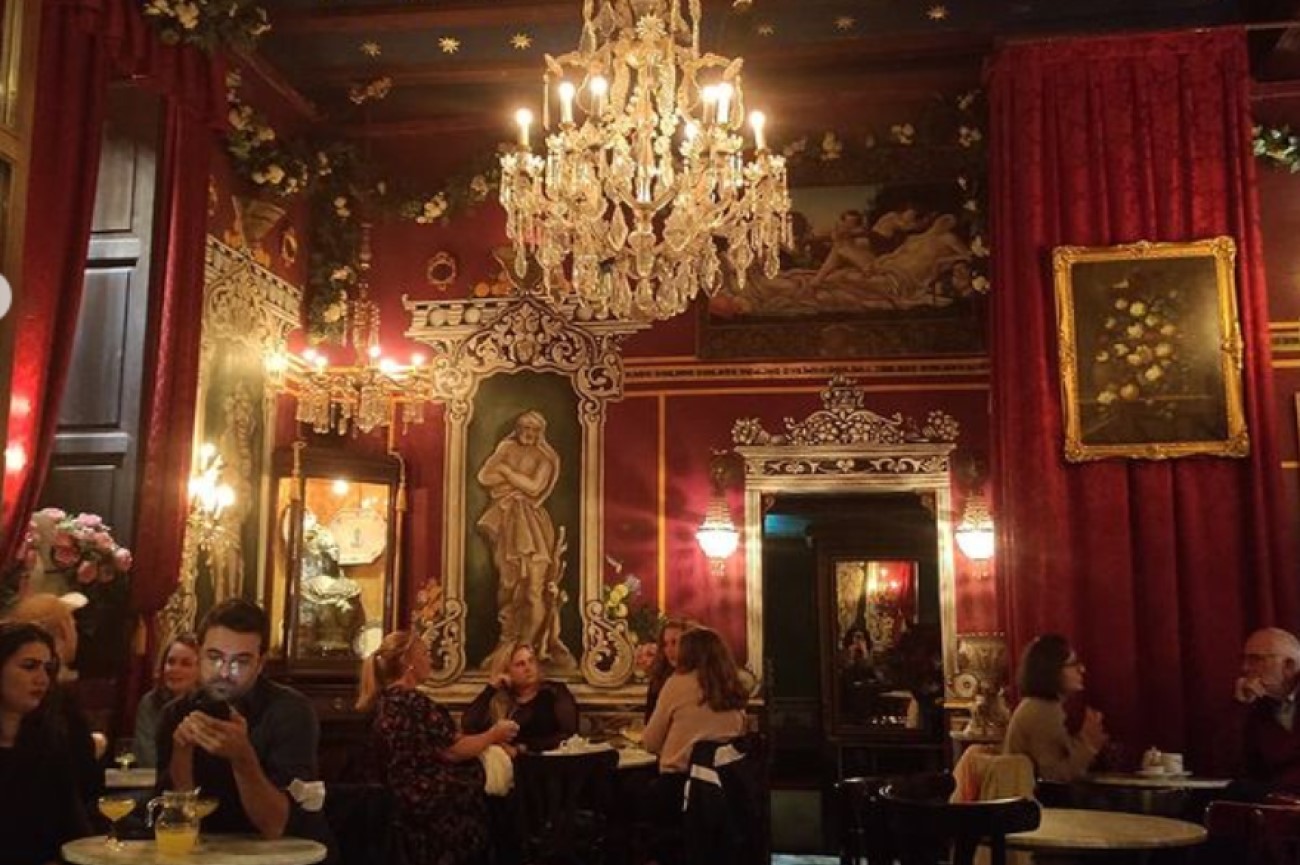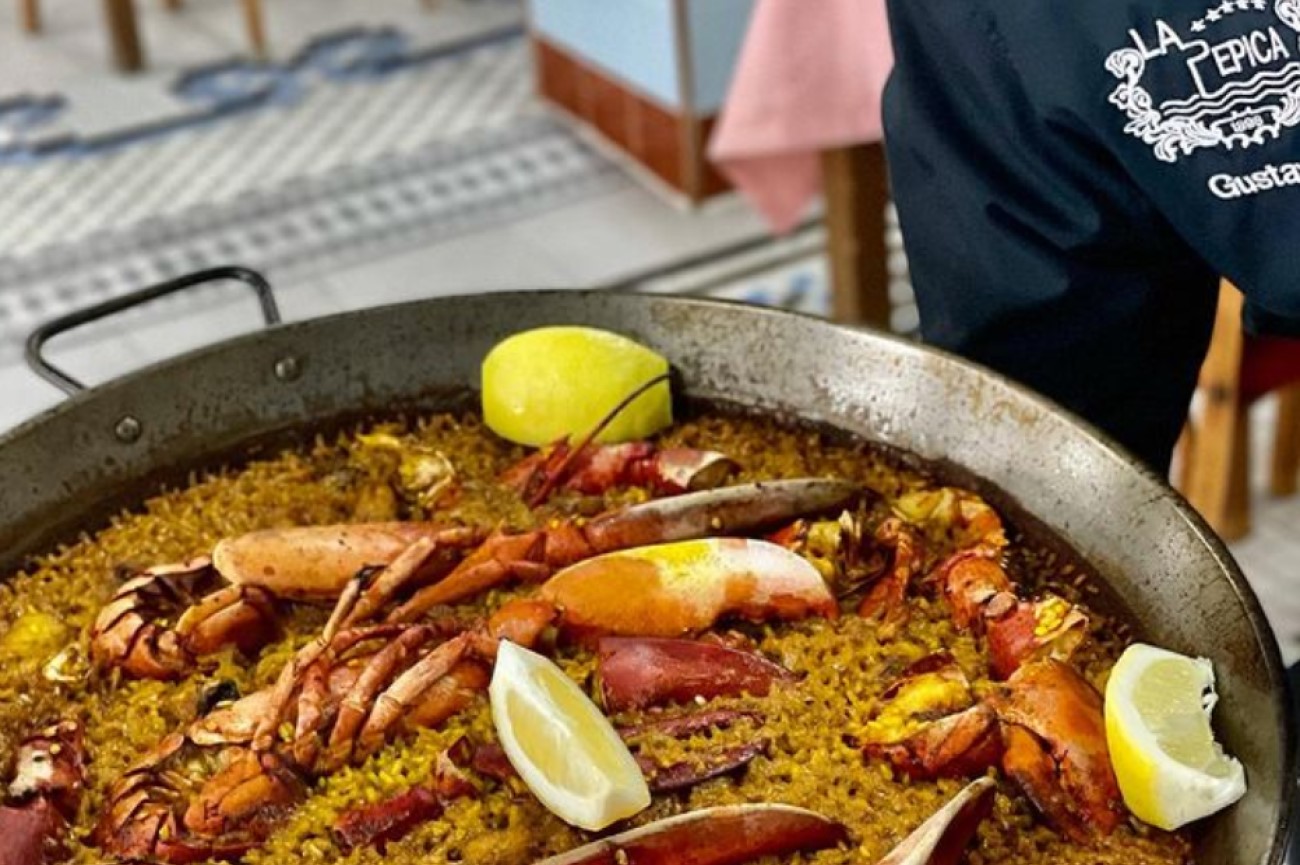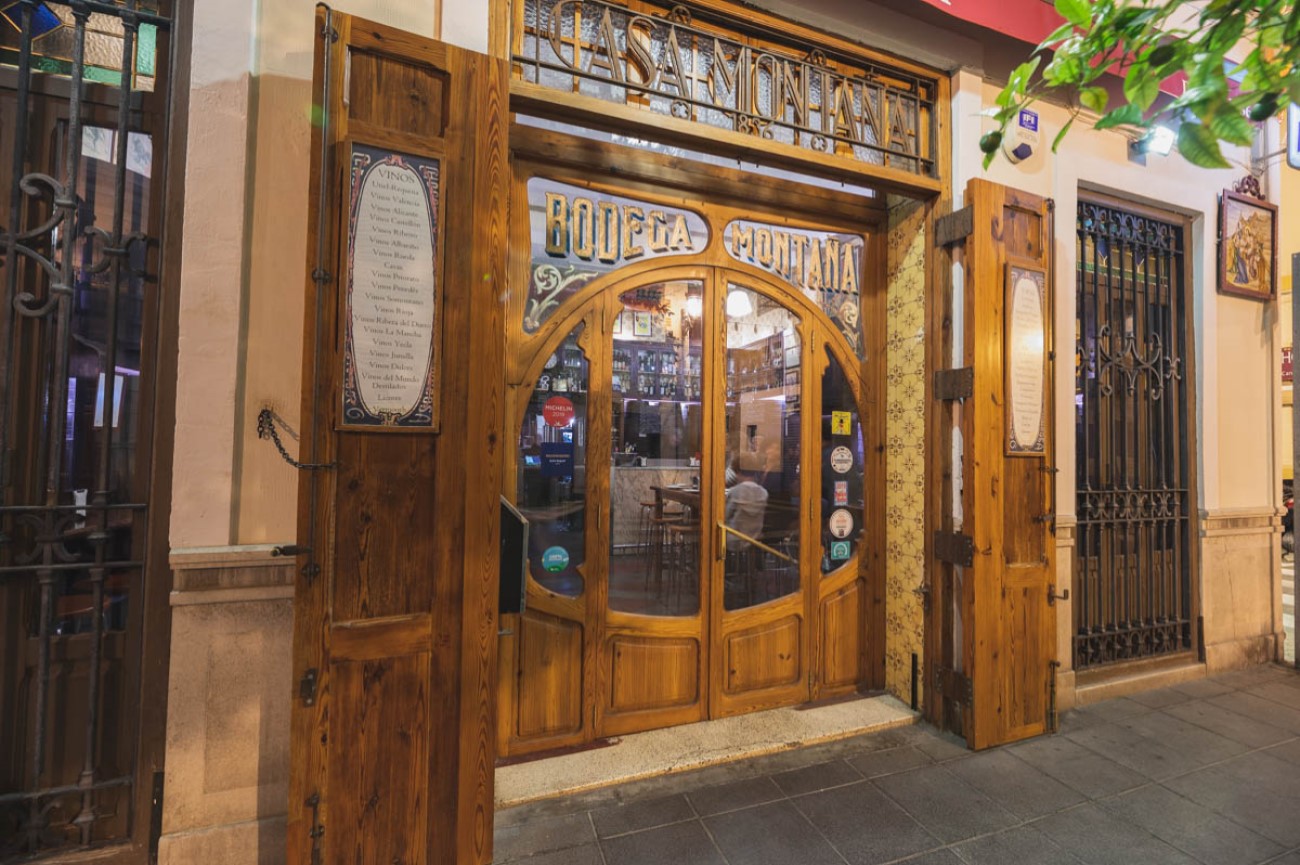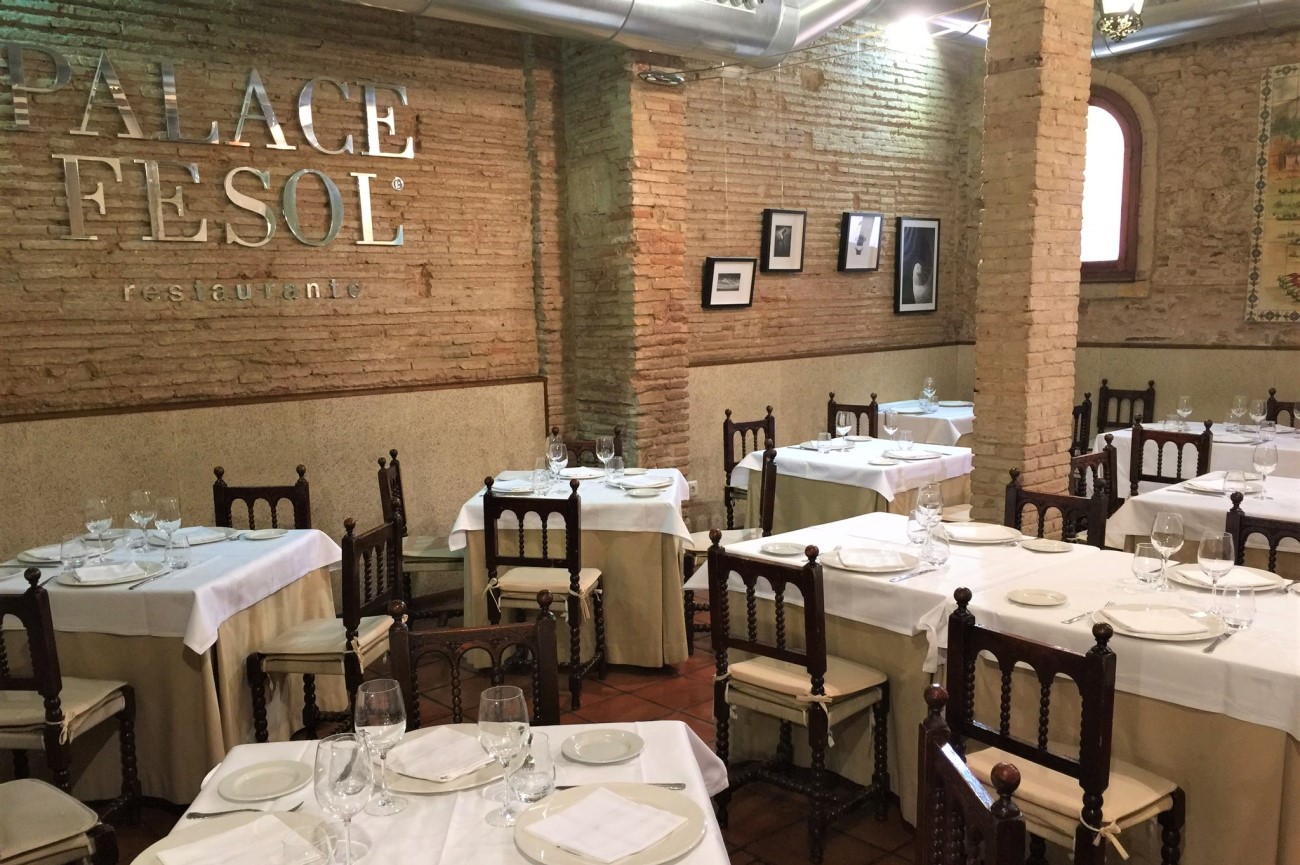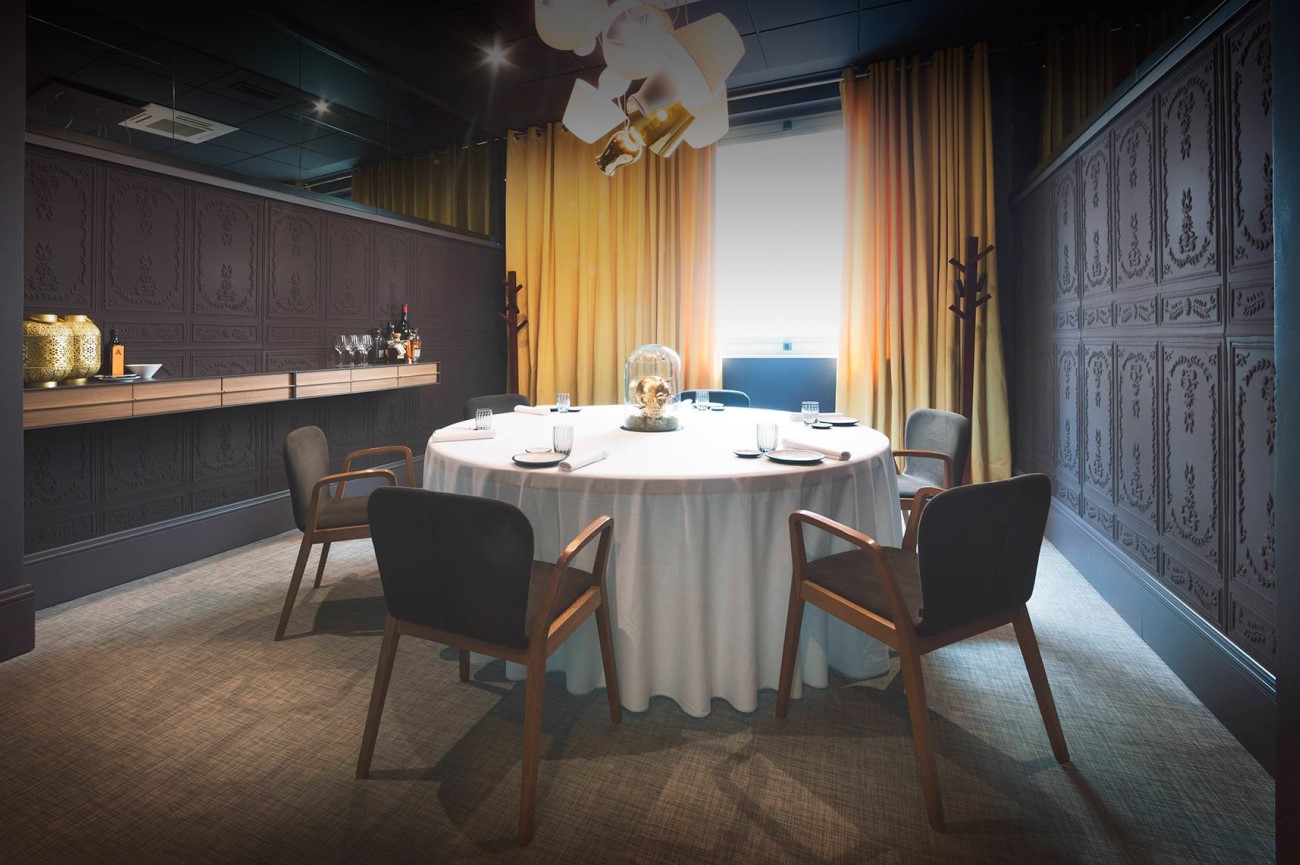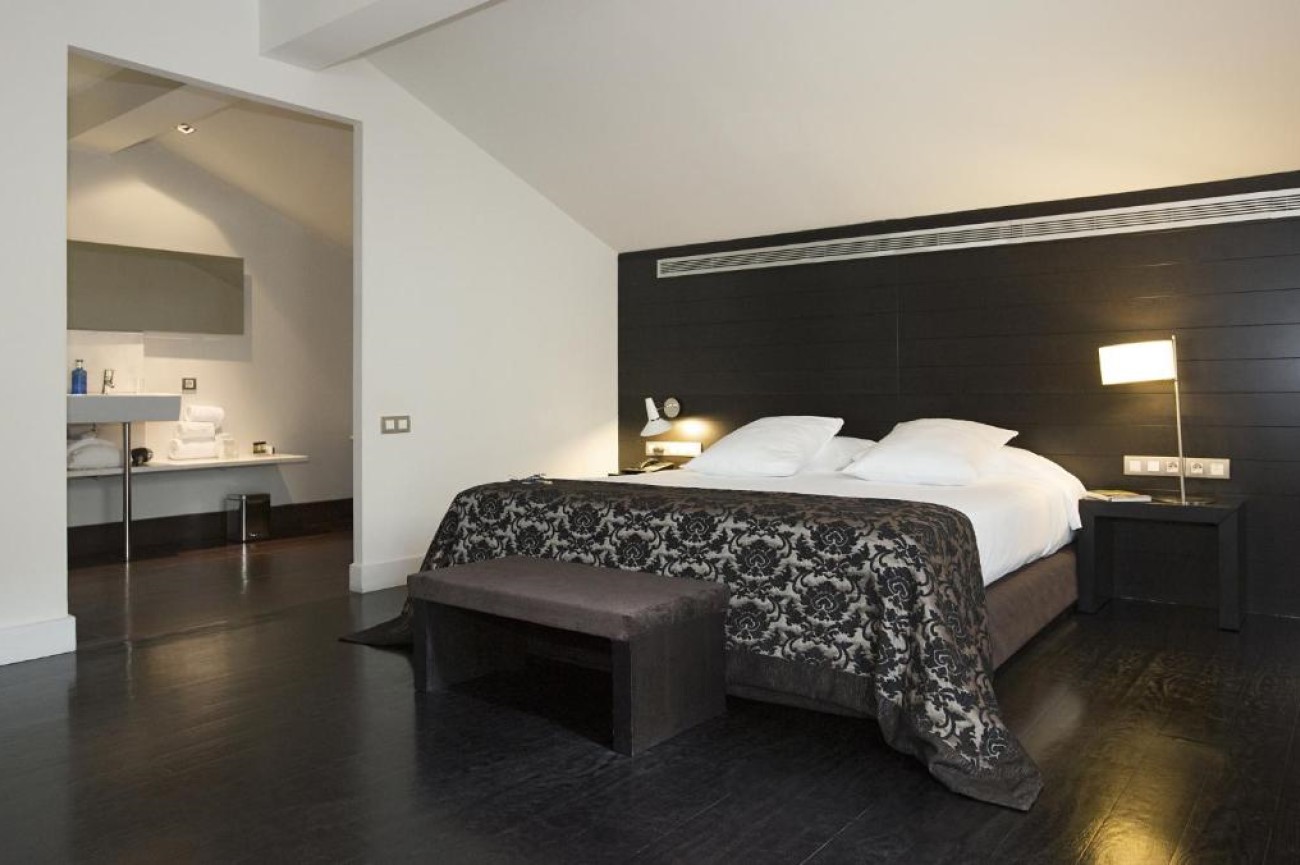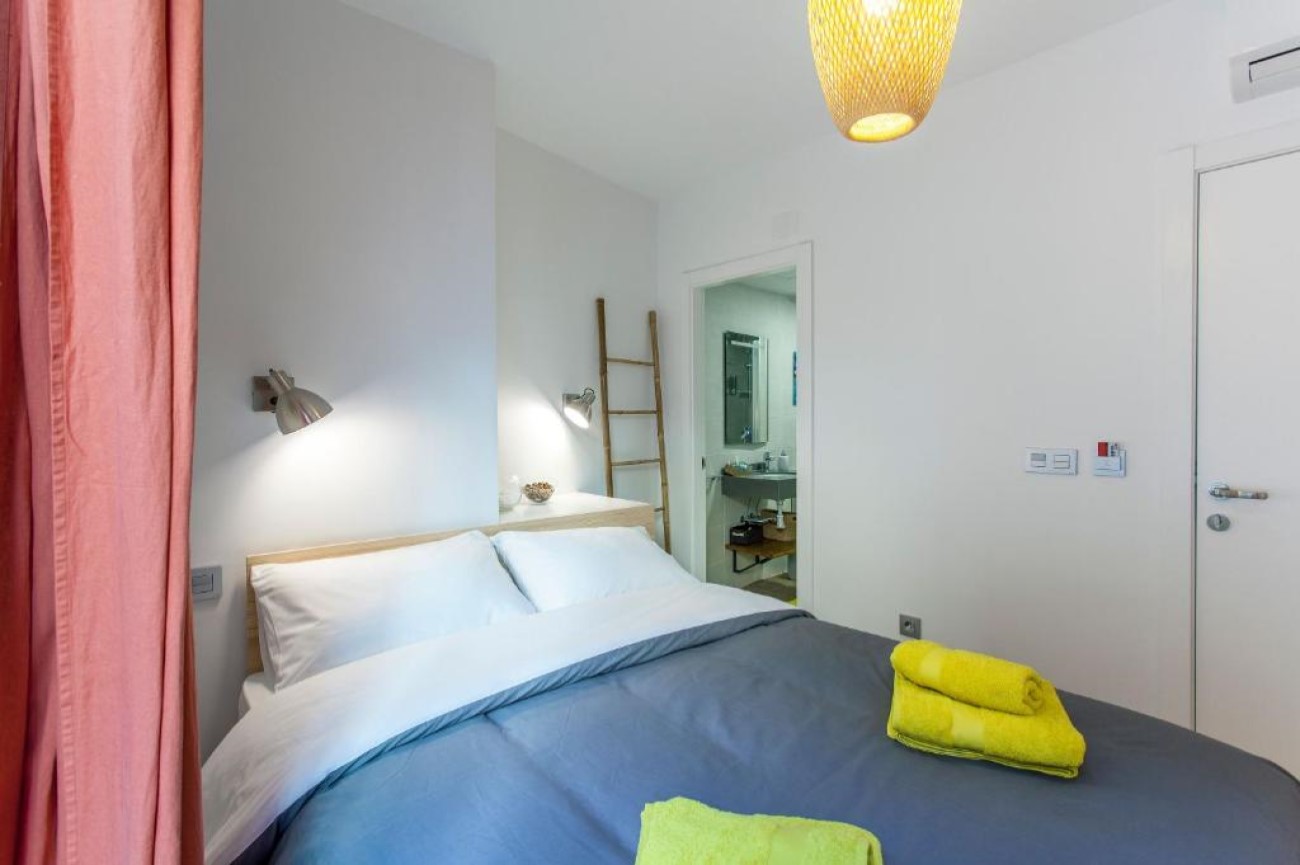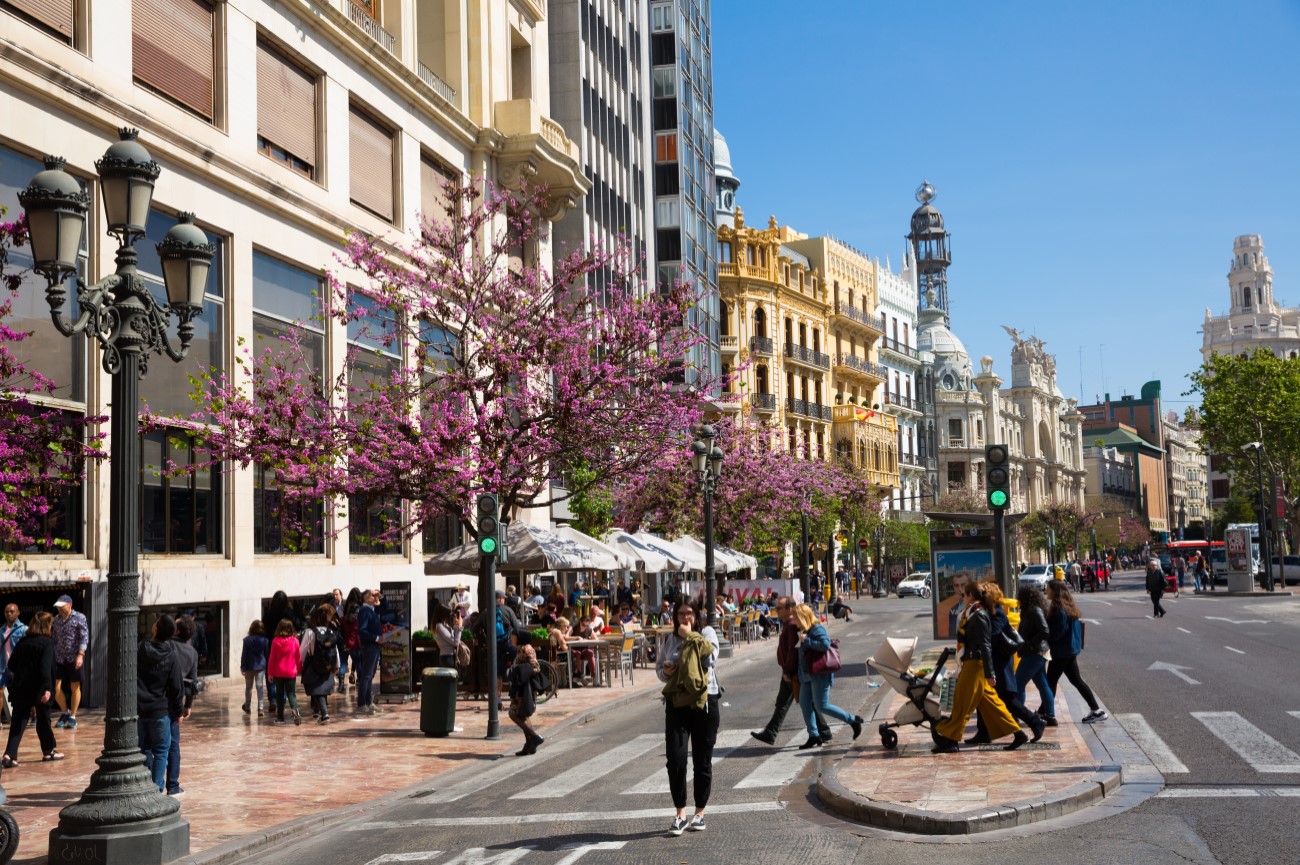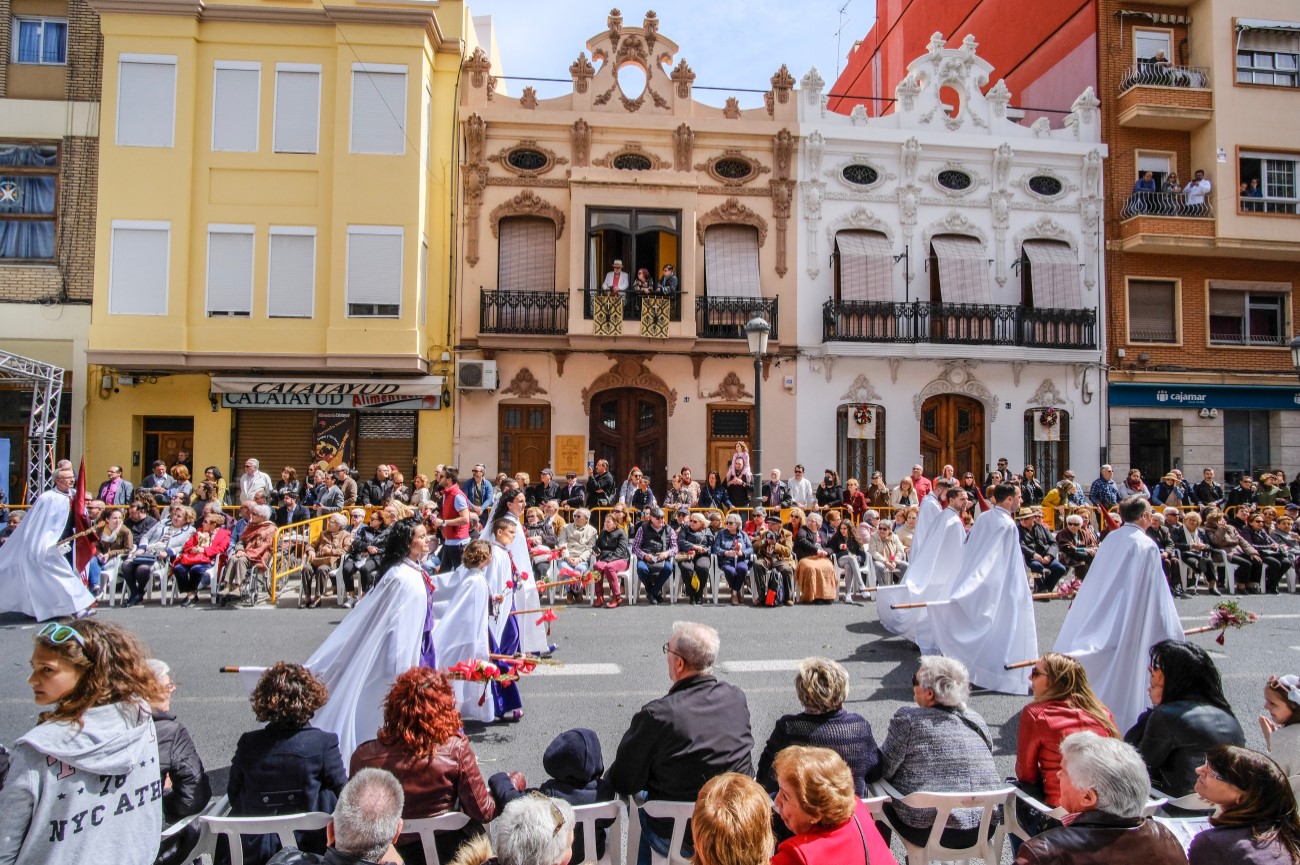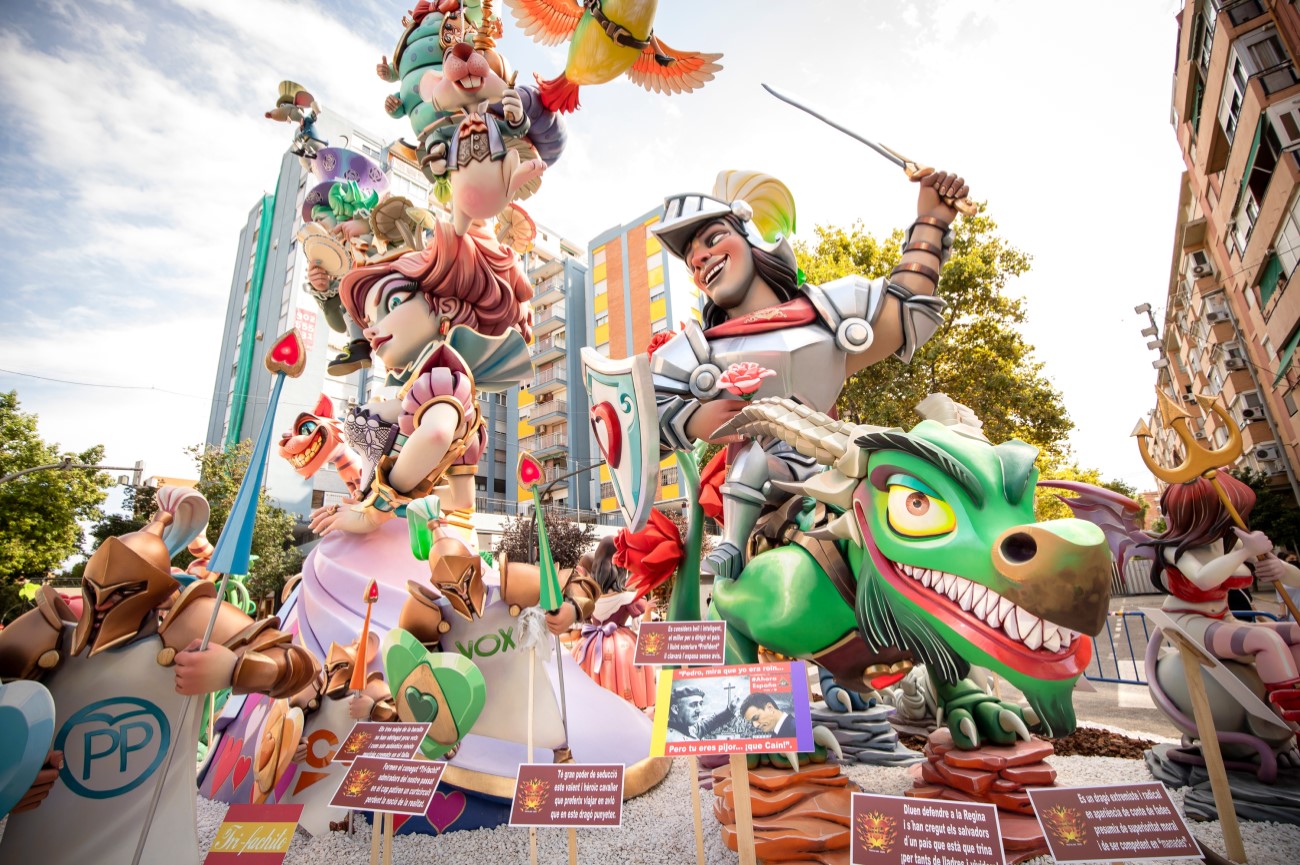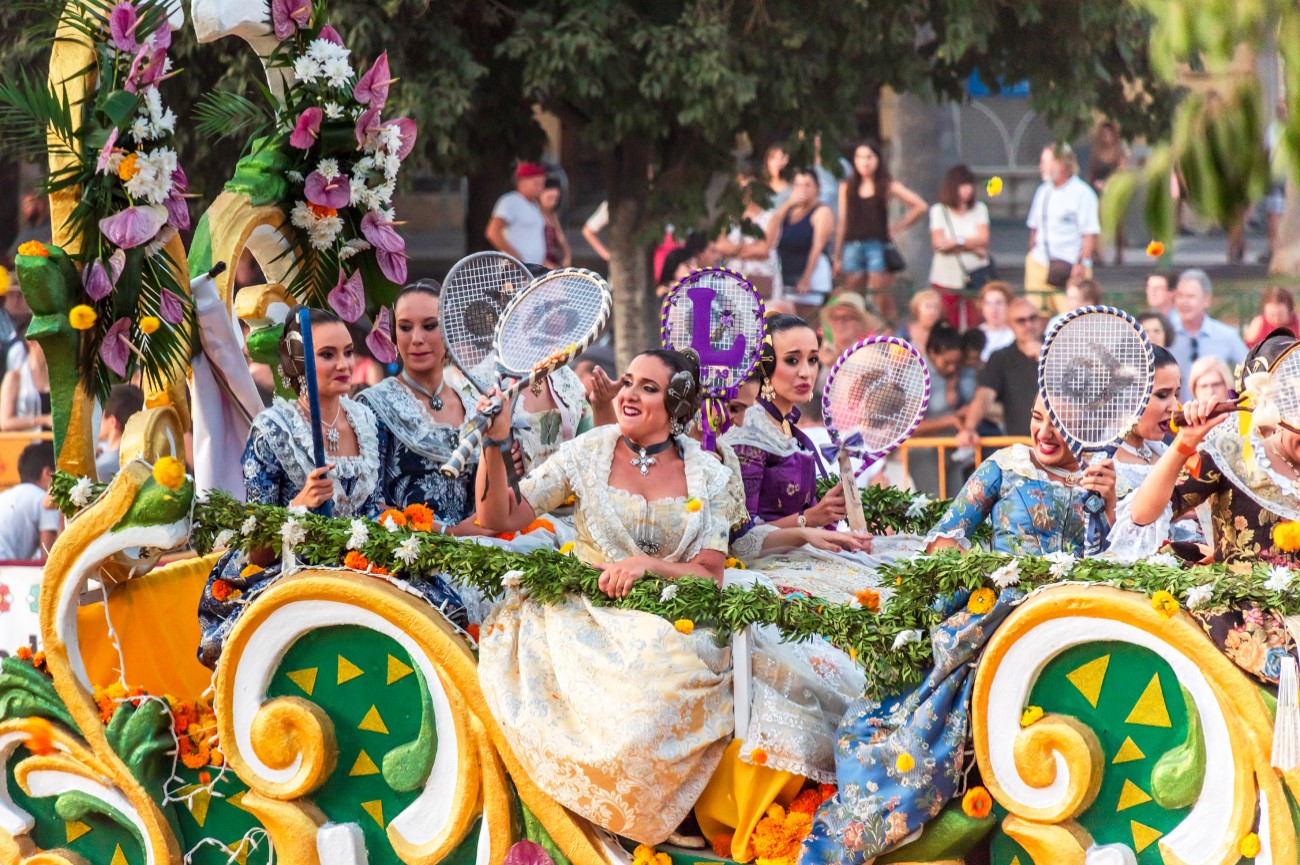Things to do in Valencia, Spain: 3-day itinerary
Historical monuments, futuristic buildings and paradisical beaches form the landscape of Valencia, Spain’s third-largest city. Overlooking the Mediterranean sea, this coastal city is renowned for its paella, but there’s much more to sample here.
You can wander through its charming old town, admire the churchs’ dazzling interiors or spend days visiting monuments and museums that recall its rich aristocratic past.
Join us as we explore the best things to do in Valencia in this three-day itinerary. We’ve covered all the main attractions, but also left recommendations of where to eat and where to stay, so you can make the most of your visit.
Day 1

Morning: Nord Railway Station
Even if you’re not catching a train in Valencia, you should stop by the Nord Railway station. Valencian architect Demetrio Ribes designed this stunning Art Nouveau building in the early 1900s. It follows the Vienna Secession movement, famous for combining straight lines with curved shapes. Outside, the façade stands out with its yellow walls and Valencian elements, including oranges, flowers and other agricultural motifs. The interior is equally impressive, with tile-covered rooms and the iron nave above the rails.
Plaza del Ayuntamiento
From the station, you can walk straight to the Plaza del Ayuntamiento. It’s the largest square in the city, surrounded by a series of historical buildings. These include the city hall and the central post office. You’ll also find a few flower stalls and a fountain that lits up at night. The square is always lively, but especially during the Fallas festival when the crowds gather here to see the burning of the last mascot.
Mercado Central
Our tour continues at Mercado Central, a traditional food market occupying a striking Modernist building. With 8,000 square metres, it has stalls spread across two floors. The interior combines a variety of materials, including iron, tiles, and stained glass windows. Visitors can enjoy more than 1,000 stalls, from fresh fruit and vegetables to spices and seafood. Make sure to also check the Central Bar, where you can sample tapas and sandwiches made with local ingredients.
Església de Sant Joan del Mercat
Just next to the market is the Església de Sant Joan del Mercat. This church occupied the site of a former mosque in the 13th century. However, it had to be reconstructed after two fires damaged it in the 14th and 16th centuries. The façade you see today is mostly Baroque and dates from the 1700s. The statue of the Virgen del Rosario stands out alongside the clock tower and the weathervane, nicknamed the bird of San Juan.
La Lonja de la Seda
La Lonja de la Seda, or simply La Lonja, is one of the most remarkable sites in Valencia. This civil gothic monument has been a Unesco site since 1996. The building was once used for silk trading, hence the name Silk Exchange, but now it’s open to all visitors. Valencian architect Pere Compte led the construction of La Lonja between 1482 and 1492, and after his death, one of his pupils took over. The building is mainly Gothic, but it does have a few Renaissance elements. Its fortress-style walls make it resemble a medieval castle, but it’s worth stepping inside to see the grand twisted columns of the Sala de Contratación or wander through the orange-tree patio.
Valencia Cathedral
The next stop is the city’s cathedral. This Gothic building and its bell tower have become an iconic symbol of Valencia. Construction began in the 13th century, but the church was only completed in the 17th century. As a result, it features a variety of architectural styles alongside its original Gothic elements. Outside, you can capture the Puerta del Palau with its Romanesque and Mudéjar features.
In the interior, don’t miss the Capilla del Santo Cáliz, a small ornate chapel featuring the 12 apostles. Also inside is the infamous Holy Grail, a cup dating back to the 1st century A.D. said to have been used during the Last Supper. Before you leave, make sure to climb up the bell tower, known as El Micalet, for a panoramic view of the city.
Plaza de la Virgen
Facing the back of the cathedral is the Plaza de la Virgen. This picturesque square was once the site of a Roman forum. Today it’s home to lively cafés and striking buildings such as the Basílica de la Virgen de los Desamparados and the Generalitat Palace, the headquarters of the Valencia government. In the middle of the square is a water fountain that represents the Turia river. Every Thursday around noon, you can witness the Water Tribunal in front of the cathedral’s Puerta de los Apóstoles. Dating back to the medieval era, it’s Europe’s oldest judicial institution and a Unesco Cultural Heritage.
Morning - Valencia Tour Map
Afternoon: Barrio del Carmen (Old town)
Spend the afternoon exploring the Barrio del Carmen, a neighbourhood that was once enclosed by medieval walls. Only a few things remain from that era, like the Serranos and Quart Towers. Beyond these two gates, visitors will encounter a maze of cobbled streets, churches and charming squares. Among these are Plaza del Carmen, Plaza del Árbol and Plaza del Tossal which comes alive at night.
Don't miss the Portal de la Valldigna, a 15th-century arch that once served as the entrance to the Arab quarter. Alongside these historical sites, the neighbourhood is also full of street art and contemporary museums, like the MUVIM or the IVAM.
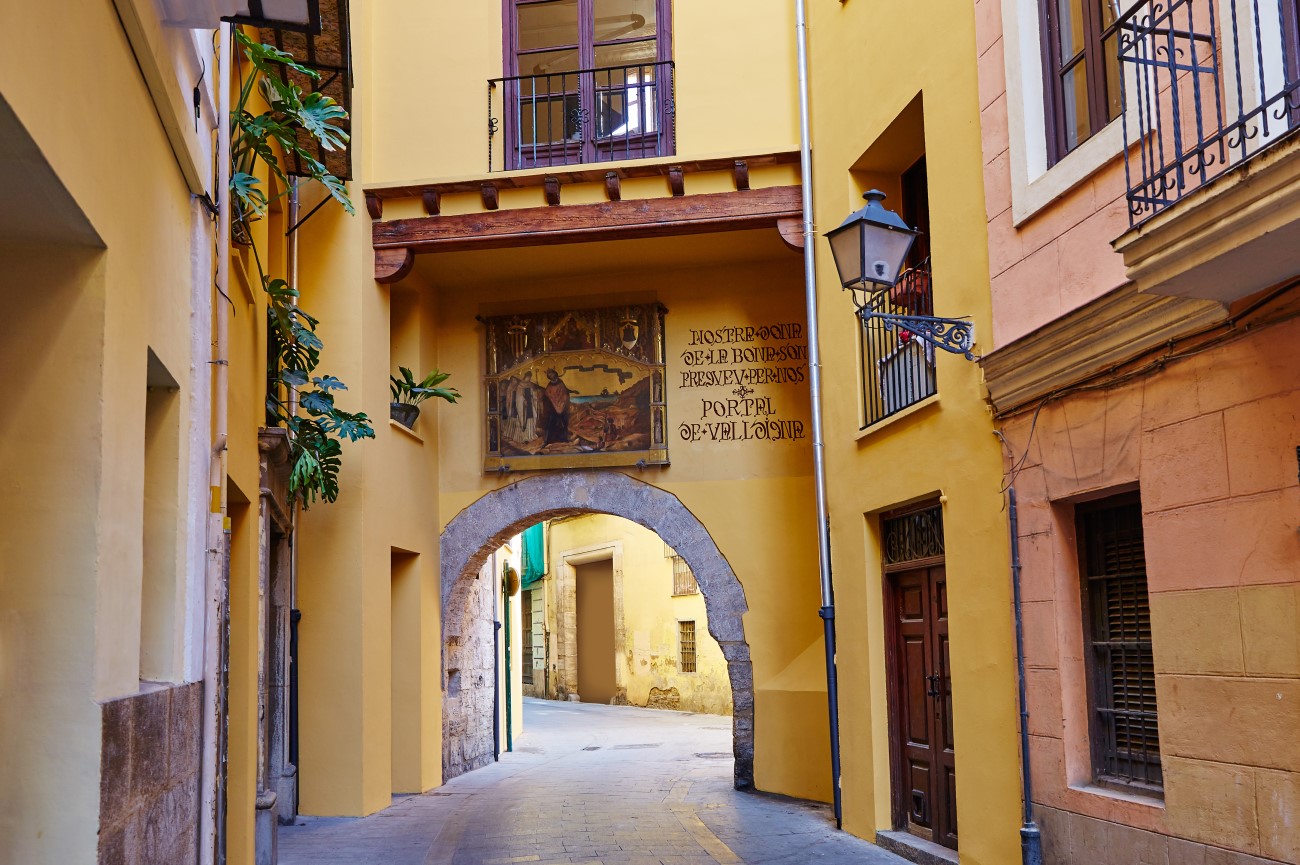 The Portal de la Valldigna, a 15th-century arch that once served as the entrance to the Arab quarter
The Portal de la Valldigna, a 15th-century arch that once served as the entrance to the Arab quarter
Iglesia de San Nicolás
One of the first Christian churches in Valencia, the Iglesia de San Nicolás dates back to 1242. Through the years, it has gone through several changes. This resulted in a mix of elements, from its Gothic vaulting to the Renaissance altarpieces. The highlight, however, is the Baroque fresco paintings adorning the ceilings. You can’t help but marvel at the ostentatious design depicting scenes from the life of San Nicolás de Bari and San Pedro Mártir.
Plaza de la Reina
From the church, take a walk down to Plaza de la Reina. Still within the old town, this picturesque square is lined with restaurants and cafés where you can sample horchata, like Horchatería Santa Catalina. From here, you can spot the cathedral and its iconic tower once again. Close by is the Plaza Santa Catalina, home to the Gothic-style church, Iglesia de Santa Catalina.
Museo Nacional de Cerámica
Housed inside an 18th-century palace, you’ll find the Museo Nacional de Cerámica. This national museum features one of Spain’s largest ceramic collections. It ranges from the 18th century to the modern era. Artist and historian Manuel González Marti donated most of the pieces on display, including works by Picasso. The building itself also stands out with its Baroque features.
Plaza Redonda
Valencia is home to many squares, but Plaza Redonda is, without a doubt, the most unique. The name Redonda comes from its circular structure, designed by Salvador Escrig Melchor in 1840. In 2012 the square was restored, and now it's a popular tourist attraction. Four streets converge into this plaza surrounded by residential buildings. Here you’ll find a series of tapas bars and craft shops and a central fountain, from which you can spot the tower of Santa Catalina. Nearby is the Plaza Lope de Vega. It’s here you’ll find one of the world’s narrowest buildings, which is little more than one metre wide.
Afternoon - Valencia Tour Map
Day 2

Morning: Túria Park
Begin your second day in Valencia exploring the Turia gardens. It’s one of the largest urban parks in Spain, stretching for nine kilometres. There are a series of footpaths, bridges, cafés and sports areas, perfect for cycling and running. The park was created in the 20th century on the riverbed of the Turia. Following a devastating flood in 1957, the river course got diverted, leaving this massive land empty. After that, landscapists and urban planners came together to recreate the new scenery you see today, featuring fountains, rose beds and orange trees. The park is also home to a series of other attractions, including the concert hall, Palau de la Música, and the City of Arts and Sciences, which we’ll get to soon.
Mercado de Colón
Before heading to the City of Arts and Sciences, take a detour to visit some of the city’s markets. In the Eixample district, you’ll find the Mercado de Colón, established in 1916. Inside, you can sample a series of traditional treats like horchata, visit restaurants or attend culinary events. The original Art Nouveau structure was envisaged by architect Francisco Mora Berenguer, with some elements recalling Gaudí’s designs. In 2003 the space went through a renovation which added even more shops.
Ruzafa
Close to Eixample is the neighbourhood of Ruzafa. In recent years, this area has become a magnet for the local artsy crowd. It's home to indie art galleries, vintage shops and many spots for tapas and drinks. While you’re here, don’t miss a visit to the Mercado de Ruzafa, a traditional food market selling fresh produce and charcuterie.
City of Arts and Sciences
Contrasting against Valencia’s historical sites is the futuristic City of Arts and Sciences. Designed by architects Félix Candela and Santiago Calatrava, this large complex features six attractions, each with distinct shapes and structures. There’s the Umbracle, a walkway lined with trees, the Hemisfèric which works as a planetarium and an IMAX cinema, and the Museu de les Ciències Príncipe Felipe, an interactive science museum. The Reina Sofia Palace of the Arts welcomes many opera stagings, while the Ágora is a multipurpose space hosting several events. Finally, there’s the Oceanogràfic, the largest aquarium in Spain. It’s easy to spot the building with its curvy white structure and mirror façades. There are nearly 500 marine species here, from dolphins to sea lions and sharks. If you don’t want to pay an entry fee, you can stroll through the gardens and admire the architecture as you go along.
Afternoon: Valencia Beaches
In the afternoon, you can hop on a bus or cycle to one of Valencia’s beaches. The closest one to the centre is Playa del Cabanyal. From here, you can walk along the coast to discover even more beaches, like Malvarrosa and Patacona. Lining the promenade, you’ll find a series of restaurants and bars where you can stop for a drink or a taste of paella.
Marina
End the evening at the city’s marina, admiring the sea views and the sailing boats from one of its terrace bars. Many boat trips depart from here, including the ferry to Ibiza and Palma de Mallorca. Don’t miss the Edificio del Reloj with its stunning modernist façade.
Day 2 - Valencia Tour Map
Day 3

Morning: Monforte Garden
After two days of busy sightseeing, take it easy this morning by exploring some of the city’s parks and gardens. The first stop is the Monforte Garden. Between the trees and decorative shrubs, you’ll find picturesque walkways, statues and water fountains. In 1849, the Marquis of San Juan purchased this property and hired architect Sebastián Monleón Estellés to design the gardens, which have remained pretty much the same since then. It is even more beautiful in spring when the bougainvillaeas are in bloom. Inside the park, there’s also a rococo-style mansion.
Jardines del Real
Once part of the Royal Palace grounds, these gardens are the perfect spot for a stroll in Valencia. Locals also know it as Los Viveros as the space used to house a tree nursery. Today, you’ll find a charming landscape made of palm trees, spiral topiaries, sculptures and fountains. The park also gives access to the Museum of Natural Sciences and the Museum of Fine Arts. In the summer, it comes alive with events, including concerts and the city’s book fair.
Museum of Fine Arts
While you’re in Jardines del Real, it’s worth visiting the Museum of Fine Arts, one of the largest art galleries in Spain. Before it became a museum in 1946, this Baroque-style building had several purposes, from college to military academy and charity centre. Visitors today can marvel at the fine art collection inside, ranging from the 15th to the 19th centuries. Most of the works are by Valencian artists, such as Joaquín Sorolla, Vicente López and Juan de Joanes. There are also other artists on display, including famous figures like Goya, Velázquez and Van Dyck. Don’t miss the courtyard of the Vich ambassador, a charming courtyard dating back to the 16th century.
Cabecera Park
From the museum, you can either walk or get the bus to Cabecera Park. There are several attractions here, including an open-air auditorium and a lake with rental boats. It's also home to the Bioparc, the city’s zoo. Here you’ll find nearly 250 animal species, mostly from Africa, including elephants, rhinos, hippopotamuses and ostriches.
Afternoon: Albufera Natural Park
You can spend the afternoon relaxing by one of the city beaches again or, if you’re up to, catch a bus to the Albufera Natural Park. Between woodlands and paddy fields, this feels like a retreat from the city. If you want to try paella straight from the source, make sure to visit the town of El Palmar. After that, you can follow one of the many walking trails or rent a boat and sail through the large lake. There are also a few beaches along the nearby coast, like the Playa De La Devesa. It’s worth staying until sunset to enjoy some of the best views in Valencia.
Other things to do in Valencia
- Museum of the Patriarch: Set in the old town, this small museum is among the finest Renaissance buildings in Valencia. It features mainly religious art, including pieces by Caravaggio, El Greco and Pinazo, as well as some Flemish authors.
- Instituto Valenciano de Arte Moderno: Open since 1989, the IVAM is one of the oldest modern art centres in Spain. The permanent collection focuses on 20th-century art. It includes works from Valencian artists, as well as others from across the globe. Highlights include the sculptures of Julio González and the paintings of Ignacio Pinazo.
- Botanical Garden: A few minutes from the IVAM is the city’s botanical garden. It’s home to nearly 3,000 plant species, including cactus, tropical shrubs and palm trees. The garden is part of the University of Valencia and is still used for flora research.
- Almoina Archaeological Museum: This museum holds a series of archaeological remains related to the city’s past civilizations. The main attractions are the well preserved Roman baths and a Muslim courtyard.
- Bullring of Valencia: Like most cities in Spain, Valencia also has its own bullring. Established between 1850 and 1860, the building resembles the Roman Colosseum with its circular shape. It has a Neoclassical design envisaged by Valencian architect Sebastián Monleón Estellés.
- Museu Faller de Valencia: If you can’t make it to the Fallas festival in March, you should visit this museum. Inside you’ll find colourful mascot figures rescued from the city’s lively annual parade since 1934. Usually, they’re burned down, but every year a figure is saved for the museum.
- El Saler Beach: Just a few miles north of the Albufera Natural Park is El Saler Beach. It has a stunning natural surrounding framed by dunes and pine trees. After a swim here, you can enjoy a picnic or visit one of the nearby seafood restaurants.
Day trips from Valencia
- Requena: About one hour west of Valencia is the village of Requena. Most people come here to visit its wineries, but the town also has a rich history. During the height of silk production, it was a prosperous site, and the Colegio del Arte Mayor stands as a reminder of that era. Other attractions include Gothic churches and medieval monuments like the Alcazaba or the Torre del Homenaje.
- Sierra Calderona: Amid the provinces of Valencia and Castelló, you'll find this large natural park. The landscape features cluster pines but also a few oak trees. Visitors can follow a series of hiking trails that cross through the mountains. Also worth checking are the medieval towers in the village of Serra.
- Sagunto: Through the years, Sagunto was occupied by several civilizations. The Romans called it Saguntum, and you can still find traces of that era in places like the Roman theatre. Overlooking the town is a Moorish castle featuring both Roman and Iberian remains. Other noteworthy sites include the Jewish quarter, the Gothic church of Santa María and the City Hall. You can also visit some of the region’s beaches located next to the port a few miles east.
- Peñíscola: Part of the Castelló province, Peñiscola draws visitors with its sandy beaches and historical sites. Among them is a 13th-century castle that stands right above the coast, overlooking the Meditteranean. The town welcomes many lively events throughout the year and has been the site of several films and series like Game of Thrones. Nearby, you can explore the Sierra de Irta nature reserve, an ideal spot for hiking and mountain biking.
- Albarracín: Nestled amid the hills, Albarracín was once the capital of the Moorish kingdom, Taifa. Its medieval walls stretch beyond the centre and include sites like the Andador Tower. It’s worth getting lost in the old town, visiting places like the Plaza Mayor or the 16th-century Catedral del Salvador.
- Xàtiva: You can get a train from Valencia to the ancient town of Xàtiva. Here you’ll find many historical sites, including churches and fountains ranging from the Renaissance to the Baroque era. The highlight, however, is the town’s large castle, featuring 30 towers and four gates. It combines Iberian-Roman and Arab elements.
Top things to do with kids in Valencia
Valencia is the ideal destination for families. There are many child-friendly activities in the city, with plenty of outdoor alternatives. In the summer, the beach is an obvious choice. From the nearby beaches of Patacona and Malvarrossa to the ones further out like El Saler.
You can spend days exploring the city’s parks, most of which feature at least one playground. Don’t miss Gulliver Park, with its slides and tunnels made around a giant statue of Gulliver.
Kids will also love Bioparc, a large savannah-like zoo within the Cabecera park.
You can rent pedalos around the park’s lake or canoes near the City of Arts and Sciences. It’s around here that you’ll find the Oceanogràfic. In this aquarium, kids can spot a variety of species, including dolphins, penguins and sharks. There’s also an interactive museum and an IMAX theatre nearby.
Lego fans might prefer a visit to the Lego Fun Factory inside the Aqua Shopping Center. The 250-metre space has separate areas for young and older kids.
Overall, the city is pretty flat, so you can walk pretty much anywhere or rent a bike and cycle through the parks and promenades.
Where to eat in Valencia
Many dishes in Valencia revolve around rice. After all, this is the birthplace of paella. You can find this dish all over the city, but especially along the waterfront. Other famous rice meals include the arros al forn, an oven rice dish mixed with sausages, potatoes, tomatoes and chickpeas. For a sweet treat, try the fartons, a sponge cake made with milk, sugar and eggs.
There are also traditional drinks such as aqua de Valencia, a cocktail made with orange juice, vodka, gin and cava, and the horchata, a drink resembling milk made out of tiger nuts. Local markets, paella restaurants and fine dining spots, below are the best places to eat in Valencia:
Mercado Central: For a sample of Valencia’s cuisine, make sure to visit Mercado Central. This local food market houses a variety of stalls selling anything from cured ham to fresh seafood and baked goods. Beyond the fresh produce, there’s also a bar run by chef Ricard Camarena, serving delicious tapas, such as the buñuelos de bacalao (codfish cakes).
Tapas Bars and Traditional Restaurants
- Cafe de las Horas: This café in the old town is one of the best spots to sample the city’s staple cocktail, aqua de Valencia. While you wait, you can admire the Victorian style decor with red curtains, chandeliers and a star-painted ceiling.
- La Pepica: Just a few steps from the beach is the century-old restaurant, La Pepica. For years, people have come here to sample their paella dishes. The portion is huge, so make sure to bring company if you want to get through it.
- Gallina Negra: Urban art decorates the walls of this innovative restaurant in the El Carme neighbourhood. The house chefs trained with Ricard Camarena until they decided to make it on their own. On the menu, there are creative dishes with influences from the Mediterranean, Asia and Latin America.
- Casa Montaña: Established in 1836, this traditional tavern is famous for its tapas and wine selection. Grab a seat amid the large wine barrels and enjoy a selection of dishes. Highlights include the fava beans and the anchovies.
- Palace Fesol: You'll find this local restaurant close to the Mercado de Colón. The menu features traditional Valencian meals, like the all i pebre (garlic and pepper stew), plus a variety of rice dishes.
Fine Dining Restaurants
- Ricard Camarena: Run by the infamous Valencian chef, this restaurant has earned two Michelin stars, plus a green star for its sustainability practices. The tasting menus feature Mediterranean influences and change with the season.
- El Poblet: This Michelin-star restaurant is located a few steps from Plaza del Ayuntamiento. Chef Quique Dacosta curates his menu around Valencian ingredients, mostly sourced from the local markets. Visitors can pick one of the set tasting menus or tailor their own.
Where to stay in Valencia
- Caro Hotel (5 stars): Occupying a former palace, this five-star hotel is only a short distance from the city’s main attractions, including the cathedral and La Lonja. The building itself also has its historical features, from the Gothic walls to the Roman basement. During their stay, guests can enjoy a swim in the outdoor pool and a fine dining meal at the hotel restaurant.
- Hospes Palau de la Mar (5 stars): This luxurious hotel sits pretty close to the Turia Gardens. Every room has a modern design, and some feature small balconies. Facilities include a restaurant, a bar, a courtyard garden and a spa with a jacuzzi and sauna.
- Hotel Vincci Mercat (4 stars): Set in the old town, the Vincci Mercat offers 68 rooms. You can spend your time by the rooftop pool overlooking the city or relax with a drink at the hotel’s lounge bar.
- City Garden B&B (3 stars): You’ll find this bed and breakfast amid the hip Ruzafa neighbourhood. Every room has a street view or a balcony with a sitting area. There’s also a charming shared patio surrounded by plants.
Best time to visit Valencia
The best time to visit Valencia is during spring, between April and May. You can still enjoy much of the warm climate, but with fewer crowds than in the summer. Any time between spring and summer is great for a swim. These are also the seasons of many local festivals, so you can time your visit according to that too. The weather is pretty consistent all year round, so it’s hard to go wrong. In winter, some places might close earlier, but you’ll also find fewer tourists. February is the ideal time to catch the almond and orange trees in bloom.
Valencia Festivals
- Semana Santa: Around Easter, Valencia welcomes the Semana Santa. This festival is celebrated all over Spain and Valencia is no exception. There are several religious events, especially around the waterfront. Highlights include the Procession of Placing in the Tomb, the Gathering of the Palms and the Resurrection Cavalcade.
- Fallas Festival: Las Fallas is one of the wildest festivals in Valencia, if not the whole of Spain. The party kicks off on March 1st with the launching of firecrackers at Plaza del Ayuntamiento. But most of the activities take place in the second week of March. Every year local artists come together to create the fallas, giant figures made of paper-maché. These parade across the city before the big firework display on March 19th, where people burn them down. Only the favourite one survives and makes it to the Museu Faller. The whole city comes alive with street parties, concerts and paella competitions.
- Feria de Valencia: This city fair celebrates the best of Valencia in one month. Hosted in July, it includes several activities, from concerts to shows and plenty of fireworks. Some of the main events include the Certamen de Bandas, an international brass band competition, the bullfighting festival and the Battle of the Flowers, which wraps up the festival.


